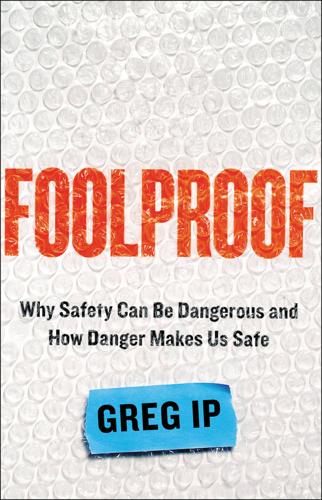
Foolproof: Why Safety Can Be Dangerous and How Danger Makes Us Safe
by
Greg Ip
Published 12 Oct 2015
Edmund Phelps had the same insight as Milton Friedman on the relationship between inflation and employment around the same time. 25 Hyman Minsky was born in: For details of Minsky’s life and work I have drawn on Minsky’s own writings, in particular Stabilizing an Unstable Economy (New Haven: Yale University Press, 1986); Dimitri Papadimitrou’s Essays in Memory of Hyman Minsky (Palgrave Macmillan), in particular Steven Fazzari’s “Conversations with Minsky” and Papadimitrou’s “Minsky on Himself”; Papadimitrou and Randall Wray, “The Economic Contributions of Hyman Minsky: Varieties of Capitalism and Institutional Reform,” in Review of Political Economy 10, no. 2 (1998), 13. 26 Because the financial system: From Hyman Minsky, “Central Banking and Money Market Changes,” in The Quarterly Journal of Economics 71, no. 2 (1957), 171–187. 27 Eric Falkenstein: Falkenstein gave his recollections in his blog post “Minsky a Keynesian Sock Puppet,” September 14, 1999, http://falkenblog.blogspot.com/2009/09/minsky-keynesian-sockpuppet.html, and in an interview with the author. 28 He predicted the crash: From Hyman Minsky, “Why 1987 Is Not 1929,” available at http://digitalcommons.bard.edu/hm_archive/217/. 29 yet the economy had chugged along: Paul Krugman, C.
…
Edmund Phelps had the same insight as Milton Friedman on the relationship between inflation and employment around the same time. 25 Hyman Minsky was born in: For details of Minsky’s life and work I have drawn on Minsky’s own writings, in particular Stabilizing an Unstable Economy (New Haven: Yale University Press, 1986); Dimitri Papadimitrou’s Essays in Memory of Hyman Minsky (Palgrave Macmillan), in particular Steven Fazzari’s “Conversations with Minsky” and Papadimitrou’s “Minsky on Himself”; Papadimitrou and Randall Wray, “The Economic Contributions of Hyman Minsky: Varieties of Capitalism and Institutional Reform,” in Review of Political Economy 10, no. 2 (1998), 13. 26 Because the financial system: From Hyman Minsky, “Central Banking and Money Market Changes,” in The Quarterly Journal of Economics 71, no. 2 (1957), 171–187. 27 Eric Falkenstein: Falkenstein gave his recollections in his blog post “Minsky a Keynesian Sock Puppet,” September 14, 1999, http://falkenblog.blogspot.com/2009/09/minsky-keynesian-sockpuppet.html, and in an interview with the author. 28 He predicted the crash: From Hyman Minsky, “Why 1987 Is Not 1929,” available at http://digitalcommons.bard.edu/hm_archive/217/. 29 yet the economy had chugged along: Paul Krugman, C.
…
Still, he concluded, since the Great Depression, the federal government had erected firewalls between the financial system and the real economy where ordinary people worked and invested: the vast federal budget, deposit insurance, and, most important, an activist Federal Reserve: “It is now nearly inconceivable that there would be no active lender of last resort in time of crisis.” The next panelist, Hyman Minsky, a professor at Washington University in St. Louis, for decades had flogged an iconoclastic theory of business cycles that fellow scholars had largely ignored. Since the 1960s, he said, the authorities had staved off another depression by reacting to every crisis with some combination of government borrowing and Federal Reserve lending.
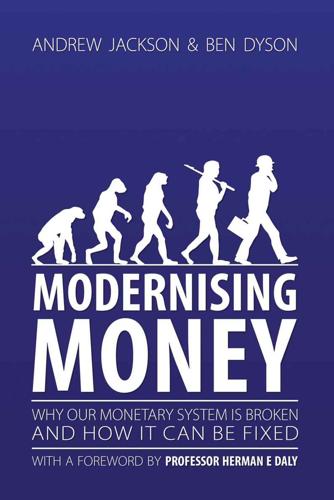
Modernising Money: Why Our Monetary System Is Broken and How It Can Be Fixed
by
Andrew Jackson (economist)
and
Ben Dyson (economist)
Published 15 Nov 2012
Chiefly, the long-run dynamic implications of credit creation were ignored, such as the self-reinforcing nature of asset price bubbles, the long run implications of increasing debt, the speculative behaviour of individuals and businesses, and the potential for recessions, depressions, financial crises and debt deflations. This section corrects that omission by outlining Hyman Minsky’s Financial Instability Hypothesis. Minsky’s Financial Instability Hypothesis Hyman Minsky developed the ‘financial instability hypothesis’ as an explanation of how financial crises are endogenously created by a modern capitalist economy. Minsky’s fundamental insight was that periods of stability led to greater risk taking and debt – that is, that stability was itself destabilising.
…
This book explores how the monetary system could be changed to work better for businesses, households, society and the environment, and lays out a workable, detailed and effective plan for such a reform. Our proposed reforms We have little hope of living in a stable and prosperous economy while the money supply depends entirely on the lending activities of banks chasing short-term profits. Attempt to regulate the current monetary system are unlikely to be successful – as economist Hyman Minsky argued, stability itself is destabilising. Indeed, financial crises are a common feature of financial history, regardless of the country, government, or economic policies in place: Crises have occurred in rich and poor countries, under fixed and flexible exchange rate regimes, gold standards and pure fiat money systems, as well as a huge variety of regulatory regimes.
…
Instead, they make loans by increasing their liabilities and assets in tandem, creating a new liability (the bank deposit i.e. the numbers that appear in the borrower’s account) and a new asset (the loan contract, signed by the borrower, promising to repay the same amount). This process will be described in detail later in the chapter. This is not however lending in the common sense of the word, as the act of lending implies that the lender gives up access to what is being lent for the duration of the loan. As economist Hyman Minsky puts it: “Banking is not money lending; to lend, a money lender must have money. The fundamental banking activity is accepting, that is, guaranteeing that some party is creditworthy. A bank, by accepting a debt instrument, agrees to make specified payments if the debtor will not or cannot.” (1986, p. 256) Because bank ‘lending’ increases the balance of the borrower’s bank account without decreasing the value of anyone else’s account, it increases the level of purchasing power in the economy.

The Shifts and the Shocks: What We've Learned--And Have Still to Learn--From the Financial Crisis
by
Martin Wolf
Published 24 Nov 2015
These are questions that naturally follow from both the historical record and the comparative success of the past thirty-five years. To answer these questions it is necessary to have an economic theory which makes great depressions one of the possible states in which our type of capitalist economy can find itself. Hyman Minsky, 19821 This book is about the way in which the financial and economic crises that hit the high-income countries after August 2007 have altered our world. But its analysis is rooted in how these shocks originated in prior shifts – the interactions between changes in the global economy and the financial system.
…
I was guilty of working with a mental model of the economy that did not allow for the possibility of another Great Depression or even a ‘Great Recession’ in the world’s most advanced economies. I believed that such an event was possible only as a consequence of inconceivably huge errors by bankers and regulators. My personal perspective on economics had failed the test set by the late and almost universally ignored Hyman Minsky. This book aims to learn from that mistake. One of its goals is to ask whether Minsky’s demand for a theory that generates the possibility of great depressions is reasonable and, if so, how economists should respond. I believe it is quite reasonable. Many mainstream economists react by arguing that crises are impossible to forecast: if they were not, they would either already have happened or been forestalled by rational agents.
…
But such a distinction is difficult to draw in practice – indeed, it emerges only after the consequences of failure become clear. Financial systems also generate credit booms and busts: this is the chief reason for the instability of market economies. The late and, until recently, disregarded Hyman Minsky, with whom this book began, described the broad features of such booms and busts.18 ‘A fundamental characteristic of our economy,’ wrote Minsky, ‘is that the financial system swings between robustness and fragility and these swings are an integral part of the process that generates business cycles.’19 Minsky identified five stages in a bubble: ‘displacement’ – a trigger event, such as a new technology or falling interest rates; ‘boom’ – when asset prices start rising; ‘euphoria’ – when investors’ caution is thrown to the wind; ‘profit-taking’ – when intelligent investors start taking profits; and ‘panic’ – a period of collapsing asset prices and mass bankruptcy.20 Displacement is an event that raises optimism, such as an innovation, access to new economic resources, or maybe a decline in the cost of funds.
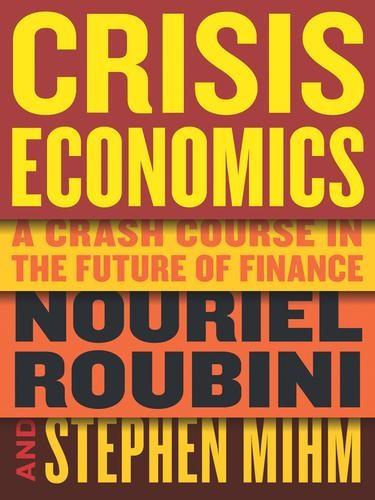
Crisis Economics: A Crash Course in the Future of Finance
by
Nouriel Roubini
and
Stephen Mihm
Published 10 May 2010
And Other Essays: Further Contributions to Modern Economics (Armonk, N.Y.: M. E. Sharpe, 1980), 34. 50 “Instability . . . is an inherent . . .”: Hyman Minsky, Stabilizing an Unstable Economy (New York: McGraw-Hill, 2008), 134. 50 “Implicit in [Keynes’s] analysis . . .”: Minsky, John Maynard Keynes, 11-12. 51 “The interposition of this veil . . .”: John Maynard Keynes, Essays in Persuasion (New York: W.W. Norton, 1963), 169. 51 Financial Instability Hypothesis: Hyman Minsky, “The Financial Instability Hypothesis: An Interpretation of Keynes and an Alternative to ‘Standard’ Theory,” and “The Financial Instability Hypothesis: A Restatement,” both in Minsky, Can “It” Happen Again?
…
To gain a more expansive way of viewing and understanding crises of the past, present, and future, one must go back to an earlier generation of economists. Chapter 2 introduces economic thinkers who can help us do just that. Some, like John Maynard Keynes, are reasonably well known; others, like Hyman Minsky, are not. Chapter 3 explains the deep structural origins of the recent crisis. From the beginning, it has been fashionable to blame it on recently issued sub-prime mortgages that somehow infected an otherwise healthy global financial system. This chapter challenges that absurd perspective, showing how decades-old trends and policies created a global financial system that was subprime from top to bottom.
…
Toward the end of 2008 the pandemic worsened, and the history of long-forgotten crises became increasingly relevant for explaining what was happening. So too did the writings of economists who had languished in obscurity for many years. John Maynard Keynes came back into vogue, as did Joseph Schumpeter, Hyman Minsky, Irving Fisher, and even Karl Marx. Their sudden reappearance was significant, if portentous: all had made their mark studying how capitalism could collapse in crisis. They may have drawn wildly different conclusions as to why and how, much less what to do about it, but the fact that their names were uttered with a quiet respect was a sign that a sea change was at hand.
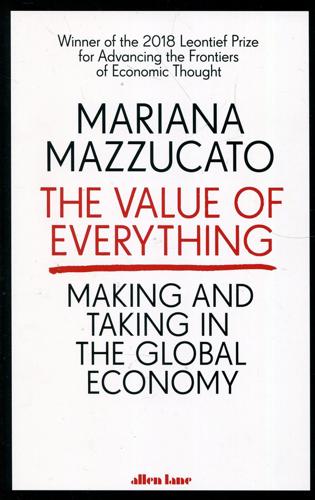
Value of Everything: An Antidote to Chaos The
by
Mariana Mazzucato
Published 25 Apr 2018
As we will see in the next chapter, neoclassical (mainstream) economics has fundamentally changed this idea of rent into one of imperfections and impediments - which can be competed away. All these issues have come to the fore again since the 2008 financial crisis. At their heart is how finance has been self-serving, and not actually serving what the American economist Hyman Minsky (1919-96) called the ‘capital development of the economy'.61 In other words, instead of facilitating industrial production, finance has simply degenerated into a casino, aiming to appropriate as much of the existing surplus as possible for itself.62 But whether that casino is seen as a mere imperfection or as a stable source of unearned income (whereby activities that are not creating value are somehow allowed to be presented a such) makes all the difference in policies that aim to reform the system.
…
Keynes also thought that the proceeds from such betting and speculating should go to the state to remove the incentive - a better word might be temptation - to reap private gains from it.24 He went on to stress the difference between this kind of speculation (value extraction) and finance for actual productive investment (value creation), which he saw as crucial for growth and which was only possible without the speculative apparatus around it. If ‘the capital development of a country becomes a by-product of the activities of a casino, the job is likely to be ill-done'.25 The US economist Hyman Minsky, who was much influenced by Keynes, wrote extensively about the self-destabilizing dynamics of finance. In his work on financial instability26 he nested Keynes's critique within an alternative theory of money. This theory, which began far from the mainstream but forced its way in when a bubble-bursting ‘Minsky moment' broke the long boom in 2008, holds that the quantity of money in an economy is created by the interplay of economic forces rather than by an outside agency such as a country's central bank.
…
In the US, the Federal Reserve embarked on three different QE schemes, totalling $4.2 trillion over the period 200814. In the UK, the Bank of England undertook £375 billion of QE between 2009 and 2012, and in Europe, the ECB committed € 60 billion per month from January 2015 to March 2017.27 Back in the mid-1980s, to try to prevent the banking system from moving to speculative finance, Hyman Minsky formulated an economic recipe that can be summarized as ‘big government, big bank'. In his vision, government creates jobs by being the ‘employer of last resort' and underwrites distressed financial operators' balance sheets by being the ‘lender of last resort'.28 When the financial sector is so interconnected, it is very possible for one bank's failure to become contagious, leading to the bankruptcy of banks all over the world.
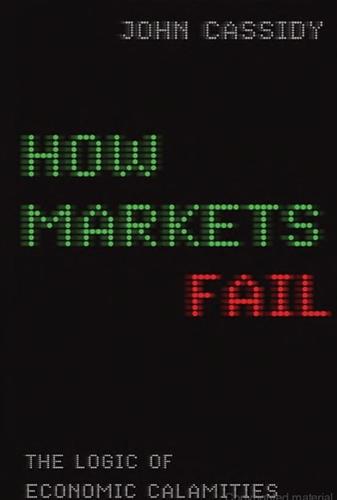
How Markets Fail: The Logic of Economic Calamities
by
John Cassidy
Published 10 Nov 2009
And if a homeowner with some spare cash sees the chance to make a quick killing by buying and flipping a condo in a new building that just went up across the street, he’ll be around there tomorrow morning to see the Realtor handling sales. 16. HYMAN MINSKY AND PONZI FINANCE In August 2007, shortly after the beginning of the subprime crisis, a story on the front page of The Wall Street Journal said, “The recent market turmoil is rocking investors around the globe. But it is raising the stock of one person: a little-known economist whose views have suddenly become very popular.” The economist concerned was Hyman Minsky, an avowed Keynesian who taught for many years at Washington University in St. Louis. From the early 1960s until shortly before his death in 1996, Minsky advanced the view that free market capitalism is inherently unstable, and that the primary source of this instability is the irresponsible actions of bankers, traders, and other financial types.
…
.”: Quoted in Cassidy, “Mind Games,” 34. 204 “It isn’t a wholesale . . .”: Quoted in ibid., 37. 16. HYMAN MINSKY AND PONZI FINANCE 205 “The recent market turmoil . . .”: Justin Lahart, “In Time of Tumult, Obscure Economist Gains Currency,” Wall Street Journal, August 18, 2007. 206 “To businessmen . . .”: Quoted in “Hyman P. Minsky,” in Philip Arestis and Malcolm C. Sawyer, eds., A Biographical Dictionary of Dissenting Economists (Cheltenham, UK: Edward Elgar Publishing, 2001), 412. Author’s note: Minsky wrote his own biographical entry. 207 “[T]he Wall Streets of the world . . .”: Hyman Minsky, Stabilizing an Unstable Economy (New York: McGraw-Hill, 2008), 4. 208 “leads to an expansion . . .”: Ibid., 199. 209 “Such loans impart . . .”: Ibid., 261. 209 “a spiral of declining investment . . .”: Ibid., 239. 209 “The first theorem . . .”: Hyman Minsky, “The Financial Instability Hypothesis,” Working Paper no. 74, Jerome Levy Economics Institute of Bard College, May 1992, 7–8. 210 “In a world with capitalist . . .”: Minsky, Stabilizing an Unstable Economy, 280. 212 “was part of the process that . . .”: Ibid., 265. 212 “Like all entrepreneurs . . .”: Minsky, “Financial Instability Hypothesis,” 6. 214 “The downside aspect . . .”: Paul Davidson, Financial Markets, Money and the Real World (Cheltenham, UK: Edward Elgar, 2002), 115–16. 215 “For a new era . . .”: Minsky, Stabilizing an Unstable Economy, 6. 216 Sweezy’s introduction to Marxist economics: Paul M.
…
The Triumph of Utopian Economics PART TWO: REALITY-BASED ECONOMICS 9. The Prof and the Polar Bears 10. A Taxonomy of Failure 11. The Prisoner’s Dilemma and Rational Irrationality 12. Hidden Information and the Market for Lemons 13. Keynes’s Beauty Contest 14. The Rational Herd 15. Psychology Returns to Economics 16. Hyman Minsky and Ponzi Finance PART THREE: THE GREAT CRUNCH 17. Greenspan Shrugs 18. The Lure of Real Estate 19. The Subprime Chain 20. In the Alphabet Soup 21. A Matter of Incentives 22. London Bridge Is Falling Down 23. Socialism in Our Time Conclusion Notes Acknowledgments Index Also by the Author INTRODUCTION “I am shocked, shocked, to find that gambling is going on in here!”
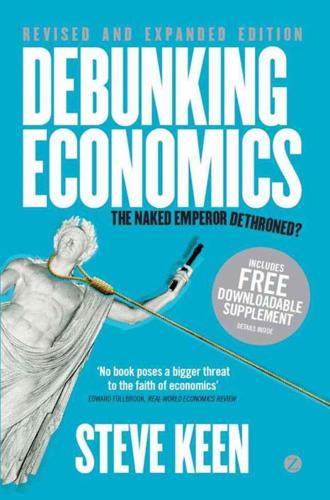
Debunking Economics - Revised, Expanded and Integrated Edition: The Naked Emperor Dethroned?
by
Steve Keen
Published 21 Sep 2011
In particular, why didn’t the ‘normal’ stabilizing mechanisms of the economy, such as the adjustment of wages and prices to changes in demand, limit the real economic impact of the fall in aggregate demand (the ‘aggregate supply puzzle’). (Ibid.: ix) However, from this point on, his neoclassical priors excluded both salient data and rival intellectual perspectives on the data. His treatment of Hyman Minsky’s ‘Financial Instability Hypothesis’ – which is outlined in Chapter 13 – is particularly reprehensible. In the entire volume, there is a single, utterly dismissive reference to Minsky: Hyman Minsky (1977) and Charles Kindleberger […] have in several places argued for the inherent instability of the financial system but in doing so have had to depart from the assumption of rational economic behavior.
…
The quaint belief that the conditions prior to the crisis – the so-called Great Moderation – had no connection with the events that followed shows that he has no idea as to what caused the Great Recession. Ultimately, the most apposite critique of Bernanke’s defense of the indefensible is to compare his position with that of the post-Keynesian economist Hyman Minsky. Minsky argued that, since crises like the Great Depression have occurred, a crucial test for the validity of an economic theory is that it must be able to generate a depression as one of its possible states: Can ‘It’ – a Great Depression – happen again? And if ‘It’ can happen, why didn’t ‘It’ occur in the years since World War II?
…
Chapter 12 (‘Misunderstanding the Great Depression and the Great Recession’) returns to macroeconomics, and considers the dominant neoclassical explanation of the Great Depression – that it was all the fault of the Federal Reserve. The great irony of today’s crisis is that the person most responsible for promoting this view is himself now chairman of the Federal Reserve. Part 3, ‘Alternatives,’ considers alternative approaches to economics. It has six chapters: Chapter 13 (‘Why I did see “It” coming’) outlines Hyman Minsky’s ‘Financial Instability Hypothesis,’ and my nonlinear and monetary models of it, which were the reason I anticipated this crisis, and why I went public with my warnings in late 2005. Chapter 14 (‘A monetary model of capitalism’) shows how a strictly monetary model of capitalism can be built remarkably simply, once all the factors that neoclassical theory ignores are incorporated: time and disequilibrium, and the institutional and social structure of capitalism.
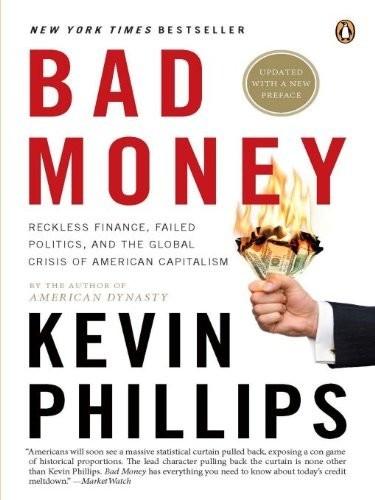
Bad Money: Reckless Finance, Failed Politics, and the Global Crisis of American Capitalism
by
Kevin Phillips
Published 31 Mar 2008
Basically, these economists concentrate on economic booms and what distorts them. Every boom, they say, comes from extraordinary credit expansion out of proportion to real economic growth. One Austrian School acolyte, Kurt Richebächer, had predicted just that unhappy fate for the U.S. housing bubble several years before his death during the summer of 2007. Hyman Minsky (1919-96), part Keynesian, part disciple of Joseph Schumpeter, became so well known for preaching the financial system’s vulnerability to speculation and risk that admirers labeled the August panic a “Minsky Moment.” Certainly the Austrian-Minsky fusion, so specific in its finger pointing, will rise or fall on the economic outcome of the next several years.
…
Back in 1977, Time had titled a lengthy essay on credit card issuers “Merchants of Debt” but had examined none of the bolder new financial products. Perhaps unknowingly, the magazine had adopted a phrase used in the 1930s by Joseph Schumpeter, an economist of the Austrian School, and then in the 1970s by Hyman Minsky. Both men argued that downturns evolved from financial and credit excesses. “Merchants of debt” was their epithet for banks and other financial entities that strove to market debt in as many (innovative) forms and to as many buyers as possible. The longer good times persisted—a description most of the last quarter century would fit—the more likely the financial sector was to be marketing unwise or risky products.6 The omissions and fallibilities of U.S. census and economic data are not a principal concern of this book.
…
The bank dismissed financial cheerleaders, recalling that “virtually nobody foresaw the Great Depression of the 1930s, or the crises which affected Japan and southeast Asia in the early and late 1990s. In fact, each downturn was preceded by a period of non-inflationary growth exuberant enough to lead many commentators to suggest that a ‘new era’ had arrived.”25 Economists tied to the Austrian School or admirers of the iconoclastic Hyman Minsky were almost beside themselves. In January 2007, Kurt Richebächer wrote that “measured by its level of indebtedness, today’s U.S. economy is the worst bubble economy in history.”26 Speaking to his shareholders in May, money manager David Tice, a Minskyite, deplored “the massive expansion of credit instruments—large swathes of which have little or no transparency but have nonetheless evolved into the speculative instruments of choice for a monstrous global leveraged speculator community.
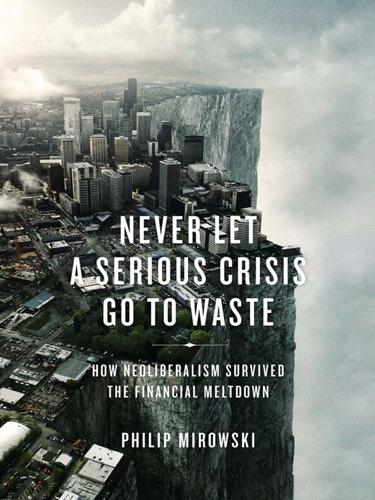
Never Let a Serious Crisis Go to Waste: How Neoliberalism Survived the Financial Meltdown
by
Philip Mirowski
Published 24 Jun 2013
Then, by the 1990s, by construction there was no longer any call for offering courses in philosophy or history of doctrine, since there were no economists left with sufficient training (not to mention interest) in order to staff the courses.20 Economists would periodically be sounding off in the most illiterate registers concerning Karl Marx, Vilfredo Pareto, Hyman Minsky, Adam Smith, or even John Maynard Keynes, because they were confident no one would ever call them to task on their shallow pretenses. Consequently, once the Great Mortification followed in the wake of the collapse of the Great Moderation, those occupying the commanding heights of the profession were bereft of any sophisticated resources to understand their predicament.
…
The Economist decided to ask roughly fifty handpicked economists to identify which economist had been most influential over the past decade, and which had proposed the most important ideas for a postcrisis world. The “most influential” list they compiled was Ben Bernanke, John Maynard Keynes, Jeffrey Sachs, Hyman Minsky, and Paul Krugman; the “most important ideas” roster was Raghuram Rajan, Robert Shiller, Kenneth Rogoff, Barry Eichengreen, and Nouriel Roubini.78 If you were a member of the orthodoxy back then, it is hard to see how these lists could be anything other than profoundly unsettling; if you are someone reading this book right now, then perhaps you will gaze upon them with existential nausea.
…
Ellington Capital is a hedge fund that specialized in mortgage-backed securities, so it seems safe to say Geanakoplos had a ringside seat at the grand defalcation that led to the current crisis. And indeed, when he talks in the vernacular about what has gone wrong in the financial industry, he tends to sound a bit like Hyman Minsky, which means he makes a fair bit of sense.104 However, his academic persona is one of the elite among general-equilibrium theorists of the purest water: so the aspect of his personality that draws our attention is—how does he manage to reconcile the two? Geanakoplos had a leg up on other economists because he did notice some pathologies of the mortgage market earlier on, and therefore had begun to concoct models well before the debacle of Bear Stearns and Lehman.
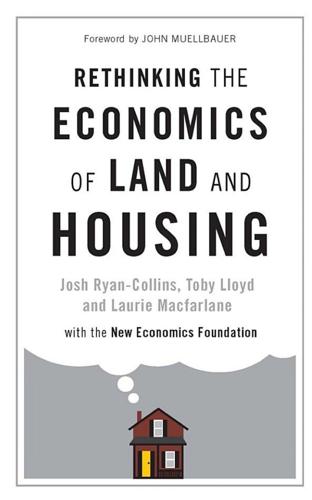
Rethinking the Economics of Land and Housing
by
Josh Ryan-Collins
,
Toby Lloyd
and
Laurie Macfarlane
Published 28 Feb 2017
The Bank of Japan maintained double-digit year-on-year credit growth quotas for banks to meet even as demand from the real economy subsided, fuelling an asset price spiral with investors eventually borrowing to meet the interest payments on outstanding loans – so-called ‘Ponzi financing’ (see Box 5.5). Box 5.6 Hyman Minsky: stability is destabilising Hyman Minsky was an American economist whose research focused on the origins of financial cycles and crises in capitalist economies.12 Minsky disagreed with neoclassical economics’ assumption that the economy was best understood as being in a state of long-run equilibrium, buffeted by short-term ‘shocks’ created by business cycles, with finance, credit and asset prices playing a largely insignificant role.
…
1.3 Landownership and economic rent 1.4 Summary of chapters 2 Landownership and property 2.1 Introduction 2.2 Landownership: origins of the theory and forms 2.3 Landownership as freedom: secure title and economic growth 2.4 Landownership as theft: power and economic rent 2.5 Hypothesis: property is liberty, property is theft 2.6 Responses to the ownership paradox 2.7 Conclusion 3 The missing factor: land in production and distribution 3.1 Introduction 3.2 Classical political economy: land and economic rent 3.3 Land tax or separation as a solution to the problem of economic rent 3.4 Neoclassical economics and the conflation of land with capital 3.5 Problems with the neoclassical account: fundamental differences between land and capital 3.6 Political reasons for the disappearance of land from economic theory 3.7 Land and socialism 3.8 Consequences of the conflation of land and capital today 3.9 Conclusion 4 Land for housing: land economics in the modern era 4.1 Introduction 4.2 The Industrial Revolution and the growth of cities 4.3 1900–1970: world wars and the golden age of capitalism 4.4 1970 onwards: the emergence of ‘residential capitalism’ 4.5 The new political economy of housing 4.6 Conclusion 5 The financialisation of land and housing 5.1 Introduction 5.2 House and land prices, income and bank credit 5.3 Mortgage finance, the ‘lifecycle’ model and the role of collateral 5.4 The history of mortgage and real estate finance in the UK 5.5 Macroeconomic effects of the liberalisation of mortgage credit 5.6 The property–credit nexus and financial fragility 5.7 Conclusion 6 Land, wealth and inequality 6.1 Introduction 6.2 Trends in economic inequality 6.3 Traditional explanations for increasing inequality 6.4 The role of land and economic rent in increasing inequality 6.5 Why inequality matters 6.6 Conclusion 7 Putting land back into economics and policy 7.1 Introduction 7.2 Ownership 7.3 Tax reform 7.4 Financial reform 7.5 Reforms to tenure 7.6 Planning reform 7.7 Changes to economics and national accounting 7.8 Conclusion Bibliography Index FIGURES, TABLES AND BOXES Figures 1.1 Real land and house price indices UK 1945–2008 1.2 Residential property wealth as a % of GDP in advanced economies 4.1 New houses built by tenure 4.2 Trends in tenure type from 1918 to 2013 4.3 Ratio of house prices to gross average earnings 4.4 Homeownership and a ‘low supply equilibrium’ 4.5 Tenure change in England, 1971–2015 5.1 Index of house price to disposable income ratios in five advanced economies 5.2 House prices and mortgage debt compared to income in the UK 5.3 Disaggregated nominal credit stocks (loans outstanding) as % of GDP in the UK since 1963 5.4 Share of bank lending by industry sector, 1986–2014 5.5 The house price-credit feedback cycle 5.6 The role of mortgage credit conditions in affecting consumption in the UK 5.7 Home equity withdrawal in the UK, 1970–2015 6.1 Distribution of total UK household wealth: July 2012 to June 2014 6.2 Trends in growth in average wages and labour productivity in developed economies, 1999–2013 6.3 National wealth to national income ratio 1700–2010 6.4 National wealth to national income ratio 1970–2010, excluding capital gains 6.5 Breakdown of net property wealth: Great Britain, 2008/10–2012/14 6.6 Average net property wealth in the UK 6.7 Percentage of income spent on housing costs by tenure type 6.8 Income inequality from 1961 to 2013–14 before and after housing costs 6.9 Change in average house price to earnings across UK regions, 1983–2014 Tables 5.1 Mortgage market structure across sample of ten economies 6.1 Change in net property wealth between 1985 and 1991 6.2 Net property wealth between 1995 and 2005 6.3 Household net property wealth, individuals by age Boxes 1.1 Neoclassical economics 3.1 Other forms of economic rent 3.2 The secret origins of the Monopoly board game 4.1 Sir Ebenezer Howard’s garden cities 4.2 The New Towns programme 4.3 Keynesian economics 4.4 Monetarism 4.5 The Right to Buy 4.6 The speculative house builder model 4.7 Residual land valuation 4.8 Taxes affecting residential property in the UK 5.1 Credit and money creation by the banking system 5.2 What is financialisation? 5.3 How banks and building societies ‘fund’ mortgages 5.4 The parable of Northern Rock 5.5 What is securitisation? 5.6 Hyman Minsky: stability is destabilising 7.1 Hong Kong’s Mass Transit Railway 7.2 Examples of LVT and split-rate property taxes ACKNOWLEDGEMENTS The authors are most grateful to the following individuals for reviewing initial drafts and chapters of the book and providing invaluable suggestions: John Muellbauer, Kate Barker, Alison Wallace, Howard Reed, James Bruges, Allana Yurko, Steve Keen, Michael Kumhof, Nicholas Tideman, Ken Gibb, Bob Colenutt, Duncan Bowie, Paul Gilbert and Giorgos Galanis.
…
The smoothing of the cycle enabled by mortgage lending was simply disguising the build-up of much larger, longer and more dangerous ‘credit’ or ‘financial cycles’ that macroeconomics had neglected for much of the post-war period (Borio, 2014). Such developments fit perfectly the ideas of the late American economist Hyman Minsky (1986), who argued that ‘stability is destabilizing’ in capitalist, finance-driven markets. Economic models which incorporated asset prices, stocks of debt and flows of credit and household and bank balance sheets successfully predicted the crisis (Keen, 1995, 2013; Bezemer, 2009); standard neoclassical models that ignored such attributes did not.
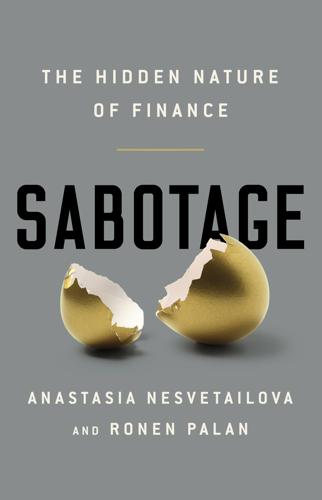
Sabotage: The Financial System's Nasty Business
by
Anastasia Nesvetailova
and
Ronen Palan
Published 28 Jan 2020
In reality, the ‘option’ functioned as little more than a fictional derivative, permitting the hedge fund to cast short-term profits as long-term capital gains and skirt regulations on legal limits for a customer’s US brokerage account.7 Anybody can create money, the problem is to get it accepted. Hyman Minsky Tax evasion and avoidance are big business, and finance is there to help. There has been a lot of talk lately about the role of tax haven jurisdictions; professional, legal and accounting advisers; and other secrecy spaces in facilitating tax avoidance. It is an important debate that needs to be had.
…
These and other cases of fraud across China’s shadow banking industry have prompted a broader crackdown on debt and financial risk by the authorities, partly driven by the desire to avoid expensive bailouts, as a number of China’s wealth management firms, many of which are Ponzi schemes, fold.14 BLOCKCHAIN If peer-to-peer is engulfed in scandals, what about blockchain and its most famous cyber offspring, bitcoin? Cryptocurrencies like bitcoin show the truism of Hyman Minsky’s theory. Minsky, one of the greatest financial economists of the twentieth century, once said: ‘Anybody can create money, the problem is to get it accepted.’ Bitcoin is a currency that virtualizes in cyberspace as a reward for solving an algorithm. Bitcoin mining is an expensive business: one needs not only human capital but a lot of computer power, which in turn consumes a lot of energy.
…
The behavioural change, in turn, is thought to be needed in order to make the system more robust and stable. And who can argue with that? Surely a more robust financial system serves the ‘real’ economy better than a fragile one? Alas, stability is a funny and, dare we say it, potentially a misleading term. It was Hyman Minsky, now a classic figure in finance, who quipped that stability is always destabilizing. In an environment of economic optimism about the future, dangers easily become undervalued and economic agents engage in increasingly risky activities. Ultimately, these risks materialize as unpayable debts, and a financial crisis ensues.
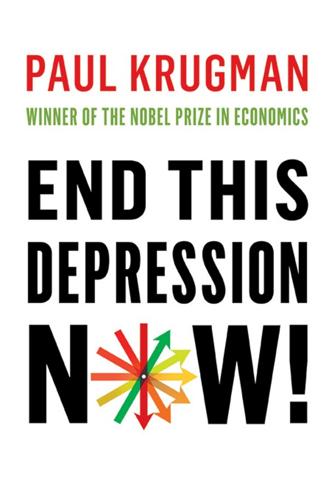
End This Depression Now!
by
Paul Krugman
Published 30 Apr 2012
But two other dead economists have also made strong and justified comebacks: a contemporary of Keynes’s, the American economist Irving Fisher, and a more recent entrant, the late Hyman Minsky. What’s especially interesting about Minsky’s new prominence is that he was very much out of the economic mainstream when he was alive. Why, then, are so many economists—including, as we saw at the beginning of this chapter, top officials at the Federal Reserve—now invoking his name? The Night They Reread Minsky Long before the crisis of 2008, Hyman Minsky was warning—to a largely indifferent economics profession—not just that something like that crisis could happen but that it would happen.
…
Sure enough, what Mian and Sufi find is that counties with high levels of debt have cut back drastically on both auto sales and home construction, while those with low debt have not; but the low-debt counties are buying only about as much as they were before the crisis, so there has a been a large fall in overall demand. The consequence of this fall in overall demand is, as we saw in chapter 2, a depressed economy and high unemployment. But why is this happening now, as opposed to five or six years ago? And how did debtors get that deep into debt in the first place? That’s where Hyman Minsky comes in. As Minsky pointed out, leverage—rising debt compared with income or assets—feels good until it feels terrible. In an expanding economy with rising prices, especially prices of assets like houses, borrowers are generally winners. You buy a house with almost no money down, and a few years later you have a substantial equity stake, simply because home prices have risen.
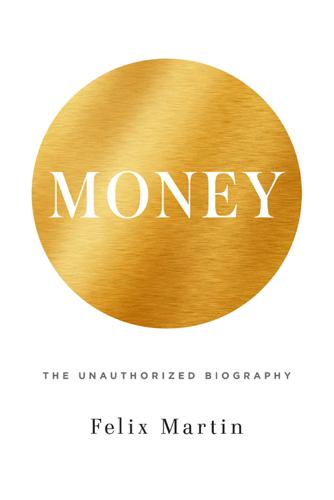
Money: The Unauthorized Biography
by
Felix Martin
Published 5 Jun 2013
As the American financial system had teetered on the edge of oblivion in late 2008 and early 2009, Summers nominated a trio of economists as his chief guides during the desperate policy-making in the White House: Walter Bagehot, Hyman Minsky, and Charles Kindleberger.8 This was a selection of economic thinkers, he admitted, from well beyond the pale of orthodox economics and from some time ago. Hyman Minsky was a economist whose unconventional theories of how a monetary economy functions were largely spurned by the core of the profession, and who died in 1996. Charles Kindleberger was an economic historian—economic history being widely considered the poor cousin of theory by most academic economists—whose best known work was published in 1978.
…
Everyday experience continued to suggest that money and banking were important independent factors in the economy, rather than things that could be blithely ignored. Heretics continued to appear and preach the need to repent and heed alternative visions that took money seriously. But most were marginal figures—dismissed by the mainstream as eccentric cranks like Hyman Minsky, or safely defused as mere purveyors of historical colour like Charles Kindleberger. Once in a while, a savvy operator such as Milton Friedman would emerge and go straight to the policy-makers or even the public to champion the importance of money in economic analysis. But Arrow and Debreu’s tonic proved a potent one: their recasting of the classical framework proved almost limitlessly flexible.
…
As the Chairman of the U.K.’s Financial Services Authority admitted bluntly in 2012, central banks had “a flawed theory of economic stability … which believed that achieving low and stable current inflation was sufficient to ensure economic and financial stability, and which failed to identify that credit and asset price cycles are key drivers of instability.”27 Indeed, the fruits of a decade’s devoted worship at the shrine of monetary stability were more damaging even than this. The single-minded pursuit of low and stable inflation not only drew attention away from the other monetary and financial factors that were to bring the global economy to its knees in 2008—it exacerbated them. The heretical Cassandra Hyman Minsky had warned of this baleful possibility many years before.28 The more successful a central bank is in mitigating one type of risk by achieving low and stable inflation, the more confident investors will become, and the more they will willingly assume other types of risk by investing in uncertain and illiquid securities.
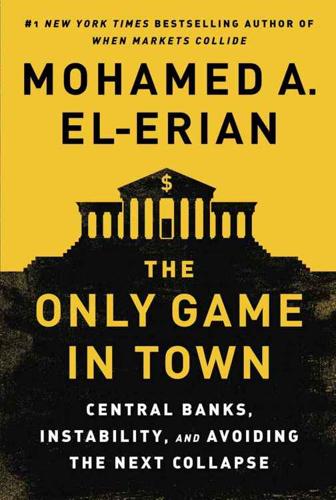
The Only Game in Town: Central Banks, Instability, and Avoiding the Next Collapse
by
Mohamed A. El-Erian
Published 26 Jan 2016
“Rational bubble riding” became acceptable, and the incentive to do so was turbocharged by an industry that has become more short-term focused in assessing both absolute and relative performance, and in which capital can move quite quickly given that few end investors are willing to revise down their return expectations. To some, the behavior of financial markets once again showed insufficient heed paid to the important insights of Hyman Minsky, the American economist. Known for his “financial instability hypothesis,”7 Minsky argued that, in capitalist economies, periods of financial stability give rise to subsequent periods of great financial instability. The extent of underlying moral hazard became more and more notable. I remember being bemused in October 2014 by the extent to which the return of some modest market volatility caused some respected market participants to call for the Fed to come up with “QE4”—that is, yet another program of large-scale asset purchases in order to repress market volatility and artificially boost asset prices again.
…
It is an operating environment that has sucked in many market participants, reminding us of John Maynard Keynes’s observations about how herd behaviors can take over markets. After all, “worldly wisdom teaches that it is better for reputation to fail conventionally than to succeed unconventionally.” And the longer the herd behavior continues and builds on itself, the greater the validity of a hypothesis put forward by Hyman Minsky—that is, the risk that the resulting “stability” proves temporary as, behind the scenes, it is breeding instability. The explanation for this unusual “vol” behavior lies in a combination of factors—from growth having been stuck in a low-level equilibrium to investors seeking “carry” income and other investment gains as a means of meeting ambitious return targets that are resistant to any meaningful downward revisions regardless of how much asset prices have already risen.
…
El-Erian, “The ECB Can Only Buy Time for Europe’s Politicians,” Financial Times, January 22, 2015, http://www.ft.com/intl/cms/s/0/957b9ddc-a241-11e4-bbb8-00144feab7de.html. 6. Tracy Alloway, “Markets’ Misplaced Faith in Central Banks,” Financial Times, January 23, 2015, http://www.ft.com/intl/cms/s/0/2ad516fa-a2d4-11e4-ac1c-00144feab7de.html. 7. Hyman Minsky, “The Financial Instability Hypothesis,” Working Paper No. 74, Levy Economics Institute of Bard College, 1992. 8. Mohamed A. El-Erian, “Beware of Calls for QE4,” Financial Times, October 17, 2014, http://blogs.ft.com/the-a-list/2014/10/17/beware-of-calls-for-qe4/. 9. Chris Giles, “Carney Warns on Low Interest Rates,” Financial Times, January 24, 2015, http://www.ft.com/intl/cms/s/0/c20266fe-a3fb-11e4-b90d-00144feab7de.html. 10.
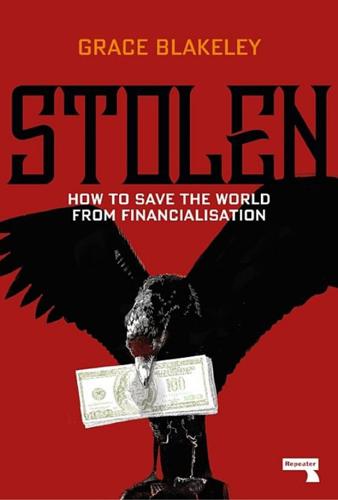
Stolen: How to Save the World From Financialisation
by
Grace Blakeley
Published 9 Sep 2019
Historically, these pools of capital have been important: when they are large, those who control them are able to wield immense amounts of power by determining who gets what.30 The mass-scale channelling of people’s savings into stock markets via pension funds and insurance funds after the end of Bretton Woods and the financial deregulation by the 1980s allowed institutional investors and wealthy individuals from around the world to channel money into the UK’s stock markets, unencumbered by capital controls or restrictions on foreign trading. Hyman Minsky has argued that we now live in an age of “money manager capitalism”, in which these pools of capital are some of the most important entities in determining economic activity.31 In this sense, money manager capitalism doesn’t just affect financial markets. By influencing the allocation of capital across the economy, it has affected the behaviour of almost every other economic actor — most clearly, it has transformed the nature of the non-financial corporation.32 Institutional investors’ primary goal is to maximise their returns as this is how they earn their fees and commissions.
…
It would take the largest financial crisis since 1929 for the class foundations of finance-led growth to be revealed once again. CHAPTER FIVE THE CRASH Stability leads to instability. The more stable things become and the longer things are stable, the more unstable they will be when the crisis hits. — Hyman Minsky On 15 September 2008, Lehman Brothers, one of America’s largest and oldest banks, filed for bankruptcy. The bank held $600trn worth of assets, making this the largest bankruptcy in American history.1 Financial markets looked on in shock. Just days earlier, the US government had nationalized Fannie Mae and Freddie Mac — two highly subprime-exposed mortgage lenders.
…
Their success at prediction was, they argued, what underlay the so-called “Great Moderation” that preceded the financial crisis: a period of high growth, low inflation, and relative stability. As it turns out, the Great Moderation was no such thing. As the upswing in asset prices continued, greater amounts of risk built up in the system.3 Part of the reason the financial crisis of 2008 was so big is that the period of exuberance that had preceded it had been so long. According to Hyman Minsky, “stability is destabilising” — long periods of calm in financial markets encourage behaviours that lead to instability.4 Minsky’s work built on Keynes’ theory that investment is driven by human psychology more than by any objective market rationality. The combination of these psychological factors, and the ability of modern capitalism to create huge amounts of debt, gives rise to financial systems that are fundamentally unstable.
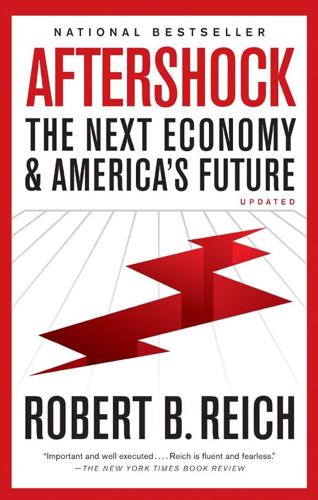
Aftershock: The Next Economy and America's Future
by
Robert B. Reich
Published 21 Sep 2010
Bush,” September 28, 2009 (http://thepage.time.com/statement-by-president-bush/). 2 “If we do not do this”: Senator Judd Gregg to the Associated Press, September 28, 2008. 3 The relative calm of preceding decades: The theoretical underpinnings of this occurrence had been developed by economist Hyman Minsky. See Hyman Minsky, Stabilizing an Unstable Economy (New York: McGraw-Hill, 2008). 6. THE GREAT PROSPERITY: 1947–1975 1 During this quarter century: See U.S. Census Bureau, Current Population Reports, Measuring 50 Years of Economic Change Using the March Current Population Survey (U.S. Government Printing Office, Washington, D.C., 1998), pp. 7–8. 2 Labor productivity: U.S.
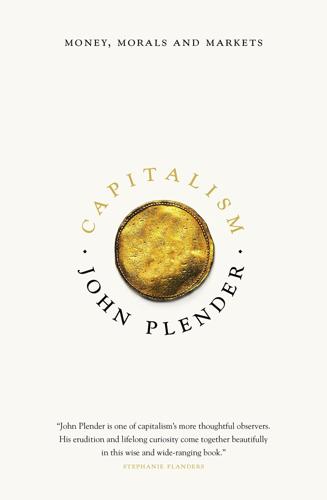
Capitalism: Money, Morals and Markets
by
John Plender
Published 27 Jul 2015
Those black swans, if the reader will excuse a solecism, were a canard. With financial crises the problem of prediction, as we saw earlier, is about timing and scale rather than the probability of them happening. A much better rationale for the crisis is to be found in the work of the economist Hyman Minsky, who had an acute sense of history. He recognised that the modern economy is fundamentally unstable and that one of the lessons of economic history is that there have always been big discontinuities in economic performance and policymaking. Minsky argued in the 1980s in his book Stabilising an Unstable Economy that long periods of stability and prosperity breed complacency and encourage risk taking, which is precisely what the so-called Great Moderation was all about.93 The moderation was, in fact, thoroughly immoderate.
…
In contrast with the feudal period, when economic fluctuations were driven chiefly by the forces of nature, war or plague, capitalism introduced regular boom-and-bust cycles. The system is inherently unstable and has become more so as a result of the deregulation of finance since the 1960s. The economist Hyman Minsky provided the best explanation of the dynamics of this instability in the 1980s, arguing that long periods of stability and prosperity breed complacency and encourage risk taking, as outlined in Chapter Five.202 Also implicit in Goethe’s tale, and a natural consequence of the instability described by Minsky, is what Marx and Engels called the ‘eternal insecurity’ of capitalism: The bourgeoisie cannot exist without constantly revolutionising the instruments of production, and thereby the relations of production, and therefore social relations as a whole.
…
Chilton 1 railway mania (Britain 1840s) 1 Rajan, Raghuram 1, 2, 3, 4 Rand, Ayn 1, 2 Raphael 1 Reading, Brian 1, 2, 3, 4 Reagan, Ronald 1, 2, 3, 4, 5 Reformation 1, 2 regulators 1 regulatory arbitrage 1 Renaissance 1, 2, 3 Republic (Plato) 1, 2 retail banking 1 Reynolds, Joshua 1, 2 Ricardo, David 1 Richelieu, Cardinal 1 Ring of the Nibelung (Wagner) 1, 2, 3 Ritblat, John 1 Roaring Twenties 1, 2 robber barons 1, 2, 3 Robinson Crusoe (Daniel Defoe) 1 Rockefeller, John D. 1, 2 rogue traders 1 Rolls-Royce 1 Roman republic 1 Roosevelt, Franklin 1 Rosenberg, Harold 1 Roseveare, Henry 1 Roubini, Nouriel 1 Rousseau, Jean-Jacques 1, 2 de Rouvroy, Claude-Henri 1 Royal Exchange (London) 1 Rubens, Peter Paul 1, 2 rural exodus 1 Ruskin, John 1, 2, 3 Saatchi, Maurice 1, 2 Samuelson, Paul 1 Sandel, Michael 1 sarakin banks (Japan) 1 Sarkozy, Nicolas 1 Sassoon, Donald 1 Satyricon (Petronius) 1 Savage, Richard 1, 2 Schama, Simon 1, 2 Schiller, Friedrich 1 Scholes, Myron 1 Schopenhauer 1 Schuman, Robert 1 Schumpeter, Joseph 1, 2, 3, 4, 5, 6, 7 Schwed, Fred 1, 2 second industrial revolution (1920s) 1 Sen, Amartya 1 separation of powers 1 Shakespeare 1, 2, 3, 4, 5, 6 shareholder activists 1 shareholder value 1 shareholders 1 Shaw, George Bernard 1 Sherman Antitrust Act (US 1890) 1 Shiller, Robert 1, 2, 3, 4 Shleifer, Andrei 1 short selling 1, 2 Siemens 1 von Siemens, Werner 1 Sinclair, Upton 1 Skidelsky, Robert 1, 2 Smith, Adam 1, 2, 3, 4, 5, 6, 7, 8 Smith, Sidney 1 Smithers, Andrew 1, 2 Smollett, Tobias 1 social democratic model 1, 2 Société Générale 1 Socrates 1 Solon 1 Sombart, Werner 1, 2 Soros, George 1, 2 Sotheby’s 1 South Sea Bubble 1, 2, 3, 4, 5, 6, 7 sovereign debt 1 sovereign debt crisis (2009) 1 Spain 1, 2, 3, 4, 5, 6 speculation 1 Spenser, Edmund 1 Stabilising an Unstable Economy (Hyman Minsky) 1 Steed, Wickham 1 Stephenson, George 1 Stevens, Wallace 1 Streeck, Wolfgang 1 subprime mortgages 1, 2, 3, 4 Sutter, John 1 Sutton, Willie 1 swarf 1 Sweden 1 Swift, Jonathan 1, 2, 3 Tale of Two Cities (Charles Dickens) 1 Taleb, Nassim Nicholas 1, 2 Talleyrand, Charles Maurice de 1 Taoism 1 tax farming 1 tax havens 1 tax revolts 1 taxation 1 Taylor, John 1 Tea Party movement 1 Tennyson, Alfred 1 Thaler, Richard 1 Thatcher, Margaret 1, 2, 3, 4, 5, 6 Theory of Moral Sentiments (Adam Smith) 1 ‘thingism’ 1 Thomas Aquinas 1, 2 Thompson, E.

Extreme Money: Masters of the Universe and the Cult of Risk
by
Satyajit Das
Published 14 Oct 2011
Intervention, he argued, is dangerous, rejecting the economic prescriptions of both the Keynesian and Friedman schools. Knight’s criticism of Friedman’s Second Chicago School was typically wry: “the emotional pronouncement of value judgements condemning emotion and value judgements which seems to [me] a symptom of a defective sense of humor.”32 In his 1986 book Stabilizing an Unstable Economy, Hyman Minsky, an American economist, outlined a hypothesis as to why modern economies are liable to fluctuate and how obvious instability can be masked for a time. Minsky’s thesis was that stability in financial markets engenders instability as a result of inherent tendencies in the financial system—stability is itself destabilizing.
…
One investor thought that Porsche would: “struggle to sell 911s to hedge-fund managers for years and years to come.”28 Wiedeking showed no Schadenfreude at the losses of the hedge funds: “We all have to get used to the fact that quick money is not a healthy business. Values played no role in what happened.”29 Children of Privilege The economist Hyman Minsky theorized that in the early stages of a business cycle money is only available to creditworthy borrowers, known ironically as hedge finance. As the cycle develops, financial conditions look rosy and competing lenders extend money to marginal borrowers, a phase known as speculative finance and ultimately Ponzi finance.
…
As William White, chief economist of the BIS, remarked: “In the field of economics, American academics have such a high reputation that they sweep all before them. If you add to that the personal reputation of the ‘Maestro,’ it was very difficult for anybody else to come in and say the problems building.”34 Free markets and deregulation were conventional wisdom—everyone was paid to agree with the broad consensus. As Hyman Minsky wrote: “As a previous crisis recedes in time, it’s quite natural...to believe that a new era has arrived. Cassandra-like warnings that nothing has changed, that there is a financial breaking point that will lead to a deep depression, are naturally ignored in these circumstances.”35 Noneofuscouldanode On October 22, 2008, as the global economy and financial system dissolved into crisis, Alan Greenspan appeared before the U.S.

The Price of Time: The Real Story of Interest
by
Edward Chancellor
Published 15 Aug 2022
Establishment economists considered with disdain the flood of papers churned out by Borio’s BIS team. The BIS ‘is listened to but ignored’, the chief economist at a rival international monetary authority is said to have sniped. Borio can’t be modelled, sneered critics in the academy. Similar comments were once directed at the maverick economist Hyman Minsky, whose brilliant insights into financial instability were belatedly recognized after the subprime crisis. Minsky and Borio have much in common; both are unorthodox and eclectic thinkers, who laid aside formal models to observe how things appear in the world – the real world, as opposed to the unreal reality constructed by academic modellers.
…
As the saying attributed to the former astronaut and airline boss Frank Borman goes, ‘capitalism without bankruptcy is like Christianity without hell.’ If that is the case, then monetary policy should not interrupt a recession’s cleansing effect.fn4 Put another way, if financial stability is destabilizing (as Hyman Minsky maintained), too much economic stability induces sclerosis. EUROPE’S SOVEREIGN DEBT CRISIS The Eurozone’s sovereign debt crisis, which erupted in 2010, is often considered in terms of competitiveness. Over the previous decade, countries on the periphery of the EU had seen their labour costs rise much faster than Germany’s.
…
‘So it is possible the financial system may exhibit a new strain of systemic risk … now originating on the balance sheets of mutual funds.’59 The Bank of England’s top economist was on the right track but understated the problem. The quantum of risk doesn’t remain the same under all conditions. Ultra-low interest rates, as Bagehot understood and modern research confirms, encourage investors to take more risk. Ultra-low rates and central banks’ money-printing may have dampened market volatility, but, as Hyman Minsky pointed out – and the recent experience of the subprime crisis confirmed – financial stability is destabilizing. Moral hazard teaches us that when insurance premiums are set too low, people build houses on flood plains. Activist central banks, which intervened during every bout of market turbulence and set Abbé Galiani’s ‘price of insurance’ at nothing, had a similarly deleterious influence on Wall Street’s behaviour.
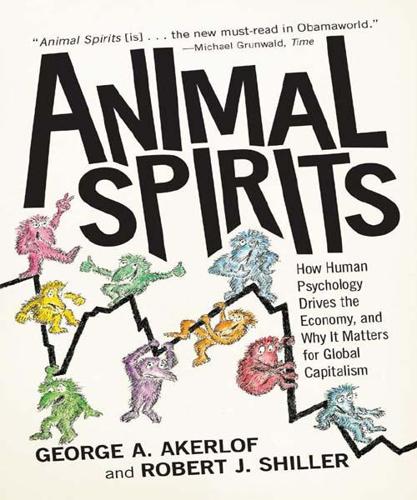
Animal Spirits: How Human Psychology Drives the Economy, and Why It Matters for Global Capitalism
by
George A. Akerlof
and
Robert J. Shiller
Published 1 Jan 2009
They left just enough animal spirits to yield a Least-Common-Denominator theory that minimized the intellectual distance between The General Theory and the standard classical economics of the day. In this standard economic theory there are no animal spirits. People act only for economic motives, and they act only rationally. Keynes’ followers adopted this “banality” (as it has been described by Hyman Minsky) for two good reasons.8 The first was that the Depression was still raging, and they wished to make converts as rapidly as possible to his message about the role of fiscal policy. They would make the maximum number of converts by coming as close as possible to the existing theory. And such minimal deviation was useful for another reason.
…
Notes * * * PREFACE TO THE PAPERBACK EDITION 1. Bagehot (1920 [1873], pp. 144, 119). 2. Nakamoto and Wighton (2007). 3. See Federal Reserve (2008a). 4. Geisel (1958). PREFACE 1. James (1983 [1904], p. 341). For Akerlof’s use of this image in a different context, see Warsh (2006). 2. In 1982 Hyman Minsky wrote Can “It” Happen Again? Minsky’s It was of course the Great Depression. He, like us, was especially concerned with the psychology of speculative bubbles. Our line of thinking in this book parallels that of Minsky. 3. One source estimates the death toll at 52,199,262. See http://www.historyplace.com/worldwar2/timeline/statistics.htm. 4.
…
Federal Reserve (2008a). 2. http://www.federalreserve.gov/releases/h41/Current/. This number should only be used as an indicator of order of magnitude. In the current financial crisis it is changing constantly. 3. But despite the appeal of this story to theoreticians, it misses something fundamental to the mission of the central bank. Hyman Minsky (1982, p. 250) remarked that central bankers who think that this is the central story are putting on “money supply blinders.” 4. Goldfeld (1976). 5. See Bernanke and Blinder (1988, 1992) for a discussion of the loanable funds theory. 6. The exact percentage varies depending on the size and type of a bank’s liabilities; see Federal Reserve (2008b). 7.
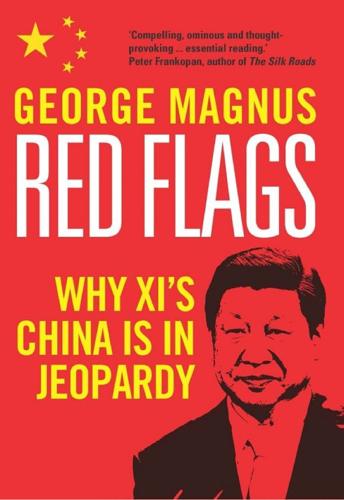
Red Flags: Why Xi's China Is in Jeopardy
by
George Magnus
Published 10 Sep 2018
Jon Anderson, ‘There is No Reform Agenda (Part 2)’, Emerging Market Advisors, 3 August 2017, and ‘The China Crisis Handbook’, Emerging Advisors Group, 28 October 2016. 18. The term ‘shadow banking’ was also coined by Paul McCulley, this time when he was at PIMCO. See, for example, Paul McCulley, ‘The Shadow Banking System and Hyman Minsky’s Economic Journey’, PIMCO, May 2009, <https://www.pimco.com/en-us/insights/economic-and-market-commentary/global-central-bank-focus/the-shadow-banking-system-and-hyman-minskys-economic-journey>. 19. Torsten Ehlers, Steven Kong and Feng Zhu, ‘Mapping Shadow Banking in China’, Bank for International Settlements, February 2018, <https://www.bis.org/publ/work701.pdf>. 20. Brookings Economic Studies, ‘Shadow Banking in China: A Primer’, March 2015.
…
When the banking system fails, the veneer of stability cracks quickly, exposing economic and political fault-lines from which it takes a long time to recover. The essential lesson, though, is that financial crises happen because financial institutions create leverage, which, over time, is liable to become excessive and end up with what I called in 2007 a Minsky Moment. Named after the economist Hyman Minsky, this is the point where the highest state of leverage – when lenders are providing funds to borrowers in order to service and repay debt – leads to systemic financial instability.14 We know that the growth of domestic credit facilitated by banks and other financial institutions is central to financial crises.
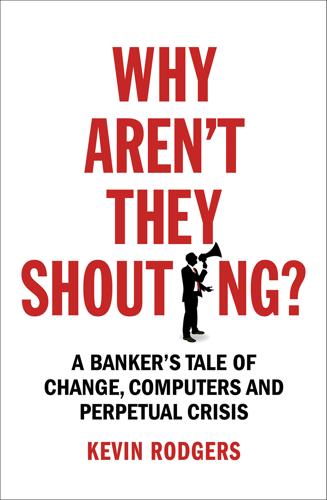
Why Aren't They Shouting?: A Banker’s Tale of Change, Computers and Perpetual Crisis
by
Kevin Rodgers
Published 13 Jul 2016
House of Representatives’, 24 July 1998, http://www.federalreserve.gov/boarddocs/testimony/1998/19980724.htm 4 For more on this fascinating topic, see The Myth of the Rational Market, Justin Fox, Harper Business, 2011. 5 The End of History and the Last Man, Francis Fukuyama, Penguin Books, 1992. 6 ‘The Financial Crisis and the Role of Federal Regulators’, Committee on Oversight and Government Reform, House of Representatives, 23 October 2008, http://www.gpo.gov/fdsys/pkg/CHRG-110hhrg55764/html/CHRG-110hhrg55764.htm 7 Stabilizing an Unstable Economy, Professor Hyman Minsky, McGraw-Hill Professional, 1986. 8 ‘Working Paper No. 74, The Financial Instability Hypothesis’, Hyman Minsky, The Jerome Levy Economics Institute of Bard College, May 1992, http://www.levyinstitute.org/pubs/wp74.pdf 9 Unsettled Account: The Evolution of Banking in the Industrialised World since 1800, Richard S. Grossman, Princeton University Press, 2010, p65. 10 ‘Regulatory Capital Reform under Basel III’, Latham & Watkins, March 2011, http://www.garp.org/media/583507/regulatorycapitalreformbaseliii_nicolaides032311.pdf 11 ‘Banks and capital requirements: channels of adjustment’, BIS Working Papers No. 443, Benjamin H.
…
I feel this viscerally: having lived through several so-called ‘hundred-year storms’ in the course of my career I should be as old as Yoda. Banking is unstable and some economists, outside the mainstream, agree that it is inherently so. One of their inspirations for this view is the work of a maverick American economist, Professor Hyman Minsky (1919–96), whose ‘financial instability hypothesis’, built on the work of Keynes, states the heretical notion that modern economies financed by a modern banking system will inevitably experience bubbles and crashes without needing an external (‘exogenous’) shock.7 Over a protracted period of ‘good times’, he asserts, capitalist economies naturally move from stability into a regime of speculative, ‘Ponzi’, pyramid scheme finance that eventually collapses in on itself in a ‘Minsky moment’.
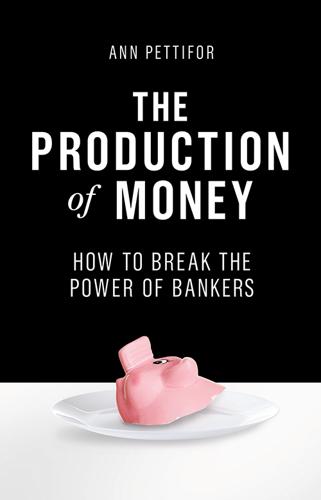
The Production of Money: How to Break the Power of Banks
by
Ann Pettifor
Published 27 Mar 2017
But money is not like a commodity, and to define it as such is to create a ‘false commodity’ as Karl Polanyi argued.1 On the contrary, with the development of sound monetary systems in developed economies, there is never a shortage of money for society’s most important needs. Instead the relevant question is: who controls the creation of money? And to what end is money created? The gap between the orthodox or neoclassical understanding of the nature of money and interest, and for example, the modern Keynesian or Minskyian (American economist Hyman Minsky [1919–96]) understanding of money and interest, is as wide and profound as that between sixteenth-century Ptolemaic and Copernican concepts of the heavens. Closing the gap in knowledge is almost impossible because ‘classical’ economists are, and have long been, dominant within universities. They are particularly influential in financial institutions, where their theories are both welcomed and encouraged.
…
Classical economics and its flawed theory of money was revived. The understanding of bank money and credit shared by those in the ‘underworld’ lived on only through Keynes’s closest colleagues in Cambridge, who were subsequently cast out of the profession. His theory was revived as post-Keynesian economics in the US under Sidney Weintraub, Hyman Minsky and Paul Davidson, and in the UK by Victoria Chick, among others. Geoffrey Ingham in the UK has revived the tradition within sociology. This revival has been echoed by the accessible and popular account in the New Economics Foundation book Where Does Money Come From?11 Given the pressure of class interests that shape today’s economic ideas, the long-standing neglect of his theory and policies, particularly at his alma mater Cambridge University, does not come as a surprise.
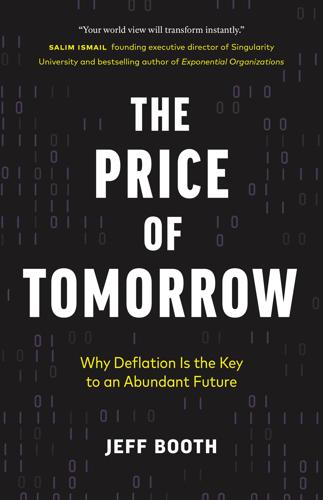
The Price of Tomorrow: Why Deflation Is the Key to an Abundant Future
by
Jeff Booth
Published 14 Jan 2020
In his own words, “In breaking down the pre-capitalist framework of society, capitalism thus broke not only barriers that impeded its progress but also flying buttresses that prevented its collapse. The capitalist process in much the same way in which it destroyed the institutional framework of feudal society also undermines its own.”14 Schumpeter’s view is consistent with that of Nobel laureate Hyman Minsky, but not in the way you might think. Minsky, an American economist, theorized that long periods of financial stability naturally lead to instability because of the rise of debt. The “Minsky moment” is the tipping point where the debt-fuelled asset bubble collapses, assets become difficult to sell at any price, and a market collapse ensues.
…
NFX, “70% of Value in Tech Is Driven by Network Effects,” Medium, November 28, 2017. medium.com/@nfx/70-of-value-in-tech-is-driven-by-network-effects-8c4788528e35. 13. Barry Schwartz, “Google’s Search Knows about over 130 Trillion Pages,” Search Engine Land, November 14, 2016. searchengineland.com/googles-search-indexes-hits-130-trillion-pages-documents-263378. 14. Joseph A. Schumpeter, Capitalism, Socialism and Democracy (Routledge, 1994), page 139. 15. Hyman Minsky, Stabilizing an Unstable Economy (McGraw Hill Professional, 2008), page 106. 16. Nassim Nicholas Taleb, Antifragile (Random House, 2012), page 101. 17. J.B. Sanford, “Argument against Women’s Suffrage,” California State Archives, Secretary of State Elections Papers, 1911 Special Election. Available at sfpl.org/pdf/libraries/main/sfhistory/suffrageagainst.pdf. 18.
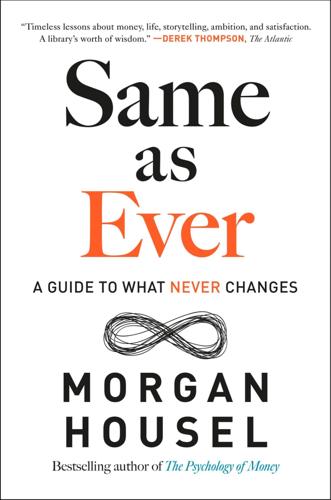
Same as Ever: A Guide to What Never Changes
by
Morgan Housel
Published 7 Nov 2023
In the previous fifty years the world had gone from horse and buggy to rockets, and from bloodletting to organ transplants. This caused a push among economists to try to eradicate the scourge of recessions. If we could launch intercontinental ballistic missiles and walk on the moon, surely we could prevent two quarters of negative GDP growth. Hyman Minsky, who spent most of his career as an economist at Washington University in St. Louis, was fascinated by the boom-and-bust nature of economies. He also thought the idea of eradicating recessions was nonsense, and always would be. Minsky’s seminal theory was called the financial instability hypothesis.
…
My guess is if COVID-19 struck the world in 1920, it would be a single page in the history books about yet another deadly pandemic wedged in between a long list of common tragedies. But since it struck in the comparative calm of 2020, it will leave a mark that reshapes how some people think about viral risk. The odd thing to ponder is the Hyman Minsky version of this development. Did a lack of pandemics over the last fifty years make the world more vulnerable to COVID-19? Did the decline of infectious disease death make us underestimate the odds that it could happen in modern times? Part of what made COVID dangerous is that we got so good at preventing pandemics in the last century that few people before 2020 assumed an infectious disease would ever impact their lives.
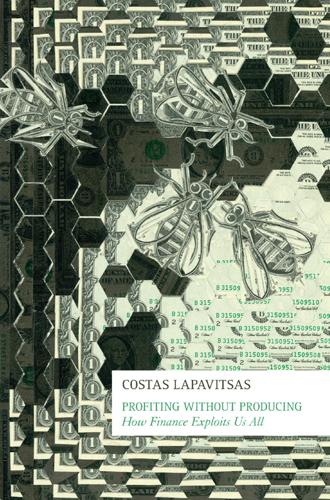
Profiting Without Producing: How Finance Exploits Us All
by
Costas Lapavitsas
Published 14 Aug 2013
Leo Panitch and Martijn Konings, New York: Palgrave Macmillan, 2009. 45 Marx, Capital, vol. 3, p. 567. 46 Marx actually used the term to denote several distinct cases of financial price or traded value, but no generality is lost by considering fictitious capital as simply net present value. 47 Marx, Capital, vol. 3, part 5. 48 For a wide-ranging review of regulationism and post-Keynesianism that is sharply aware of the empirical aspects of financialization and also appreciates the significance of Marxist concepts, see Robert Guttmann, ‘A Primer on Finance-Led Capitalism and Its Crisis’, Revue de la régulation 3/4, Autumn 2008. 49 See, in particular, Hyman Minsky, John Maynard Keynes, New York: Columbia University Press, 1975; Can “It” Happen Again? Essays on Instability and Finance, Armonk, NY: M.E. Sharpe, 1982; Stabilizing an Unstable Economy, New Haven, CT: Yale University Press, 1986. 50 Hyman Minsky, ‘Uncertainty and the Institutional Structure of Capitalist Economies’, Working Paper No. 155, Levy Economics Institute of Bard College, April 1996; Hyman Minsky and Charles Whalen, ‘Economic Insecurity and the Institutional Prerequisites for Successful Capitalism’, Working Paper No. 165, Levy Economics Institute of Bard College, 1996. 51 See, for instance, James Crotty, ‘Owner–Manager Conflict and Financial Theory of Investment Stability’, Journal of Post Keynesian Economics 12:4, 1990; Robert Pollin, ‘The Resurrection of the Rentier’, New Left Review 46, 2007; and Gerald Epstein (ed.), Financialization and the World Economy.
…
Other approaches to financialization The only other systematic theoretical approach to financialization in the field of economics has been put forth by post-Keynesians; in important ways it is similar to Marxist analysis, but there are also decisive differences. Post-Keynesianism, needless to say, is a broad current with many different strains, a point of some importance in assessing post-Keynesian views on financialization.48 It is interesting to note that the post-Keynesian approach to financialization has not originated with Hyman Minsky, whose work is the cornerstone of post-Keynesian financial analysis. The bulk of Minsky’s output is concerned with developing his path-breaking treatment of financial instability that postulated destabilizing balance sheet behaviour by large capitalist enterprises over the cycle as optimism became increasingly unbridled and led to excessive debt accumulation.49 Minsky’s empirical knowledge of the US financial system also made him aware of the risks of financial innovation, including securitization.
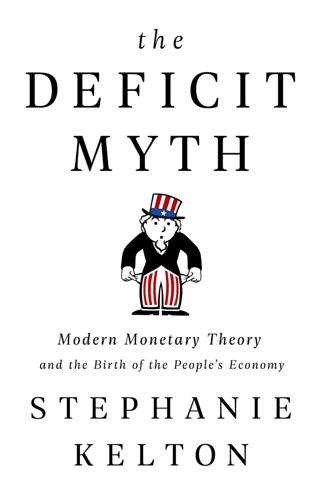
The Deficit Myth: Modern Monetary Theory and the Birth of the People's Economy
by
Stephanie Kelton
Published 8 Jun 2020
The job guarantee has its origins in the tradition of Franklin Delano Roosevelt, who wanted the government to guarantee employment as an economic right of all people. It was also an integral part of the civil rights movement led by Dr. Martin Luther King Jr., his wife, Coretta Scott King, and the reverend A. Philip Randolph. The influential economist Hyman Minsky advocated such a program as a key pillar in his antipoverty work. It’s important to note that the job guarantee doesn’t require policy makers to try to divine the amount of slack in the labor market using something like a NAIRU. Instead, the government simply announces a wage and then hires everyone who turns up looking for a job.
…
The job guarantee also helps to stabilize inflation by anchoring a key price in the economy—the price paid to workers in the job guarantee program. By establishing a wage floor, the government sets the minimum compensation, say $15 per hour. This becomes the rate of remuneration against which all other employment can be priced. Right now, the minimum wage is zero. Yes, the federal minimum wage is $7.25 per hour, but as the economist Hyman Minsky often observed, the minimum wage available to the unemployed is $0. You have to be employed to earn at least the federal minimum wage, and millions of unemployed Americans don’t have access to that wage. To establish a universal minimum, there must be a standing offer to bid for labor at some positive price.
…
The job guarantee has its origins in the tradition of Franklin Delano Roosevelt, who wanted the government to guarantee employment as an economic right of all people. It was also an integral part of the civil rights movement led by Dr. Martin Luther King Jr., his wife, Coretta Scott King, and Reverend A. Philip Randolph. The influential economist Hyman Minsky advocated such a program as a key pillar in his antipoverty work. It’s important to note that the job guarantee doesn’t require policy makers to try to divine the amount of slack in the labor market using something like a NAIRU. Instead, the government simply announces a wage and then hires everyone who turns up looking for a job.

Manias, Panics and Crashes: A History of Financial Crises, Sixth Edition
by
Kindleberger, Charles P.
and
Robert Z., Aliber
Published 9 Aug 2011
The story chapter by chapter A stylized model of speculation, credit expansion, financial distress, and then crisis that ends in a panic and crash is presented in Chapter 2. The model follows the early classical ideas of ‘over-trading’ followed by ‘revulsion’ and ‘discredit’ – musty terms used by earlier generations of economists including Adam Smith, John Stuart Mill, Knut Wicksell and Irving Fisher. These concepts were developed further by Hyman Minsky, who argued that the financial system in a market economy is unstable, fragile, and prone to crisis. The Minsky model has great explanatory power for earlier crises in the United States and in Western Europe, for the asset price bubbles in Japan in the second half of the 1980s, and for the bubbles in real estate in the United States, Britain, Ireland, Spain, and Iceland between 2002 and 2007.
…
This model differs from those that focus on the variations and the periodicity of economic expansions and contractions, including the Kitchin inventory cycle of thirty-nine months, the Juglar cycle of investment in plant and equipment that has a periodicity of seven or eight years and the Kuznets cycle of twenty years that highlights the rise and fall in housing construction.1 In the first two-thirds of the nineteenth century, crises occurred regularly at ten-year intervals (1816, 1826, 1837, 1847, 1857, 1866), thereafter less regularly (1873, 1907, 1921, 1929). The model A model developed by Hyman Minsky helps explain the financial crises in the United States, Britain and other market economies. Minsky highlighted that the changes in the supply of credit were pro-cyclical and increased when the economy was booming and decreased during slowdowns. During the expansions investors became more optimistic and they revised upward their estimates of the profitability of a wide range of investments and became more eager to borrow.
…
Minsky, John Maynard Keynes (New York: Columbia University Press, 1975); and idem, ‘The Financial Instability Hypothesis: Capitalistic Processes and the Behavior of the Economy’, in C.P. Kindleberger and J.-P. Laffargue, eds, Financial Crises: Theory, History and Policy (Cambridge: Cambridge University Press, 1982), pp. 13–29. For a view of the work of Hyman Minsky in historical context, see Perry Mehrling, ‘The Vision of Hyman P. Minsky’, in the Journal of Economic Behavior and Organization, vol. 39 (1999), pp. 125–58. 3. See R.C.O. Matthews, ‘Public Policy, and Monetary Expenditure’, in Thomas Wilson and Andrew S. Skinner, eds, The Market and the State: Essays in Honour of Adam Smith (Oxford: Oxford University Press, Clarendon Press, 1976), p. 336. 4.
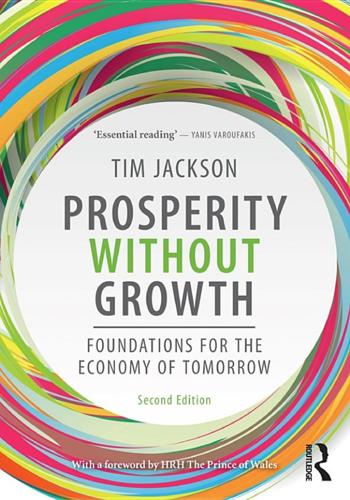
Prosperity Without Growth: Foundations for the Economy of Tomorrow
by
Tim Jackson
Published 8 Dec 2016
Why is it that households, firms and governments more or less dismantled financial prudence in the decades leading up to the crisis? Some of the answer to this question lies in a kind of natural exuberancy that takes over when things appear to be going well. British economist John Maynard Keynes called this ‘animal spirits’. US economist Hyman Minsky described the emergence of financial instability in terms of three stages characterised by three different types of borrower. The most cautious borrowers, who are also most prevalent in the early stages of the financial cycle, will only take on credit if they are clearly and easily able to pay back both interest and principal within their budgetary constraints.
…
Why the expansion of credit had become so dominant a force in the economy. And why governments consistently turned a blind eye or actively encouraged this ‘age of irresponsibility’. This question could partly be answered by saying that policy makers (and indeed many economists) were on the whole painfully ignorant of the work of Hyman Minsky and the small number of economists who might have shed some light on what was going on. Those looking at the profitability of firms and the progress of nations both failed to pay enough attention to the instabilities that were quite clearly emerging in underlying balance sheets.27 But even this answer doesn’t quite cut it.
…
It appears that government spending provides the means to stabilise an unstable economy under a wide variety of conditions, in particular in those that lead ultimately to a stationary state.48 Figure 9.2 The stabilising role of countercyclical public spending Source: Jackson and Victor (2015: figure 11). These findings would likely come as no surprise to Keynes or indeed to Hyman Minsky. Both economists saw fiscal policy as critical to the stability of the economy. Minsky in particular proposed a vital role for government as ‘employer of last resort’ spending directly into the economy to maintain high levels of employment and stabilise output in times of crisis.49 What’s emerging here is that strategies of countercyclical spending, social investment and public sector employment play a vital role not just in the protection of social wellbeing but in the fundamental dynamics of the post-growth economy.
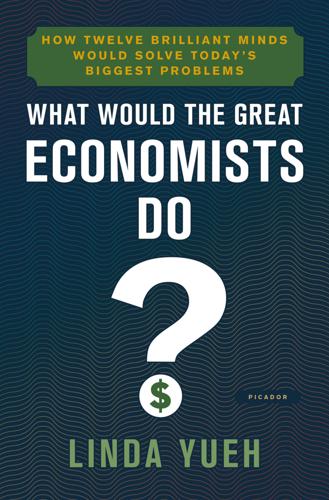
What Would the Great Economists Do?: How Twelve Brilliant Minds Would Solve Today's Biggest Problems
by
Linda Yueh
Published 4 Jun 2018
* * * Who, then, were these Great Economists whose theories changed the world and whose ideas can help us with our challenges today? It was a difficult choice to make. Applying the criterion that their work must have direct implications for our current economic problems helped a little, but there remain many not on my list who might arguably have been included. Hyman Minsky, for example, who is discussed in the Irving Fisher chapter because the pair’s combined thinking helps us better to understand the nature of financial crises. And Paul Samuelson’s ideas on the distributional impact of international trade builds on the work of David Ricardo, so his thinking provides considerable insight into how those who have lost out in the globalization process discussed in the Epilogue might better manage their predicament.
…
In particular, he mentioned the younger workforce, flexible markets, entrepreneurial spirit and openness to technological change all contributing to this resilience – and, by implication, that these were some of the factors absent in Japan. Bernanke would soon face a test of his theories with the 2009 Great Recession that followed the global financial crisis, and the prospect of repeating the 1930s loomed again. Minsky meltdowns Irving Fisher’s insights were revived in the 1990s by Hyman Minsky, who had incorporated ideas from Fisher as well as others in formulating his theory that private corporate debt, largely ignored in macroeconomic models, would lead to a financial crisis. He warned against speculative bubbles arising in inflated asset prices which had economy-wide implications.
…
Minsky, 1992, ‘The Financial Instability Hypothesis’, The Jerome Levy Economics Institute of Bard College, Working Paper No. 74. 20. Ibid. 21. ‘Minsky’s Moment’, The Economist, 30 July 2016; www.economist.com/news/economics-brief/21702740-second-article-our-series-seminal-economic-ideas-looks-hyman-minskys 22. Janet Yellen, 2009, ‘A Minsky Meltdown: Lessons for Central Bankers’, presentation to the 18th Annual Hyman P. Minsky Conference on the State of the US and World Economies – ‘Meeting the Challenges of the Financial Crisis’; www.frbsf.org/our-district/press/presidents-speeches/yellen-speeches/2009/april/yellen-minsky-meltdown-central-bankers/ 23.
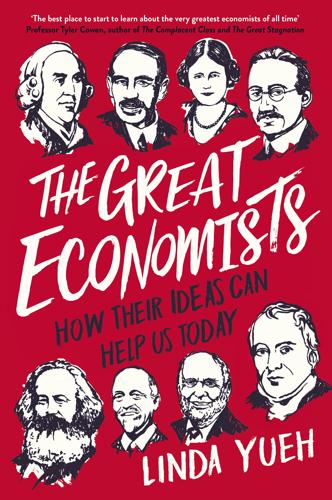
The Great Economists: How Their Ideas Can Help Us Today
by
Linda Yueh
Published 15 Mar 2018
Who, then, were these Great Economists whose theories changed the world and whose ideas can help us with our challenges today? It was a difficult choice to make. Applying the criterion that their work must have direct implications for our current economic problems helped a little, but there remain many not on my list who might arguably have been included. Hyman Minsky, for example, who is discussed in the Irving Fisher chapter because the pair’s combined thinking helps us better to understand the nature of financial crises. And Paul Samuelson’s ideas on the distributional impact of international trade builds on the work of David Ricardo, so his thinking provides considerable insight into how those who have lost out in the globalization process discussed in the Epilogue might better manage their predicament.
…
In particular, he mentioned the younger workforce, flexible markets, entrepreneurial spirit and openness to technological change all contributing to this resilience – and, by implication, that these were some of the factors absent in Japan. Bernanke would soon face a test of his theories with the 2009 Great Recession that followed the global financial crisis, and the prospect of repeating the 1930s loomed again. Minsky meltdowns Irving Fisher’s insights were revived in the 1990s by Hyman Minsky, who had incorporated ideas from Fisher as well as others in formulating his theory that private corporate debt, largely ignored in macroeconomic models, would lead to a financial crisis. He warned against speculative bubbles arising in inflated asset prices which had economy-wide implications.
…
Minsky, 1992, ‘The Financial Instability Hypothesis’, The Jerome Levy Economics Institute of Bard College, Working Paper No. 74. 20. Ibid. 21. ‘Minsky’s Moment’, The Economist, 30 July 2016; www.economist.com/news/economics-brief/21702740-second-article-our-series-seminal-economic-ideas-looks-hyman-minskys 22. Janet Yellen, 2009, ‘A Minsky Meltdown: Lessons for Central Bankers’, presentation to the 18th Annual Hyman P. Minsky Conference on the State of the US and World Economies – ‘Meeting the Challenges of the Financial Crisis’; www.frbsf.org/our-district/press/presidents-speeches/yellen-speeches/2009/april/yellen-minsky-meltdown-central-bankers/ 23.

The Innovation Illusion: How So Little Is Created by So Many Working So Hard
by
Fredrik Erixon
and
Bjorn Weigel
Published 3 Oct 2016
We know, however, that savers largely define ownership and that the size and complexity of public markets force savers, institutions, and retail investors alike to rely on third parties for their investments. It is this development that has created the “financialization” of the economy in the past four decades, or the unparalleled growth of the financial economy in relation to the real economy. The late US economist Hyman Minsky called it “money manager capitalism.”7 It is not a new phenomenon. “I would rather see Finance less proud and Industry more content,” argued Winston Churchill in 1925. But the economic gods did not heed that wish, nor to repeated warnings about the instability of financial growth that is supported by state guarantees.
…
Chance character (i), (ii) Belgium profit margins (i) taxi services and regulation (i) Bell, Alexander Graham (i), (ii) Bell Labs (AT&T) (i) Bellamy, Edward (i) Bellman, Richard (i) benchmarking (i), (ii) benefits, and incomes (i) Benz, Karl (i) Bergman, Ingmar (i) Berkshire Hathaway (i) Berle, Adolf (i) Berra, Yogi (i) Bezos, Jeff (i) Bhide, Amar (i) big firms big firm market dominance (i) and investment allocation for innovation (i) and private standards (i) relative importance of in European countries (i) reputation of (i) see also firm boundaries; firms; multinational (global) companies “big swinging dicks” (i) big-data business models (i) biofuels and EU regulation (i) see also energy sector biotechnological sector, and EU regulation (i) Bismarck, Otto von (i) bitcoin (i) BlackBerry (i) blackboard economics (i) Blackrock (i) blockchain (mutual distributed ledger) technology (i) Blue Ribbon Commission (US) (i) The Blues Brothers (movie) (i) boom and bust cycles (i), (ii), (iii) boomer (or baby boomer) generation (i), (ii), (iii), (iv) Boston Consulting Group index of complicatedness (i) on performance imperatives (i) on working time of managing teams (i) branding (i), (ii) Brazil and BRIC concept (i), (ii) taxi services and regulation (i) BRIC as a Bloody Ridiculous Investment Concept (i) countries (Brazil, India, Russia, and China) (i), (ii) Bridgewater (i) Brin, Sergey (i) Britain see United Kingdom (UK) British managerialism (i) Brockovich, Erin (i) Brookings (i) Brown, Gordon (i) Brynjolfsson, Erik, The Second Machine Age (Brynjolfsson and McAfee) (i), (ii) budget process, and compliance officers (i) Buffett, Warren (i), (ii) bureaucracy and capitalism (i), (ii) and competition (i) and compliance officers (i) and globalization (i), (ii), (iii), (iv) and IBM (i) and index of complicatedness (Boston Consulting Group) (i) and Indian economy (i) and managerialism (i), (ii), (iii) and organizational diversification (i) and principal–agent debate (i) and socialism (i) see also bureaucracy brake; bureaucrats; corporate managerialism; managerialism bureaucracy brake, and regulation (Germany) (i) bureaucrats vs. entrepreneurs (i), (ii) see also bureaucracy; bureaucracy brake Burning Man festival (Nevada) (i) Burns, Scott, The Clash of Generations (Kotlikoff and Burns) (i) business-building skills, vs. financial skills (i) business cycles, and productivity (i) business development, and strategy (i), (ii) business information technology (IT) services (i) business investment and cash hoarding (i) and corporate net lending (i), (ii) declining trend (i) explanations for decline (i) and financial regulation (i), (ii) and gray capitalism (i) investment allocation for innovation and big firms (i) low investment growth vs. fast corporate borrowing growth (i) measuring issues (i) and mergers and acquisitions (i) and policy uncertainty (i), (ii) and shareholders (i), (ii), (iii) UK business investment (i), (ii) US business investment (i), (ii) see also asset managers; investment; R&D business management (i), (ii) see also corporate managerialism business productivity growth (i) Business Week, on Peter Drucker (i) CAC 40 index (France) (i) cadmium (i), (ii) Canada diffusion of innovations (i) GDP figures (i) North American Free Trade Agreement (i) cancer research, and innovation (i), (ii) capital accumulation, and capitalism (i) capital expenditure (capex) (i), (ii), (iii), (iv)n39 capital markets (external) (i), (ii), (iii), (iv), (v) capitalism and agency (i) and asset bubbles (i) and bureaucracy (i), (ii) and capital accumulation (i) “complex by design” capitalism (i) criticism of Western capitalism (i) crony capitalism (i) death of capitalism utopia and socialism (i) decline of Western capitalism (i) and digital age (i) and dissent (i), (ii), (iii) and eccentricity (i), (ii), (iii), (iv), (v) and economic dynamism (i), (ii), (iii) and Enlightenment (i), (ii) and entrepreneurship (i), (ii) financial capitalism (i), (ii), (iii), (iv) free-market capitalism (i) and individual freedom (i), (ii), (iii) and innovation (i), (ii), (iii), (iv), (v) joint-stock capitalism (i), (ii) and labor vs. work (i) vs. the market (i), (ii) Marxist monopolistic theory of (i) “middle-aged” capitalism (i), (ii), (iii) “money manager capitalism” (Hyman Minsky) (i) and organization (i) and planning machines (i) rentier capitalism (i), (ii), (iii), (iv), (v), (vi) and Swedish hybrid economy (i) and technology (i) see also capitalist ownership; corporate managerialism; entrepreneurs; entrepreneurship; the future (and how to prevent it); globalization; gray capitalism; regulation; rich people capitalist ownership and corporate globalism (i) and diversification (i) and gray capitalism: case of Harley-Davidson Motor Company (HD) (i); decline/obituary of capitalist ownership (i); dispersed ownership (i); gray ownership (i), (ii), (iii), (iv), (v), (vi); severing gray capital–corporate ownership link (i) ownership structure reforms (i) and pensions (i) and principal–agent problem (i) and uncertainty (i) car industry car sales and regulation (i) driverless vehicles (i), (ii), (iii), (iv) German car production and value chains (i) lean production (i) US environment-related regulations (i) Carew, Diana G.
…
(i), (ii), (iii) Lewis, Michael, Liar’s Poker (i) liberalism classical market liberalism (i) economic liberalism and technology (i) embedded liberalism (i) vs. government intervention (i) neoliberalism (i) License Raj (India) (i), (ii) Lidl (i) Life Magazine, on Milwaukee-Matic (i) life-or-death competition (i), (ii), (iii), (iv) Linaburg Maduell Transparency Index (LMTI) (i) Lindgren, Astrid (i) listed companies and mergers and acquisitions (i) and ownership (i) and predictability (i) Litan, Robert (i) LMTI (Linaburg Maduell Transparency Index) (i) lobbying (i), (ii), (iii), (iv), (v) Locke, John (i) logistics hubs (i), (ii) logistics industry, and lean production (i) London Stock Exchange, and sovereign wealth funds (i) LoopPay (i) Lord Voldemort (Harry Potter books character) (i), (ii) Lyft (i) M&As (mergers and acquisitions) (i), (ii), (iii), (iv) McAfee, Andrew, The Second Machine Age (Brynjolfsson and McAfee) (i), (ii) McCloskey, Deirdre (i) McKinsey (i), (ii) McKinsey Global Institute (i) McLaughlin, Patrick (i) Maddison, Angus (i) Madoff, Bernie (i) Mainelli, Michael (blockchain study) (i) make-or-buy question (i), (ii), (iii) Malkin, Michelle (i) The Man in the Gray Flannel Suit (Sloan Wilson) (i) “man of system” (Adam Smith) (i) managerialism see corporate managerialism Mandel, Michael (i) Mannering, Fred (transportation expert) (i), (ii)n21 Mansfield, Edwin (i) manufacturing (i), (ii), (iii), (iv), (v), (vi) Marconi, Guglielmo (i) market vs. capitalism (i), (ii) complexity (i) concentration (i), (ii), (iii), (iv), (v) dominance by big firms (i) failure and firms (i) liberalization (i), (ii), (iii) and modern portfolio theory (i) uncertainty (i), (ii) see also deregulation; external capital markets; firm boundaries; labor markets; market contestability; public markets; regulation; stock markets market contestability boosting contestability, ways of (i) and deregulation (i) and economic dynamism (i), (ii) and global trade (i) and globalist worldview (i) and globalization (2nd phase) (i), (ii) and innovation (i), (ii), (iii), (iv), (v), (vi) and lean production in car industry (i) and managerialism (i), (ii) vs. market concentration (i) and multinationals (i) and occupational licenses (i), (ii) and oligopolistic (or monopolistic) competition (i) and performance imperatives (i) and performance tools and methods (i) and productivity (i), (ii) and regulation (i), (ii) and services sector (i), (ii) and strategy (i) and telecom network services (i) market socialism (i) marketing (i) Markowitz, Harry (i) Marris, Robin (i) Mars (company) (i) Mars (planet) (i) Marx, Karl (i), (ii), (iii), (iv), (v), (vi) Communist Manifesto (Marx and Engels) (i), (ii) Mason, Paul (i) mass affluent (i) Mauborgne, Renée (i) Blue Ocean Strategy (Kim and Mauborgne) (i) Means, Gardiner (i) mechanistic cognition (i) medical/healthcare sector and regulation (i), (ii), (iii), (iv) and robotics (i) see also corporate medical research; pharmaceutical sector meetings (i), (ii), (iii) MelaFind (i), (ii) Memphis International Airport, Federal Express (FedEx) hub (i) mercantilism (i), (ii), (iii), (iv), (v) Mercedes-Benz cars, French ban on (i) mergers and acquisitions (M&As) (i), (ii), (iii), (iv) MetLife (i) metrics (i), (ii) “Mexican standoff” metaphor (i) Mexico, North American Free Trade Agreement (i) Michaels, Guy (i) Microsoft (i), (ii), (iii), (iv), (v), (vi) Middle Ages, economy and innovation (i) “middle-aged” capitalism (i), (ii), (iii) Mill, John Stuart (i) Millennials (i) Milne, Alistair (blockchain study) (i) Milwaukee-Matic (i) Minsky, Hyman, “money manager capitalism” (i) MIT Media Lab (i) MIT Technology Review, Graylin on e-wallets (i) mobile banking, in Africa (i) mobile phones/technology (i), (ii), (iii), (iv), (v), (vi) see also Nokia mobile subscription market, and globalization (i) modern portfolio theory (i) Modi, Narendra (i) Mokyr, Joel (i), (ii), (iii)n41 “money manager capitalism” (Hyman Minsky) (i) monopolistic (or oligopolistic) competition (i) monopoly, theory of (John Hicks) (i) Monsanto (i) Mont Pelerin Society (i) Moody’s (i) Moore, Wilbert, The Conduct of the Corporation (i) Morieux, Yves (i) Morrison, William (i) Motorola (i), (ii) Mouchot, Augustin (i) moving-target regulations (i) Mr.
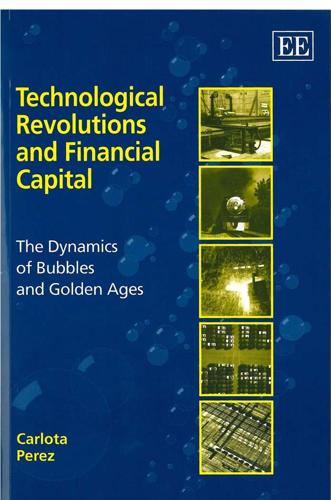
Technological Revolutions and Financial Capital: The Dynamics of Bubbles and Golden Ages
by
Carlota Pérez
Published 1 Jan 2002
No leaf ever wholly equals another, and the concept ‘leaf’ is formed through an arbitrary abstraction from the individual differences, through forgetting the distinctions; and now it gives rise to the idea that in nature there might be something besides the leaves which would be ‘leaf’ – some kind of original form after which all leaves have been woven, marked, copied, coloured, curled, and painted, but by unskilled hands, so that no copy turned out to be a correct, reliable, and faithful image of the original form … Friedrich Nietzsche, 1873 A theory that denies that what is happening can happen, that sees unfavorable events as the work of outside forces (such as the oil crisis) rather than as the result of characteristics of the economic mechanism, may satisfy the politicians’ need for a villain or scapegoat, but such a theory offers no useful guide to the solution of a problem. Hyman Minsky, 1986, p. 4. xv xvi Technological Revolutions and Financial Capital chapter title xvii Introduction: An Interpretation The last quarter of the twentieth century witnessed the apparently boundless rise of two forces: the information revolution and financial markets. Many have chanted the virtues of the one for increasing productivity and of the other for unleashing the drive for wealth that moves the economy forward.
…
And this has been so, though Schumpeter himself was very clear about the two roles, that of the entrepreneur and that of the financier as the interdependent wheels turning innovation forward.1 On the other hand, those who have studied finance – and in particular financial crises – have seldom given attention to the real economy of the production of goods and services (or what Schumpeter called ‘Güterwelt’), nor have they dealt much with technology and its relation with investment opportunities. Using the framework to be presented here, one could suggest that this neglect stems from the fact that the biggest bubbles tend to occur when financial capital has practically decoupled from the real economy and taken off on its own. Nevertheless, an economist like Hyman Minsky, who does put innovation in financial services at the core of his explanation of crises, does not make any links between the types of financial innovation made and the specific technologies of the period in question.2 This book attempts to weave these two issues together within a wider interdisciplinary perspective, beyond the boundaries of economics. 1. 2.
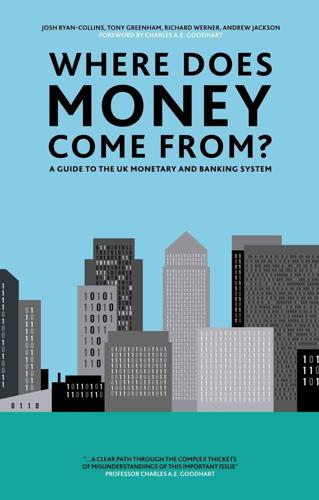
Where Does Money Come From?: A Guide to the UK Monetary & Banking System
by
Josh Ryan-Collins
,
Tony Greenham
,
Richard Werner
and
Andrew Jackson
Published 14 Apr 2012
As Marx pointed out, in the capitalist system, money (or capital/financing) is required prior to production,26 rather than naturally arising after production as a way of making exchange more convenient. This is why it is called ‘capital-ism’. So building a model that starts with market clearing and allocation and then tries to fit in money as a veil on top of this makes little sense. As American economist Hyman Minsky argues: ...we cannot understand how our economy works by first solving allocation problems and then adding financing relations; in a capitalist economy resource allocation and price determination are integrated with the financing of outputs, positions in capital assets, and the validating of liabilities.
…
While money is really nothing more than a promise to pay, what distinguishes money from, say, an IOU note, is its general acceptability. Promises to pay that are accepted as tax will tend to be the most widely accepted for private debts and exchanges as almost everyone needs to make regular tax payments. The nature of the credit-debt relationship is abstract rather than specific.8 As American economist Hyman Minsky has pointed out, “anyone can create money, the problem is getting it accepted”9. Since banks are the accountants of the economy, through whose computers the vast majority of all transactions are booked, they are uniquely placed to get their money – created though granting credit – accepted. Part of the widespread acceptance of bank deposits as payment may be due to the fact that the general public is simply not aware that banks do indeed create the money supply.
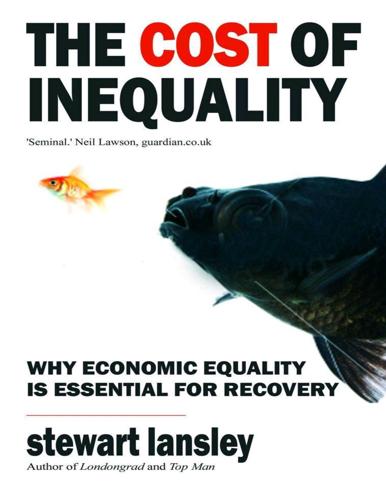
The Cost of Inequality: Why Economic Equality Is Essential for Recovery
by
Stewart Lansley
Published 19 Jan 2012
224 The slowing of growth and productivity since 1980 amongst the world’s leading economies has also been a central factor in the onset of domestic and global instability. The downturn of 2008-2009 was merely the most acute of a series of global crises. For the generation after the Second World War, active intervention to moderate the business cycle was largely successful. As the American economist Hyman Minsky observed in 1982, ‘The most significant economic event of the era since World War II is something that has not happened: there has not been a deep and long-lasting depression’.225 Despite claims that the injection of market forces would reduce the capitalist tendency towards instability, the world became a more turbulent place in the next three decades than in the immediate post-war period.
…
‘The search for yield and acceptance of higher risk was in part driven by banks’ compensation packages for their staff that in effect rewarded undue risk taking.’388 Simon Johnson, former chief economist at the IMF and now at MIT, put it a little more bluntly. The chiefs were more ‘knaves than fools’.389 Two decades earlier, long before the tsunami of new financial instruments, the American economist, Hyman Minsky—who died in 1996—had warned that deregulated financial markets would intensify the tendency of market economies to speculation and instability. Minsky was a post-Keynesian economist and critic of the free-market school who developed what he called the ‘financial instability hypothesis’ that integrated the role of finance into the Keynesian framework.
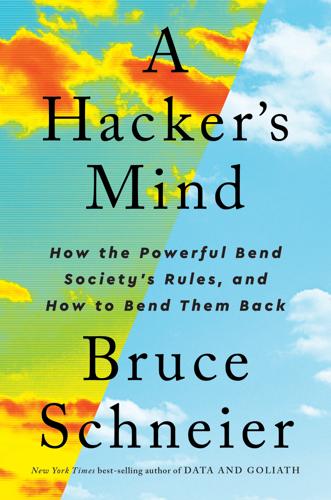
A Hacker's Mind: How the Powerful Bend Society's Rules, and How to Bend Them Back
by
Bruce Schneier
Published 7 Feb 2023
Paul Watro (10 Aug 1981), “The battle for NOWs,” Federal Reserve Bank of Cleveland, https://www.clevelandfed.org/en/newsroom-and-events/publications/economic-commentary/economic-commentary-archives/1981-economic-commentaries/ec-19810810-the-battle-for-nows.aspx. 76we’ll see it again and again: Although he never used the word “hacking,” Hyman Minsky discussed this. Hyman Minsky (May 1992), “The financial instability hypothesis,” Working Paper No. 74, The Jerome Levy Economics Institute of Bard College, https://www.levyinstitute.org/pubs/wp74.pdf. 76banks had moved 95%: Charles Levinson (21 Aug 2015), “U.S. banks moved billions of dollars in trades beyond Washington’s reach,” Reuters, https://www.reuters.com/investigates/special-report/usa-swaps.
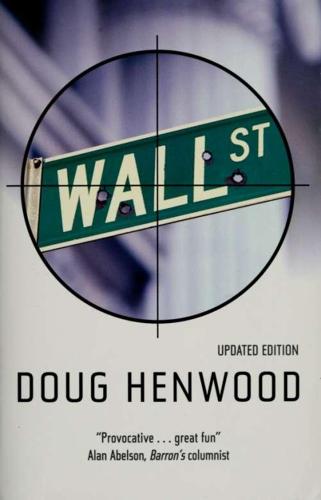
Wall Street: How It Works And for Whom
by
Doug Henwood
Published 30 Aug 1998
In these senses, bastard Keynesianism did the trick — of, to paraphrase Claus Offe, regulating the system politically without materially politicizing it. The establishment took what it needed from Keynes and left the rest. posties Though I've mentioned post-Keynesian economics several times in this chapter, I've barely fleshed out the mentions. But two matters deserve closer attention — theories of monetary endogeneity, and the work of Hyman Minsky. Both are barely acknowledged, much less known, in the mainstream. money emerges from within In conventional economics, of both the monetarist and the eclectically mainstream varieties, the money supply (not always precisely defined) is determined from "outside" the system of private exchange by the central bank; these are exogenous theories of money.
…
When things look too bubbly for the Fed's satisfaction, it tightens policy, by lowering its targets for money supply growth and raising its target for the fed funds rate. In doing so, it hopes to slow down the economy, but there's often many a slip between tightening and slowdown. The reason for this gap was explored nearly 40 years ago by Hyman Minsky (1957) in a classic paper modestly titled "Central Bank and Money Market Changes." Minsky pointed to two innovations of that relatively sleepy time, the federal funds market, which allows aggressive banks to transcend the limits of their own reserves by borrowing from surplus banks, and the growing presence of nonfinancial corporations, eager to make money on spare cash, as providers as well as users of credit.
…
Of course, in Marx's view, these extensions of credit become worthless in a crisis, as everyone scrambles for gold; this kind of crisis hasn't been seen in this century, as central banks have learned how to contain crisis and make short-term government paper seem as good as gold. Minsky Of all the modern theorists in the Keynesian tradition, one of the most interesting is Hyman Minsky, who devoted his career to exploring the relations between finance and the real world. ^"^ We've already looked at his contribution to theories of monetary endogeneity; the rest of his work deserves a few more pages. Following the lead of Keynes's Treatise, with its separate industrial and financial spheres, Minsky developed a two-sphere theory of a modern capitalist economy, one of current output and one for capital assets, which jointly determine the level of economic activity.
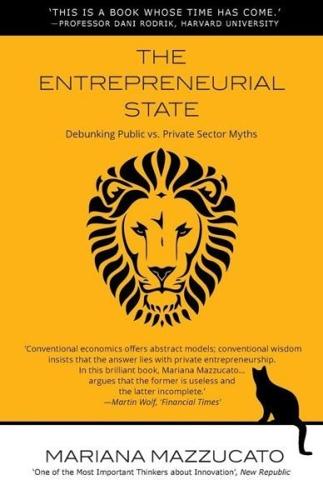
The Entrepreneurial State: Debunking Public vs. Private Sector Myths
by
Mariana Mazzucato
Published 1 Jan 2011
It was indeed Leonardo’s work with Ford that inspired the first meetings and work that led to another research project, funded by the Institute for New Economic Thinking (INET), in which Randy Wray and I are today banging heads: a project on how to bring together the thinking of Joseph Schumpeter on innovation and Hyman Minsky on finance, to understand the degree to which finance can be turned into a vehicle for creative destruction rather than its current obsession with Ponzi-like destructive creation. Amongst other friends and colleagues who have provided inspiration through interaction and feedback, I want to mention Fred Block, Michael Jacobs, Paul Nightingale and Andy Stirling, the latter two from SPRU, my new academic home.
…
However, the point of this book is to highlight how the State has, even in the boom periods such as the 1990s, provided important directionality in its spending, increasing the animal spirits of the private sector by investing in areas that the private sector fears. 3 Indeed, the application of Keynesian analysis to the theory of economic crises, with a proper understanding of finance in this dynamic, was developed by Hyman Minsky. Minsky (1992) focused on the financial fragility of capitalism by highlighting the way that financial markets cause crises to occur. Financial bubbles followed cycles of credit expansion, and exaggerated growth expectations were followed by retraction, causing bubbles to burst and asset prices to collapse.
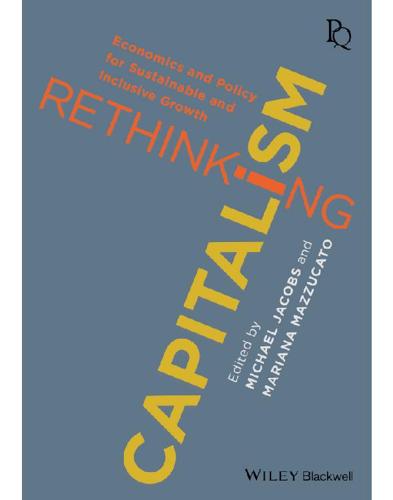
Rethinking Capitalism: Economics and Policy for Sustainable and Inclusive Growth
by
Michael Jacobs
and
Mariana Mazzucato
Published 31 Jul 2016
In the orthodox view an excess growth of this exogenously determined money supply relative to the growth in real output causes a rise in the general price level; for this reason, controlling the money supply is central to the control of inflation. Endogenous money and modern money theory But this view of money does not actually accord with the facts. As Hyman Minsky pointed out, money is not created simply by the central authorities.8 It is effectively created whenever commercial banks lend money, since such lending increases the purchasing power of those who borrow. It is therefore the demand for loans by businesses and households in the economy which determines the money supply.
…
What he did not foresee, however, was that in reality the banking system—indeed the entire private financial system—would find ways to make money simply from speculation rather than from financing the productive economy. That is, finance is financing itself—banks financing mortgage backed securities, which use credit default swaps, for example—rather than what Hyman Minsky called the ‘capital development’ of the economy.57 The speculative and short-term character of the financial system means that the banker is now more the problem than the solution Schumpeter assumed.58 Even when finance does pay attention to the real economy, the relationship is not always beneficial.
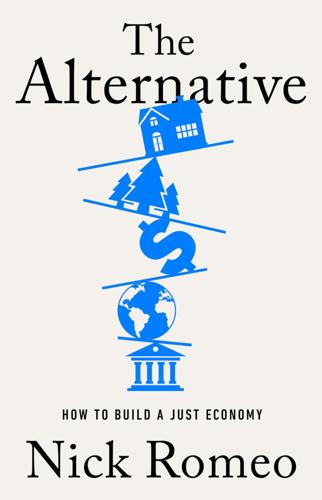
The Alternative: How to Build a Just Economy
by
Nick Romeo
Published 15 Jan 2024
The political economy of higher education itself would need to change before economics could once more regain the intellectual breadth of its origins in political economy. Pluralism is not merely a pleasant and broadening experience for undergraduates. It could introduce ideas that would help predict and remedy economic crises and address issues ranging from the climate crisis to gender equality. One example is the post-Keynesian economist Hyman Minsky’s financial instability hypothesis, according to which prosperity drives speculative activity and ultimately bubbles and busts, which was largely ignored by neoclassical economists despite the fact that it describes the 2008 crash with eerie precision.51 Another example is Kate Raworth’s doughnut economics model.
…
.… [It] does not properly understand how businesses invest in innovation… and [it] has resulted in a diminished understanding of the role workers play and the risk they undertake in the value creation process.”44 To explain the stagnation of our hyperfinancialized economy, Rubio (or his staff) cited economists like Hyman Minsky and Mariana Mazzucato, who support a central role for the government in guiding the economy. The report doesn’t go much beyond vague calls for changes to public policy and pleas to the “non-financial business sector” to invest in future productivity, but it’s a somewhat astonishing document considering its ultraconservative author.
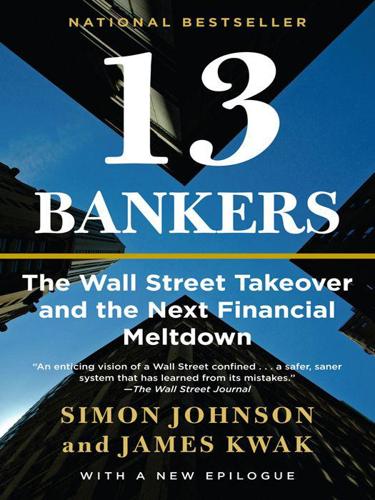
13 Bankers: The Wall Street Takeover and the Next Financial Meltdown
by
Simon Johnson
and
James Kwak
Published 29 Mar 2010
Warren Buffett famously labeled derivatives “financial weapons of mass destruction” in the Berkshire Hathaway 2002 annual report.51 In his 2001 book Fooled by Randomness, Nassim Taleb argued that modern financial technology underestimated the likelihood of extreme events, with potentially catastrophic implications.52 Janet Tavakoli’s 2003 book, Collateralized Debt Obligations and Structured Finance, discussed the potential problems involved in securitization, including the risk of fraud.53 And decades before, Hyman Minsky had pointed out the role of innovation in enabling financiers to increase their profits at the risk of destabilizing the economy.54 They could all be ignored as long as market conditions remained benign. But the Merton-Greenspan “risk unbundling” story was proven horribly wrong by the financial crisis that began in 2007—caused in part by innovative products that made it possible for financial institutions and investors to take on massive amounts of risk hidden inside AAA-rated securities that later plummeted in value.
…
At the height of the boom, over half of the mortgages made by Lennar, a national housing developer, were interest-only mortgages or optional-payment mortgages whose principal went up each month; in 2006, almost one in three had a piggyback second mortgage.28 Between 1998 and 2005, the number of subprime loans tripled, and the number that were securitized (as measured by First American LoanPerformance) increased by 600 percent.29 In 2005, a consortium of Wall Street banks created standard contracts for credit derivatives based on subprime mortgages, making it even easier to create synthetic subprime CDOs.30 These developments all confirmed the predictions of economist Hyman Minsky, who had warned that “speculative finance” would eventually turn into “Ponzi finance.”31 The end result was a gigantic housing bubble propped up by a mountain of debt—debt that could not be repaid if housing prices started to fall, since many borrowers could not make their payments out of their ordinary income.
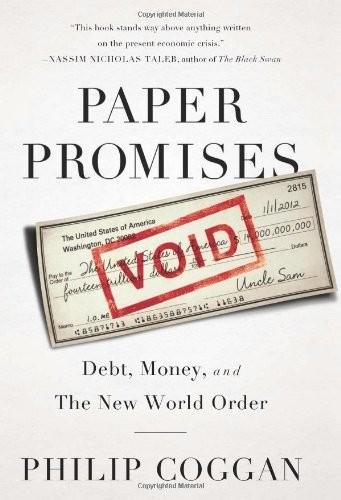
Paper Promises
by
Philip Coggan
Published 1 Dec 2011
He printed bank notes and lent money so investors could buy shares in the Mississippi Company. While the share price was rising, the system worked perfectly; bank notes and shares were both perceived to have value. But when investors lost confidence, prices fell as quickly as they rose. THE MINSKY EFFECT Hyman Minsky, an American economist who died in 1996, thought these debt-fuelled spirals were inherent to financial markets. During the early stages of the boom, a typical borrower is a ‘hedge borrower’: he is able to meet both interest and capital repayments on the loan from his income. In the second stage, there are ‘speculative’ borrowers who can meet the interest on the loan but will be unable to repay the capital.
…
Second, because in that event the authorities would have to step in anyway to save a bank and others suffering a similar plight. Another issue was that the figures in the VAR models also tended to be heavily influenced by recent observations. So a long period of low volatility tended to reduce the potential loss generated by the model, thereby persuading banks to take more risk (just as Hyman Minsky predicted). As Taleb points out, this creates a very dangerous mindset. His ‘black swan’ example dates back to the philosopher David Hume; just because you see a thousand white swans does not mean there cannot be a black swan (as there are in Australia). But another example of his reasoning is even more illuminating.
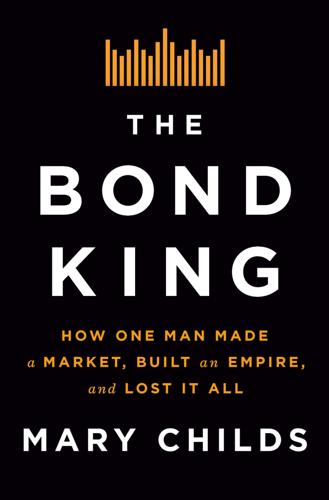
The Bond King: How One Man Made a Market, Built an Empire, and Lost It All
by
Mary Childs
Published 15 Mar 2022
They’d all entered into contracts with one another, buying and selling bonds and swaps and derivatives. All those connections had them fully intertwined, the density masking who actually had what and who owed what. While nearly everyone else was blind to it, McCulley could see the rotten roots of debt and leverage winding underneath the entire global financial system. He was a disciple of Hyman Minsky, an economist who had preached in the 1960s through the ’80s that too much calm, too much stability, sows the seeds of instability. When the economy is booming, people forget the bad times and reach a little too far, borrow a little too much. McCulley nudged Gross as early as 2002 to read these then-deep-cut papers.
…
“At that point, ‘For Sale’”: “Pimco Exec Cites Fallout from Housing,” The Orange County Register, June 5, 2006. “stable disequilibrium”: Bill Gross, “Mission Impossible?” Investment Outlook, Pimco.com, May 16, 2006. “the shadow banking system”: Paul McCulley, “Teton Reflections,” Investment Outlook, Pimco.com, September 7, 2007. “Minsky moment”: Paul McCulley, “The Shadow Banking System and Hyman Minsky’s Economic Journey,” Pimco.com, May 26, 2007. “same old discussions”: Allianz, Letter to the Shareholders, Fiscal Year 2000. “Anonymity, not notoriety”: Bill Gross, “Miracu(less),” Investment Outlook, Pimco.com, August 1, 2001. “unresponsive mule”: Paul McCulley, “Time: Varying Variables Vary,” Investment Outlook, Pimco.com, October 19, 2006.
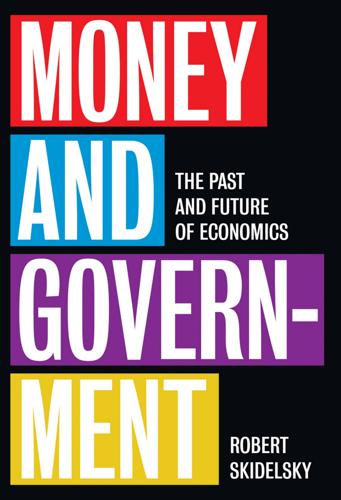
Money and Government: The Past and Future of Economics
by
Robert Skidelsky
Published 13 Nov 2018
CPI inflation in the advanced economies during the Great Moderation3 (per cent) 6 5 4 3 2 1 09 08 20 20 06 07 20 05 20 04 20 02 03 20 20 01 20 00 20 98 99 20 19 96 95 97 19 19 19 19 93 92 91 94 19 19 19 19 19 90 0 The euphoria of the pre-crash years was by no one better previsioned than Hyman Minsky: Success breeds disregard of the possibility of failure. The absence of serious financial difficulties over a substantial period leads to a euphoric economy in which short-term financing of long-term positions becomes the normal way of life. As the previous financial crisis recedes in time, it is quite natural for central bankers, government officials, bankers, businessmen and even economists to believe that a new era has arrived.4 The ‘surprise’ global economic collapse of 2008–9, the worst since the Great Depression of 1929–32, shattered the glass.
…
There was naught to be gained from reining in the machinations of banks and financiers as they built up an increasingly complex system. A dose of realism, or even a cursory knowledge of history, would have told these savants that markets do not work in this way.17 Moreover, there were sound theoretical reasons to distrust an unfettered financial system. Hyman Minsky, an economist whose work was completely ignored until after the crash, argued that financial stability leads inevitably to financial fragility, as optimism turns to ‘speculative euphoria’ and markets become ‘dominated by speculation about sentiments and movements in the market rather than about fundamental asset values’.18 But these arguments had no place in the neo-classical hegemony and so, despite its glaring theoretical gaps, the EMH became the intellectual underpinning of financial market deregulation. 313 M ac roe c onom ic s i n t h e C r a s h a n d A f t e r , 2 0 0 7 – ‘Mark-to-market (M2M) and value at risk (VaR) frameworks offer accurate measures of value and thus are appropriate ways of managing risk’ Mark-to-market accounting aims to estimate the ‘fair value’ of an asset by reference to its current market price, rather than what it cost the investor to buy.
…
To a number of economists outside the mainstream, such as William Black, Stephen Keen, Randall Wray and James Galbraith, it was obvious that the financial system was on an unsustainable roll. Of those in the mainstream, Raghuram Rajan and Robert Shiller can claim credit for having foreseen a crisis, for various reasons. The general cause of the financial collapse had been previsioned by Hyman Minsky in his ‘financial instability hypothesis’: see Minsky (1992). 3. Quoted in Kynaston (2017), p. 358. Montagu Norman to Henry Clay. 4. The original is a bit more verbose than the familiar form given above. Ronald Reagan’s actual words were: ‘In this present crisis, government is not the solution to our problem; government is the problem.’
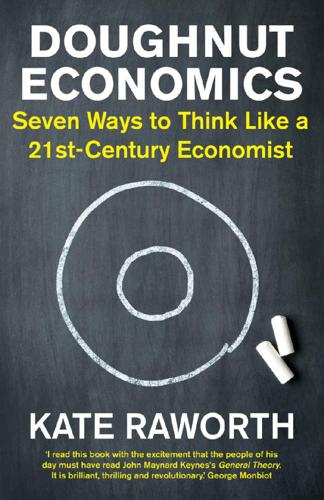
Doughnut Economics: Seven Ways to Think Like a 21st-Century Economist
by
Kate Raworth
Published 22 Mar 2017
Thanks to financial deregulation, said US Federal Reserve Chair Alan Greenspan in 2004, ‘not only have individual financial institutions become less vulnerable to shocks from underlying risk factors, but also the financial system as a whole has become more resilient.’45 Four years later, the financial crash disproved that claim in a fairly decisive way. At the same time, Eugene Fama’s efficient-market hypothesis – that financial markets are inherently efficient – lost credibility and has been countered by Hyman Minsky’s financial-instability hypothesis – that financial markets are inherently volatile – as we will see in Chapter 4. Lastly, far from playing a supporting role to the productive economy, finance has come to dominate it. In many countries, a small financial elite – based in just a handful of banking and financial firms – controls the public good of money creation and profits handsomely from it, while too often destabilising much of the wider economy in the process.
…
In the decade running up to the crash, and oblivious to the build-up of systemic risk, the UK’s chancellor, Gordon Brown, hailed the end of boom and bust,26 while Ben Bernanke, Governor of the Federal Reserve Board welcomed what he called ‘the Great Moderation’.27 After 2008, when the boom went very bust, many started to search for insights in the long-ignored work of the economist Hyman Minsky, especially his 1975 financial-instability hypothesis, which put dynamic analysis at the heart of macroeconomics. Minsky had realised that – counter-intuitive though it sounds – when it comes to finance, stability breeds instability. Why? Because of reinforcing feedback loops, of course. During good economic times, banks, firms and borrowers all gain in confidence and start to take on greater risks, which pushes up the price of housing and other assets.
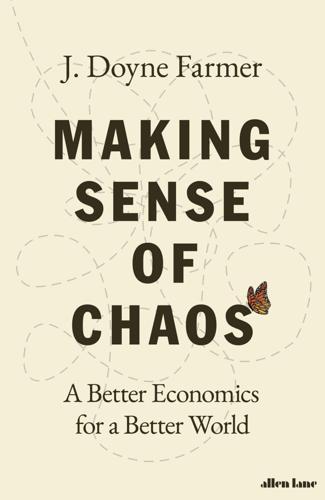
Making Sense of Chaos: A Better Economics for a Better World
by
J. Doyne Farmer
Published 24 Apr 2024
As we will discuss at the end of the chapter, some of the more progressive central banks are developing complexity-economics models to better understand how to design regulatory frameworks that take systemic risk into account. In books and papers published in the 1970s, the Washington University Marxist economist Hyman Minsky postulated that, when markets are calm, competition drives investors to take on more leverage to increase their profits, which can cause a crash when conditions change. Minsky’s arguments were not expressed in mathematical terms, and they ran counter to prevailing views about market efficiency, so they were largely ignored at the time.
…
Although the model does not contain all the mechanisms that fueled the crisis, such as the housing bubble, it generates behavior that quantitatively matches the crisis and the events leading up to it. The housing bubble may only have been the spark that lit the fire. Our model is in the spirit of Hyman Minsky’s and John G.’s prescient warnings, and we all agree that high leverage is problematic. But the underlying mechanism causing problems is different: Minsky argued that greed and competition would drive leverage up when markets got too quiet, and John G. argued that the problem is due to heterogeneous investors, with different levels of optimism.
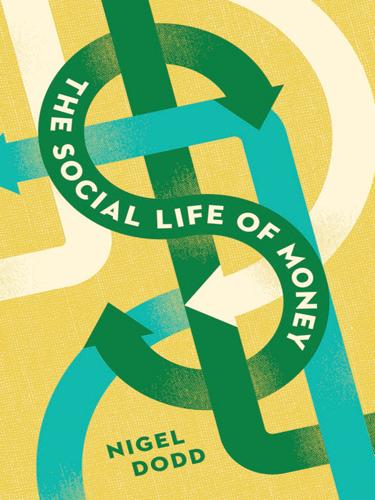
The Social Life of Money
by
Nigel Dodd
Published 14 May 2014
Whereas the traditional image of a bank is as a crucial intermediary between lenders and borrowers, banks today operate not simply as issuers of debt but also as repositories of risk. To grasp the significance of this difference for money, I want to turn to the arguments of Hyman Minsky and Susan Strange. MINSKY’S HALF-CENTURY Hyman Minsky was a doctoral student of Joseph Schumpeter and Wassily Leontief at Harvard during the 1940s. Whereas Schumpeter had drawn attention to banks’ importance in the business cycle, Minsky’s main focus was on the effect of financial markets on the wider economy (Minsky 1993a, 1993b).
…
When reading through these steps, it is not difficult to see how one could imagine Marx saying, “I told you so.” In the 2007–8 crisis, we saw a sudden credit depreciation trigger a flight from risk, whereby investors sought to offload financial instruments in a rush for the safe haven of money, or at the very least, the higher rated sovereign bonds, such as U.S. Treasury bills. Foreshadowing Hyman Minsky’s theory of Ponzi finance (see Chapter 3), Marx portrays the monetary and credit system as a pyramid with the riskiest and most speculative instruments (fictitious capital) at the top, credit money in the middle, and “real” money (or hard cash) at the bottom. The crucial point is that this hierarchy grows more top heavy with each credit inflation, as increasingly confident (and reckless) financial capitalists lend money purely though speculation, not as capital for production.

The Ascent of Money: A Financial History of the World
by
Niall Ferguson
Published 13 Nov 2007
Anyone who today doubts that there are lessons to be learned from history needs do no more than compare the academic writings and recent actions of the current chairman of the Federal Reserve System.93 A Tale of Fat Tails Sometimes the most important historical events are the non-events: the things that did not occur. The economist Hyman Minsky put it well when he observed: ‘The most significant economic event of the era since World War II is something that has not happened: there has not been a deep and long-lasting depression’.94 This is indeed surprising, since the world has not been short of ‘Black Days’. If movements in stock market indices were statistically distributed like human heights there would hardly be any such days.
…
Lamoreaux, and Jean-Laurent Rosenthal, ‘Putting the Corporation in its Place’, NBER Working Paper 13109 (May 2007). 2 See especially Robert J. Shiller, Irrational Exuberance (2nd edn., Princeton, 2005). 3 See Charles P. Kindleberger, Manias, Panics and Crashes: A History of Financial Crises (3rd edn., New York / Chichester / Brisbane / Toronto / Singapore, 1996), pp. 12-16. Kindleberger owed a debt to the pioneering work of Hyman Minsky. For two of his key essays, see Hyman P. Minsky, ‘Longer Waves in Financial Relations: Financial Factors in the More Severe Depressions’, American Economic Review, 54, 3 (May 1964), pp. 324-35; idem, ‘Financial Instability Revisited: The Economics of Disaster’, in idem (ed.), Inflation, Recession and Economic Policy (Brighton, 1982), pp. 117-61. 4 Kindleberger, Manias, p. 14. 5 ‘The Death of Equities’, Business Week, 13 August 1979. 6 ‘Dow 36,000’, Business Week, 27 September 1999. 7 William N.
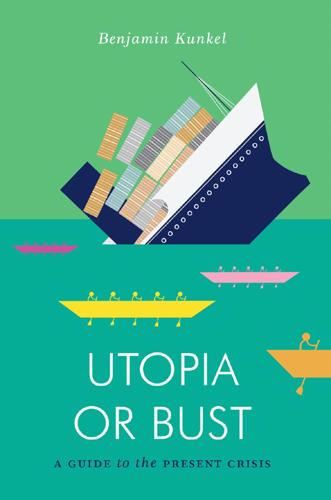
Utopia or Bust: A Guide to the Present Crisis
by
Benjamin Kunkel
Published 11 Mar 2014
John Maynard Keynes’s classic General Theory of Employment, Interest and Money (1936) offers not just a diagnosis of capitalist crisis—“The outstanding faults of the economic society in which we live are its failure to provide for full employment and its arbitrary and inequitable distribution of wealth and incomes”—but a partial remedy for it. One Keynesian medicine is “a substantial socialization of investment.” The General Theory is also a masterpiece of tone, by turns sarcastic, sweetly reasonable, wistful, haughty, and impassioned: proof, in all, that economists needn’t write deadly prose. The works of Keynes’s follower Hyman Minsky, particularly John Maynard Keynes (1975) and Stabilizing an Unstable Economy (1986), can’t be recommended on their literary merits but do suggest, in their advocacy of large-scale public investment, how Keynesian and socialist responses to the present crisis might converge. Keynesianism, however, possesses no explanation for the reluctance of governments to adopt economic policies favoring the common good—which is after all not the object of capitalist societies.
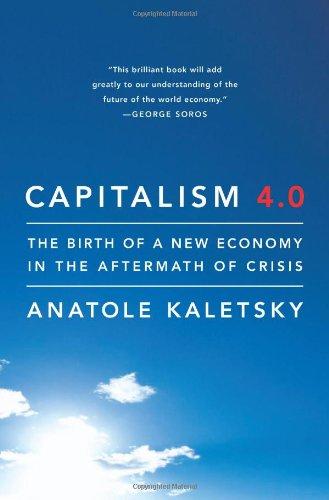
Capitalism 4.0: The Birth of a New Economy in the Aftermath of Crisis
by
Anatole Kaletsky
Published 22 Jun 2010
At this point, government spending and borrowing, plus direct action to push credit into the economy, may be needed to prevent a prolonged slump. This was essentially what the G20 governments concluded in April 2009 when they took various measures to boost economic growth and try to force their banks to expand credit. Cycles Driven by Investor Psychology and Uncertainty Hyman Minsky, a great American economist based at Washington University in St. Louis, argued in the 1960s that long periods of economic stability would lead to conditions of financial overconfidence that would, in turn, promote leverage and exaggerate risk-taking and increase debt burdens throughout society.
…
Morgan Kahn, Richard Kahneman, Daniel Kaldor, Nicholas Kalecki, Michal Keynes/Keynesian economics “animal spirits,” biography of Keynes boom-bust cycles explanation Capitalism and Golden Age ideas/policies mathematics and See also Economics eras/second; Macroeconomics Khrushchev, Nikita King, Mervyn Knight, Frank Krugman, Paul Kuhn, Thomas Labor unions stagflation and unemployment and Lagarde, Christine Laissez-faire philosophy Lehman Brothers capitalism transition and saving scenario/effects Lehman Brothers collapse chain reaction from confidence collapse and effects GSE seizure and share price plunge Limits to growth/physical resources Lloyds Lockhart, James MacDonald, Ramsay Macroeconomics economics eras/second new classical school and recovery from financial crisis See also Capitalism 4.0/economic policy; Keynes/Keynesian economics Mad Max (movie) Mad Max Paradox Mahbubani, Kishore Mandela, Nelson Mandelbrot, Benoit Mark-to-market accounting/effects Market fundamentalism description economic recovery and failed states and financial crisis of 2007-09 and flaws/dangers of imaginary world of oil prices/shock (2008) and progressive taxation and term See also Economics eras/third; Monetarism; specific individuals; Thatcher-Reagan revolution Marris, Robin Marx, Karl on capitalism social problems and Masters, Michael Mathematics in economics normal distribution use oversimplification and “science” and McCarthy, Joe Meade, James Medicare/Medicaid, U.S. Megatrends overview summary Mellon, Andrew Merkel, Angela Merrill Lynch Mexican government bankruptcy Micawber, Mr./Principle Microeconomics Mill, John Stuart Minsky, Hyman Minsky Moment (Mis)behavior of Markets (Mandelbrot) Mises, Ludwig von Mississippi Company, Paris Mixed economy adaptability and energy policy example of future government-market relationship Monetarism demand management and description end of government role/inflation and outside U.S. See also Market fundamentalism; specific individuals; Thatcher-Reagan revolution Morgan, J.P.
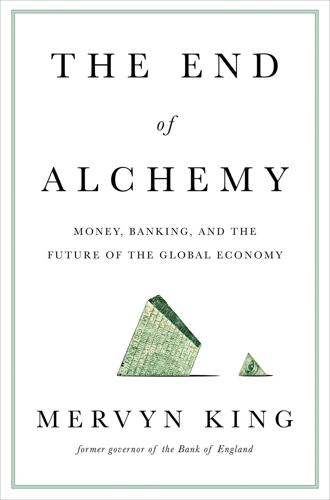
The End of Alchemy: Money, Banking and the Future of the Global Economy
by
Mervyn King
Published 3 Mar 2016
They recommended ending the system of ‘fractional reserve banking’, under which banks create deposits to finance risky lending and so have insufficient safe cash reserves to back their deposits.12 The elimination of fractional reserve banking was a proposal put forward in 1933 as the ‘Chicago Plan’.13 The proponents of the plan included the brilliant American monetary theorist Irving Fisher and a distinguished group of economists at Chicago such as Frank Knight, Henry Simons and Paul Douglas; later support came from right across the spectrum of post-war economists, ranging from Milton Friedman to James Tobin and Hyman Minsky.14 Interestingly, John Maynard Keynes was not part of this group, largely because Britain did not experience a banking crisis in the 1930s and his focus was on restoring output and employment.15 More recently, a number of economists have proposed variations on the same theme: John Cochrane from Chicago, Jaromir Benes and Michael Kumhof from the IMF, the British economists Andrew Jackson, Ben Dyson and John Kay, Laurence Kotlikoff from Boston and the distinguished FT commentator Martin Wolf.16 There are two ways of looking at these radical approaches to banking reform, one by focusing on the banks’ assets and the other on their liabilities.
…
They represent not the random shocks of the forecasters’ models but the realisation of radical uncertainty.15 The intellectual framework of the neoclassical model, as implemented empirically in New Keynesian models, appeared the best on offer, but it was inadequate to explain the build-up of a disequilibrium that resulted in the crisis.16 To sum up, neither Keynesian nor neoclassical theories provide an adequate explanation of booms and depressions. After the recent crisis there was a resurgence of interest in theories that purported to explain the transition from periods of boom to periods of slump. Foremost among these was the theory of Hyman Minsky, an American economist who tried to reinterpret Keynes, that market economies inevitably exhibit financial instability.17 Long periods of stability would, he argued, create excessive confidence in the future, leading to the underpricing of risk and overpricing of assets, a boom in spending and activity, and excessive accumulation of debt, ending in a financial crash which, because of high debt burdens, would lead to a deep recession.
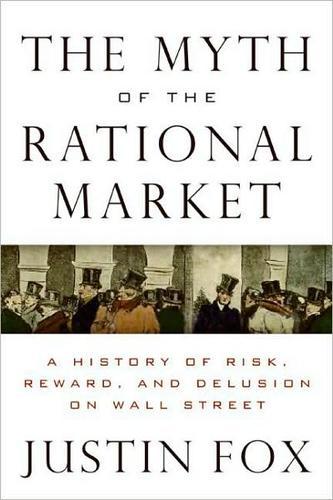
The Myth of the Rational Market: A History of Risk, Reward, and Delusion on Wall Street
by
Justin Fox
Published 29 May 2009
It is apparent, though, that something important is lost when Mills’s observation about fluctuating attitudes toward risk is removed from the analysis of the market. Keynes tried to incorporate it with talk of “animal spirits” that affected economic activity, but the Keynesian economics that arose in his wake busied itself with more mechanistic, less psychological explanations for downturns. Starting in the 1960s, economist Hyman Minsky began a long, lonely effort to bring the animal-spirits side of Keynesianism back into focus. Minsky was a product of Chicago (undergrad) and Harvard (doctorate), and taught at respectable places like UC–Berkeley and Washington University in St. Louis. But he operated far out of the mainstream.
…
In a dismissive nod to Shiller, they admonished those who argued that “high price growth” was “evidence per se that housing is overvalued.”11 It was true that Shiller’s price history didn’t prove anything, but his data did seem to indicate that using recent data to judge risk—because it’s the best, most reliable data available—could be misleading. And it put Shiller yet again in the Roger Babson–like position of arguing that what goes up must come down—which it did. AS CREDIT MARKETS BEGAN TO unravel in the latter half of 2007, the once-obscure Hyman Minsky—who had died in 1996—suddenly became a star. He was cited incessantly by Wall Street strategists. His books returned to print. Mainstream economists began to acknowledge that there might be something to his ideas.12 Even before then, in one of his valedictory speeches as Fed chairman in August 2005, Alan Greenspan struck a distinctly Minskyan tone: [The] vast increase in the market value of asset claims is in part the indirect result of investors accepting lower compensation for risk.
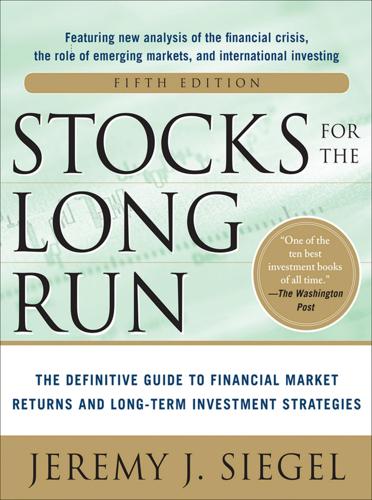
Stocks for the Long Run 5/E: the Definitive Guide to Financial Market Returns & Long-Term Investment Strategies
by
Jeremy Siegel
Published 7 Jan 2014
A slowdown in business activity, which under normal times would be well tolerated, can easily overwhelm highly leveraged borrowers who have too little cushion to insulate them from a market decline. Some economists believe that the cycle of falling risk premiums and rising leverage is the major cause of economic fluctuations. Hyman Minsky, an economics professor from Washington University in St. Louis, formulated the “financial instability hypothesis,”6 in which he believed long periods of economic stability and rising asset prices drew in not only speculators and “momentum” investors but also swindlers who engage in Ponzi schemes that trap ordinary investors who wish to ride the market’s upward breaks.
…
Students shook their heads in disbelief, and we all laughed about this curious piece of history that we thought could never happen again. 5. The standard deviation of quarterly changes in nominal GDP fell from 5.73 percent from 1947 to 1983 to 2.91 percent from 1983 to 2009. 6. The Jerome Levy Economics Institute of Bard College, Working Paper No. 74, May 1992; see also Robert Pollin, “The Relevance of Hyman Minsky,” Challenge, March/April 1997. 7. Subprime mortgages were not solely the creation of Wall Street firms. Politicians who wanted to give millions of Americans their first chance to realize the “American Dream” of home ownership encouraged the government-sponsored lenders Fannie Mae and Freddie Mac to issue these loans to those who would not ordinarily qualify for conventional mortgages. 8.
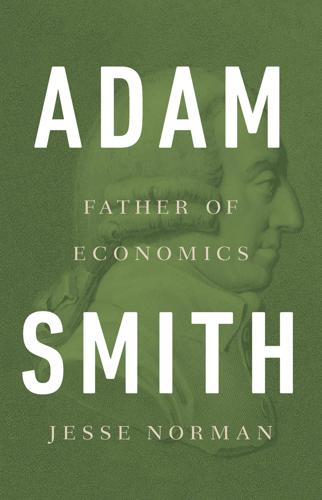
Adam Smith: Father of Economics
by
Jesse Norman
Published 30 Jun 2018
Almost exactly the same process can operate with the failure of money market funds; and of bank lending to businesses against collateral, or trading on margin. A relatively small initial market movement can quickly become a rout, as occurred with the failures of the investment banks Bear Stearns and Lehman Brothers. Our understanding of these channels of destabilization has greatly improved in recent years, in part due to the pioneering work of Hyman Minsky. It does not require us to make any unusual assumptions about human behaviour. Within each channel lie specific internal incentives for investors to act as they do. But what about asset markets as a whole? They do not operate independently of the wider economy, as mainstream economics often seems to suggest.
…
Kindleberger, Manias, Panics, and Crashes, 4th edn, John Wiley 2000; Robert Shiller, Irrational Exuberance, Princeton University Press 2000; Peter Garber, Famous First Bubbles: The Fundamentals of Early Manias, MIT Press 2000; and for finance, Carmen Reinhart and Kenneth Rogoff, This Time is Different, Princeton University Press 2011 Keynes’s beauty competition: J. M. Keynes, The General Theory of Employment, Interest and Money, Macmillan 1936 Asset markets and credit creation: see George Cooper, The Origin of Financial Crises, 2nd edn, Harriman House 2010 Hyman Minsky: see his Stabilizing an Unstable Economy, Yale University Press 1986. Minsky’s insistence on radical uncertainty, on the centrality of the financial sector to the modern economy and on the pro-cyclical nature of market dynamics is especially noteworthy US housing market and the 2008 crisis: Steven D.
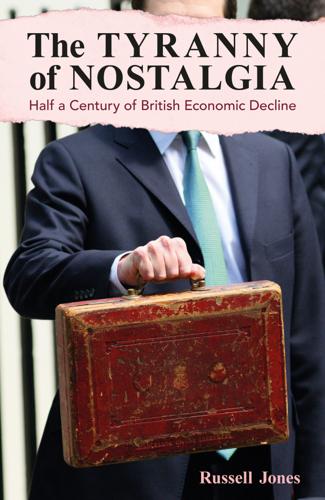
The Tyranny of Nostalgia: Half a Century of British Economic Decline
by
Russell Jones
Published 15 Jan 2023
The absence of serious financial difficulties over a substantial period leads to a euphoric economy in which short-term financing of long-term positions becomes a normal way of life. As the previous financial crisis recedes in time, it is quite natural for central banks, government officials, bankers, and businessmen and even economists to believe that a new era has arrived. — Hyman Minsky, 19861 cardiac arrest In the second half of 2007 the global financial system entered a period of acute and escalating crisis that was to reach its apogee towards the end of 2008, following the collapse of the US investment bank Lehman Brothers. Burgeoning solvency issues for banks and other financial institutions around the world triggered what was then the most dramatic downturn of the post-war period: a recession that was not only very deep but also disturbingly obdurate, and which exerted a malign influence that endures to this day.
…
Moreover, in the US at least, some policy levers that were important circuit-breakers during the crisis may no longer be available in future. For example, the Fed can no longer lend as widely under the ‘exigent circumstances’ criteria of Section 13.3 of the Federal Reserve Act. Overall, systemic financial crises remain hard-wired into the capitalist system. Hyman Minsky’s fundamental point that time – and, more importantly, stability – breeds complacency remains apposite. Another major trauma will come along before too long. Perhaps the only certainty is that it will be different to the last. In chapter 11 it will be demonstrated that, to the extent that policy lessons were learned from the traumas of 2007–9 and that changes were made, they were largely designed to fight the last war
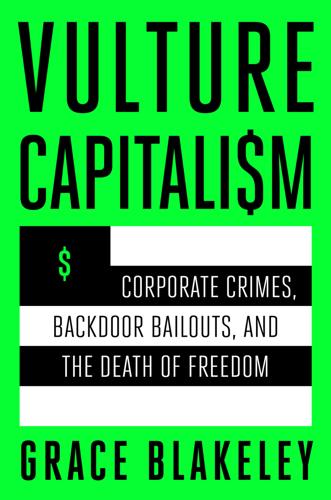
Vulture Capitalism: Corporate Crimes, Backdoor Bailouts, and the Death of Freedom
by
Grace Blakeley
Published 11 Mar 2024
The most significant factor explaining WeWork’s ability to avoid complete collapse was the bailout from SoftBank, which ended up losing about 90 percent of its initial investment after write-downs.25 There was a viable business at the core of WeWork, but in almost any other scenario the staggering corruption and mismanagement that took place under Neumann would have forced the company into insolvency, allowing a better-run competitor to buy up its assets. Masayoshi Son bought WeWork time, and this is what allowed it to restructure itself into a viable (and much smaller) corporation. Though doubts still remain as to the company’s ability to survive much longer, even after all this external support. As the twentieth-century renegade economist Hyman Minsky noted, companies face a “survival constraint,” which makes access to cash one of the most important factors in determining which ones last.26 Powerful financial institutions are not simply responding to wider economic conditions; they play a role in shaping those conditions by buying time for those they support.
…
Nouriel Roubini told a room full of economists at the International Monetary Fund that the world economy was staring down the barrel of a gun.30 A huge amount of risk was building in the global financial system, much of it linked to subprime mortgages in the US. As soon as some homeowners started to default on their loans, it could bring down some of the largest banks in the world. Dr. Roubini was disparagingly referred to as “Dr. Doom” by his colleagues for his perspicacious comments. Steve Keen, an economist who specializes in the theories of Hyman Minsky, also predicted in 2005 that the buildup of private debt in the global financial system was paving the way for a “Minsky moment,” in which credit markets tighten and fire sales of assets lead to an insolvency crisis.31 That same year, an insider—Raghuram Rajan—told an audience of economists at the annual central bankers meeting in Jackson Hole, Wyoming, that financial “innovations” like collateralized debt obligations and credit default swaps were generating the possibility of a “catastrophic meltdown.”32 What did these economists know that their colleagues didn’t?
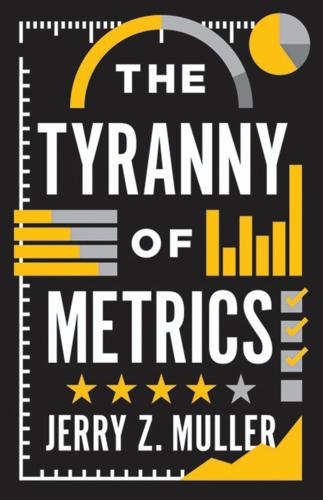
The Tyranny of Metrics
by
Jerry Z. Muller
Published 23 Jan 2018
All this began to change as larger pools of capital (from pension funds, university endowments, and foreign investors) became available for investment and came to be deployed by professional money managers rather than the owners of the capital themselves. The result was a new financial system, characterized as “money manager capitalism” by the maverick economist Hyman Minsky, or “agency capitalism” by Alfred Rappaport, a business school professor.21 Spurred in part by these new opportunities, the traditional Wall Street investment banks transformed themselves into publicly traded corporations—that is to say, they too began to invest not just with their own funds but also with other peoples’ money—and tied the bonuses of their partners and employees to annual profits.
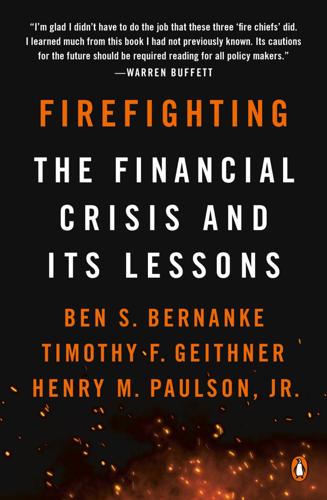
Firefighting
by
Ben S. Bernanke
,
Timothy F. Geithner
and
Henry M. Paulson, Jr.
Published 16 Apr 2019
At the time, serious economists were arguing that financial innovations like derivatives, because of their purported ability to better diversify risks, had made crises a thing of the past. But financial crises will never be a thing of the past. Long periods of stability can create overconfidence that breeds instability, as the economist Hyman Minsky famously observed. It is during those boom times, when liquidity seems limitless and asset values seem destined to keep rising, that risk taking tends to get excessive, posing dangers that can extend well beyond the risk takers. Before the crisis, none of us fully appreciated the vulnerabilities that were building in our financial system.
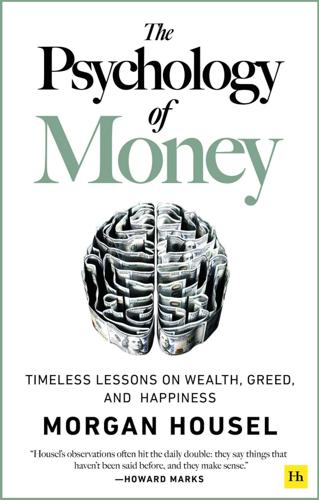
The Psychology of Money: Timeless Lessons on Wealth, Greed, and Happiness
by
Morgan Housel
Published 7 Sep 2020
The share of income going toward debt and lease payments is just over 8% for the highest income groups—those with the biggest income gains—but over 21% for those below the 50th percentile. The difference between this climbing debt and the debt increase that took place during the 1950s and ’60s is that the recent jump started from a high base. Economist Hyman Minsky described the beginning of debt crises: The moment when people take on more debt than they can service. It’s an ugly, painful moment. It’s like Wile E. Coyote looking down, realizing he’s screwed, and falling precipitously. Which, of course, is what happened in 2008. 9. Once a paradigm is in place it is very hard to turn it around.

Angrynomics
by
Eric Lonergan
and
Mark Blyth
Published 15 Jun 2020
MARK: That’s a very strong claim and sounds similar to some of the ideas held by a number of US economists who advised Bernie Sanders and known as modern monetary theory (MMT). They argue for aggressive fiscal spending given structurally low inflation. ERIC: In the absence of inflation, it is true that we have a great deal more fiscal and monetary flexibility. MMT economists don’t have a credible explanation of why inflation is dead. Hyman Minsky, their intellectual forefather, was completely wrong about inflation. Ironically, some of their policies might undermine price stability and end up limiting fiscal flexibility as a consequence. As you argued so forcefully in your book Austerity, and which has since become the consensus, aggressive fiscal and monetary stimulus should be used to counter recessions.
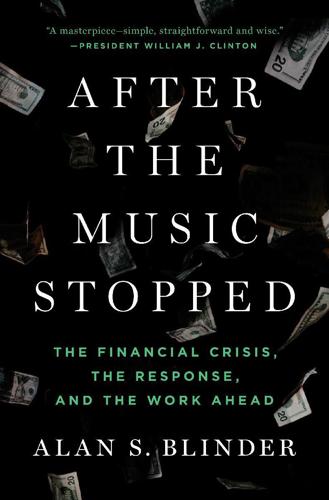
After the Music Stopped: The Financial Crisis, the Response, and the Work Ahead
by
Alan S. Blinder
Published 24 Jan 2013
Some goes to economists who believed and extolled the efficient markets hypothesis—and taught it to their students, many of whom wound up as financial engineers on Wall Street. Another part almost certainly came from people’s collective tendency to forget the past. When times are good, asset values are rising, and loan defaults are rare, it is all too easy to forget one of the laws of financial gravity: What goes up too fast usually comes crashing down. The late Hyman Minsky, an important but neglected economist, emphasized the forgetfulness factor in his theory of recurrent financial crises. In recent years, many Wall Streeters have taken to calling the 2007–2009 crisis a “Minsky moment.”* It was quite a moment. Too bad traders didn’t remember their Minsky before the debacle.
…
Thou Shalt Remember That People Forget Looking back, Tim Geithner attributed the crisis, in part, to collective amnesia: “There was no memory of extreme crisis, no memory of what can happen when a nation allows huge amounts of risk to build up.” Evidence of forgetting is all around us: in markets, in Congress, and in our nation’s vaunted financial institutions. Hyman Minsky, the renegade economist who argued against market efficiency, taught us, or rather should have taught us, that it is normal for speculative markets to go to extremes. That’s what they do. One key reason, according to Minsky, is that, unlike elephants, people forget. When the good times roll, investors expect them to roll indefinitely.
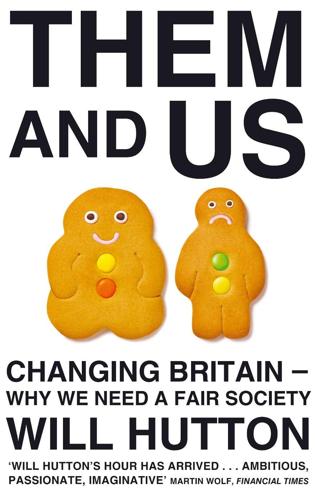
Them And Us: Politics, Greed And Inequality - Why We Need A Fair Society
by
Will Hutton
Published 30 Sep 2010
Ex-President Bill Clinton now regrets succumbing to the lobbying, and President Barack Obama has proposed and secured a version of the central clearing exchange for derivative trading that the previous Democratic administration stifled at birth in 1999 – but still the bankers are resisting, creating loopholes and exemptions. American economist Hyman Minsky, sadly not alive to witness what he predicted about the banking collapse, argued that, as booms progress, bankers naturally become less risk averse and borrowers become more reckless.19 He even devised terms to describe the various stages in the process: financing moves from ‘hedged’ (anticipated revenues exactly repay debt) to ‘speculative’ (revenues fall short, so refinancing is a certainty) to ‘Ponzi’ (revenues are inadequate and any loan will be repaid only if there are capital gains).
…
The Implications of Evolving Policy Regimes’, paper presented at a symposium sponsored by the Federal Reserve Bank of Kansas City. 18 Manuel Roig-Franzia, ‘Credit Crisis Cassandra’, Washington Post, 26 May 2009, at http://www.washingtonpost.com/wp-dyn/content/article/2009/05/25/AR2009052502108.html. 19 Hyman Minsky (2008) Stabilizing an Unstable Economy, McGraw-Hill Professional. See also George Cooper (2008) The Origin of Financial Crises: Central Banks, Credit Bubbles and the Efficient Market Fallacy, Harriman House. 20 Charles Kindleberger (2005) Manias, Panics, and Crashes: A History of Financial Crises, Wiley Investment Classics, p. 19. 21 Vernon Smith, Gerry Suchanek and Arlington Williams (1988) ‘Bubbles, Crashes, and Endogenous Expectations in Experimental Spot Asset Markets’, Econometrica 56: 1119–51. 22 William White (2009) ‘Should Monetary Policy Be “Lean or Clean”?’
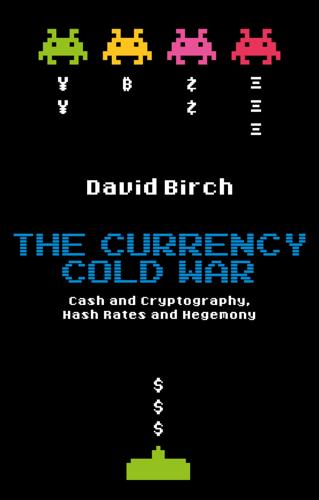
The Currency Cold War: Cash and Cryptography, Hash Rates and Hegemony
by
David G. W. Birch
Published 14 Apr 2020
If I decided that I did not like pounds and wanted to create a new currency of my own, it would be a bit of a hassle to have to start minting coins, printing notes and persuading McDonalds to add another drawer to their cash registers. In the world of Apple, Angry Birds and Amazon, though, this is not a problem. I can just make up my digital currency and off I go. Although, as the economist Hyman Minsky famously observed, creating money is easy: getting it accepted is the hard part. Why would someone accept new currency, such as my proposed Wessex e-Groats, instead of euros? Convenience, for one thing. Look at private currencies, such as Marks & Spencer vouchers or Amazon gift certificates, as a pointer.
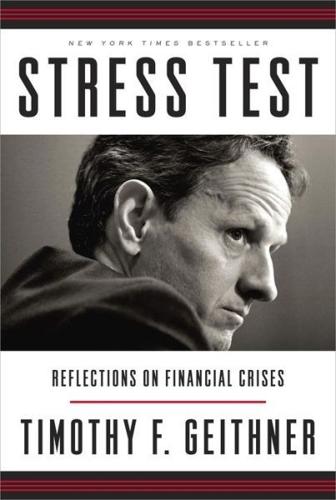
Stress Test: Reflections on Financial Crises
by
Timothy F. Geithner
Published 11 May 2014
In Asia, credit nearly doubled in the three years before the crisis. The sustained period of rapid economic growth caused investors to ignore the vulnerability of fixed exchange rates and forget that capital inflows could become outflows in a hurry. They assumed that past performance would indicate future results. As the American economist Hyman Minsky explained in work I would read a decade later, stability can produce excessive confidence, which produces the seeds of future instability. This penchant for self-delusion is inherently human, but it does not inevitably lead to financial and economic crises. At the time, a similar dynamic was fueling the U.S. dot-com bubble, as investors enthralled by winners like eBay threw cash at losers like Pets.com.
…
In fact, even after we helped JPMorgan acquire Bear, the financial markets continued to pull back from the surviving investment banks. The prospect of a similar “rescue” was not much comfort to other systemic firms or potential investors; Bear ceased to exist and its shareholders lost a fortune. The moral hazard theorists simply underestimated the mania, the power of Hyman Minsky’s theory, which I first read in 2007, that stability can breed instability. That said, moral hazard was a legitimate problem. Fannie and Freddie exploited their access to cheap capital—a result of the widespread (and ultimately correct) assumption that the government would stand behind their obligations—to take on way too much leverage and risk, a classic example of moral hazard.

Slouching Towards Utopia: An Economic History of the Twentieth Century
by
J. Bradford Delong
Published 6 Apr 2020
The latter translates into a larger-than-usual deficit, for the government then needs to spend the cash it has earned in order to keep it circulating in the economy. But what happened over 2007–2009 was neither a monetarist depression nor a Keynesian depression. It was, rather, what I call a Minskyite depression, after St. Louis economist Hyman Minsky.19 In this type of downturn, what there is a shortage of—what there is an excess demand for—is safe stores of value: assets that are either cash or can be quickly turned into cash at little or no discount to their face value. Safe is the operative word.20 Over 2007–2009, the world was not short of means-of-payment cash or financial investment vehicles.
…
John Stuart Mill, Essays on Some Unsettled Questions in Political Economy, London: John W. Parker, 1844 [1829]. 18. Nick Rowe, “Money Stocks and Flows,” Worthwhile Canadian Initiative, September 11, 2016, https://worthwhile.typepad.com/worthwhile_canadian_initi/2016/09/money-stocks-and-flows.html. 19. Hyman Minsky, Stabilizing an Unstable Economy, New Haven, CT: Yale University Press, 1986; Charles P. Kindleberger, Manias, Panics, and Crashes: A History of Financial Crises, New York: Basic Books, 1978. 20. J. Bradford DeLong, “John Stewart Mill vs. the European Central Bank,” Project Syndicate, July 29, 2010, www.project-syndicate.org/commentary/john-stewart-mill-vs—the-european-central-bank; Ricardo J.
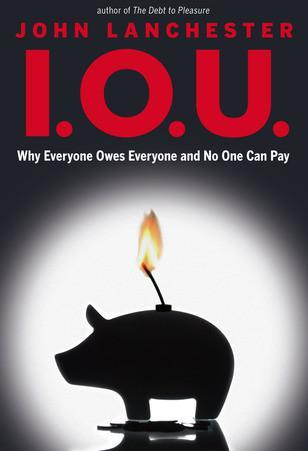
I.O.U.: Why Everyone Owes Everyone and No One Can Pay
by
John Lanchester
Published 14 Dec 2009
Some of what was happening seemed to belong to a classic hysteria equal to that of the great historical bubbles such as the Dutch tulip mania, the South Sea bubble, or the nineteenth-century bubble in railway stocks. The broad rules of these bubbles and implosions are well known. They were first systematized by the economist Hyman Minsky, and their best-known popular formulation is in the classic text by Charles P. Kindleberger, Manias, Panics, and Crashes: A History of Financial Crises. The basic pattern of these manias is that a real phenomenon comes along (overseas exploration, railways, the Internet), is latched onto by investors, is blown out of all proportion, and continues surging upward anyway, so more investors pile in on the basis of what’s now called “greater fool theory.”
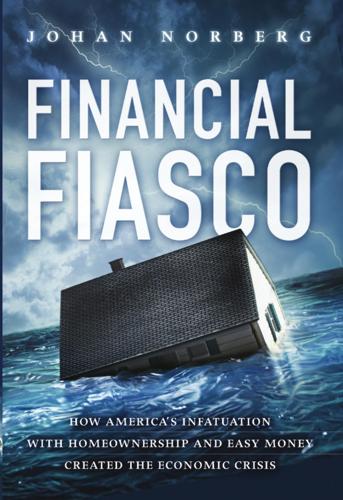
Financial Fiasco: How America's Infatuation With Homeownership and Easy Money Created the Economic Crisis
by
Johan Norberg
Published 14 Sep 2009
The risk, of course, was that renewing the loans would be difficult if there was a crisis, but that seemed a far-fetched concern in a world awash with capital. In addition, the high growth rates made it seem as though there was a wide range of potential investment objects. James Grant once wrote a book entitled The Trouble with Prosperity, and U.S. economist Hyman Minsky claimed that "stability leads to instability." Their point is that nothing is more dangerous than good times because they encourage investors to borrow more and take bigger risks. If things look good, they are going to get worse. "Investors said, `I don't want to be in equities anymore, and I'm not getting any return in my bond positions,"' explains a financier who is the author of many financial innovations: "Two things happened.
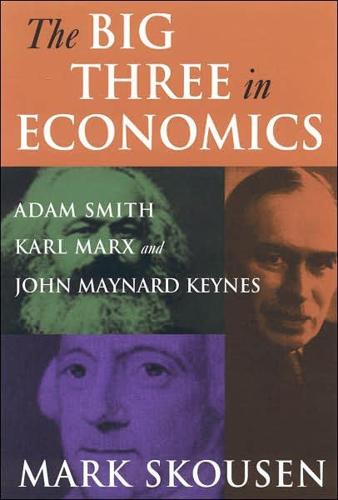
Big Three in Economics: Adam Smith, Karl Marx, and John Maynard Keynes
by
Mark Skousen
Published 22 Dec 2006
Keynes applauded "all sorts of policies for increasing the propensity to consume," including confiscatory inheritance taxes and the redistribution of wealth in favor of lower-income groups, who consume a higher percentage of their income than the wealthy (1973a [1936], 325). Canadian economist Lorie Tarshis, the first to write a Keynesian textbook, warned that a high rate of saving is "one of the main sources of our difficulty," and one of the goals of the federal government should be "reducing incentives to thrift" (Tarshis 1947, 521-12). Keynesian economist Hyman Minsky confirmed this unorthodox approach when he said, "The policy emphasis should shift from the encouragement of growth through investment to the achievement of full employment through consumption production" (Minsky 1982,113). Of course, all of this Keynesian theory goes counter to traditional classical growth theory that a high level of saving is a key ingredient to economic growth.
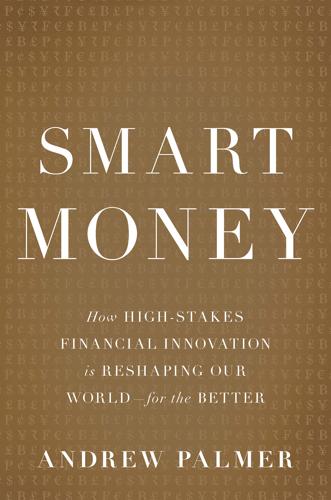
Smart Money: How High-Stakes Financial Innovation Is Reshaping Our WorldÑFor the Better
by
Andrew Palmer
Published 13 Apr 2015
One of the most thought-provoking academic papers to come out of the 2007–2008 financial crisis is a study by Nicola Gennaioli of Pompeu Fabra University, Andrei Shleifer of Harvard University, and Robert Vishny of the University of Chicago, called “Neglected Risks, Financial Innovation and Financial Fragility.” It suffers the usual curses of the economic paper: a crushingly formulaic structure and an enormous amount of algebra. In its very broad outlines, it describes a process of financial euphoria leading to fragility and then crisis that is familiar from the works of economists like Hyman Minsky. Minsky was an American economist who described a process of growing confidence that leads people to take on more and more debt, until the only way it can be safely financed is if asset prices keep rising. At this point, it takes only a small shift in circumstances or attitudes for confidence to evaporate, investors to default, and fire sales of assets to start.
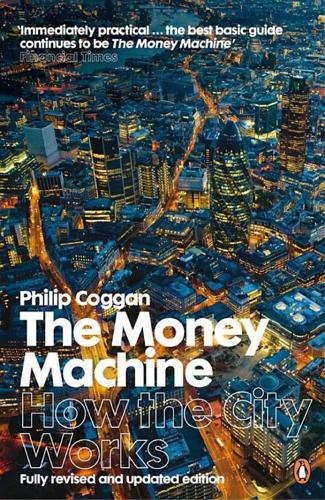
The Money Machine: How the City Works
by
Philip Coggan
Published 1 Jul 2009
One need only gaze at those ‘temples of Mammon’ in Canary Wharf to see how the aura of success must have dazzled regulators and politicians. But the 1980s and 1990s were uniquely favourable for the banking system. Interest rates were low or falling, asset markets were generally rising, recessions were short and mild. As a result, bad debts were small. As the late economist Hyman Minsky argued, these benign conditions encouraged banks (and almost everyone else) to take risks. If you are confident that the future will look roughly as it does today, you will be willing to lend (as a bank) and borrow (as a consumer or company). But the act of lending and borrowing increases your risk level and ensures that tomorrow will be less like today than you think.
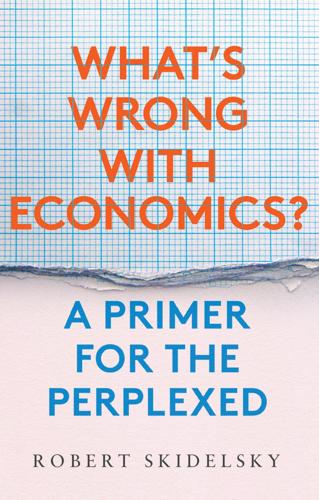
What's Wrong With Economics: A Primer for the Perplexed
by
Robert Skidelsky
Published 3 Mar 2020
First, Keynes himself called his discussion of uncertainty in Chapter 13 of the General Theory a ‘digression’, and standard interpretations of the theory take him at his word. Second, his fragmentary account failed to distinguish clearly between those parts of an economic system which could be considered risky and those which were inescapably uncertain. This is why post-Keynesian attempts, like those of George Shackle (1903–1992), Hyman Minsky (1919–1996), and Paul Davidson (b.1930), to ground economics in epistemological uncertainty have made so little headway. However, Keynes bequeathed another ‘general theory’, which does deserve serious consideration as a foundation for a reformed economics. This is his theory of probability, offered in his Treatise on Probability, a neglected masterpiece conceived before Keynes thought of himself as an economist, in which he expounds what Rod O’Donnell calls ‘a general theory of rational belief and action’.2 It was not published until 1921, the same year as Knight’s Risk, Uncertainty and Profit, but the germ of the idea dates back to 1904, when Keynes was a student at Cambridge University.
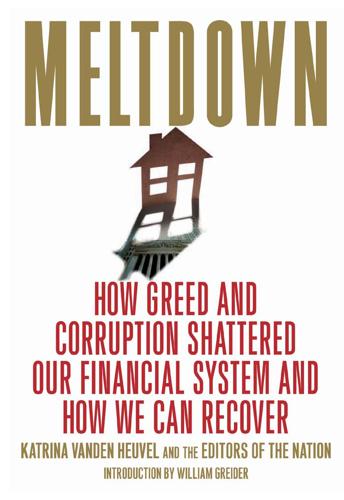
Meltdown: How Greed and Corruption Shattered Our Financial System and How We Can Recover
by
Katrina Vanden Heuvel
and
William Greider
Published 9 Jan 2009
If this freeze continues there is no avoiding it—Great Depression II will begin to resemble Great Depression I, when one-third of a nation was out of work and on the dole. We’re All Minskyites Now R O B E R T P O L L I N November 17, 2008 As the most severe financial crisis since the 1930s Depression has unfolded over the past eighteen months, the ideas of the late economist Hyman Minsky have suddenly come into fashion. In the summer of 2007, the Wall Street Journal ran a front-page article describing the emerging crisis as the financial market’s “Minsky moment.” His ideas have since been featured in the Financial Times, BusinessWeek and the New Yorker, among many other outlets.
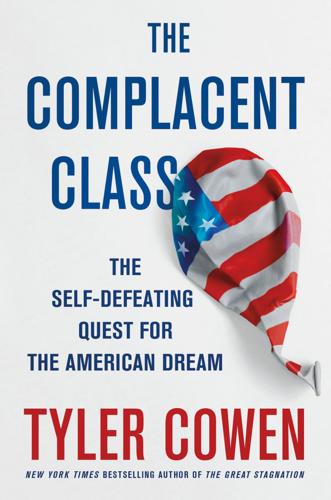
The Complacent Class: The Self-Defeating Quest for the American Dream
by
Tyler Cowen
Published 27 Feb 2017
The more stable that investors and homeowners, thought things would be, over time, the more willing they became to take risk and pile on excess leverage. Americans borrowed more and more, and eventually thus arose a real estate bubble and an unstable banking system. By now the story is well known and I won’t repeat it all here. But by the end of the financial crisis, economic opinion had shifted in the direction of the ideas of Hyman Minsky, an earlier theorist of cyclical economic crises. Minsky had argued that periods of financial stability contained the seeds of their own destruction, because eventually all that stability would cause investors to let down their collective guard and take too much risk. We saw a version of the same happen in the eurozone, where, following the creation of the euro, there were many very positive expectations and a major flow of capital to the economy in the periphery, including of course Greece.
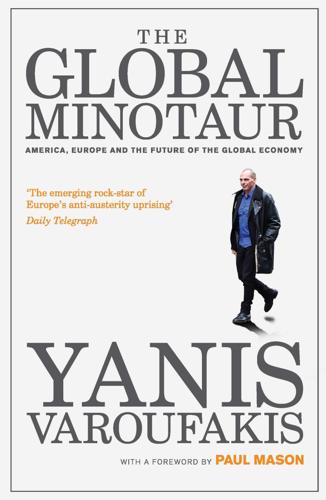
The Global Minotaur
by
Yanis Varoufakis
and
Paul Mason
Published 4 Jul 2015
John Maynard Keynes (1883–1946) put the same thought more elegantly in his 1936 (Great Depression-inspired) book, known as the General Theory: Speculators may do no harm as bubbles on a steady stream of enterprise. But the position is serious when enterprise becomes a bubble on a whirlpool of speculation. When the capital development of a country becomes a by-product of the activities of a casino, the job is likely to be ill-done. Prophetic words indeed. In the 1970s, Hyman Minsky (1919–96) took Keynes’ point a little further, blending it with the cyclical narrative coming out of our paradox of success. Minsky’s suggestion was that periods of financial stability and growth cause the rate of defaults on loans to drop and, for this reason, inspire confidence in banks that loans will be repaid.
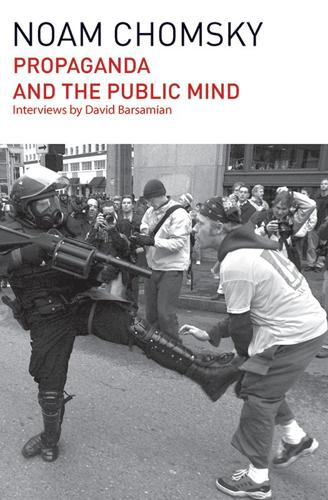
Propaganda and the Public Mind
by
Noam Chomsky
and
David Barsamian
Published 31 Mar 2015
Jagdish Bhagwati, a free-trade true believer and economist at Columbia University, has been writing about how we have to understand elementary economics. He claims free trade is great for manufacturing but it’s a disaster for finance. Financial markets just don’t work like markets in goods. There’s good reason to believe that. Economists like John Maynard Keynes and Hyman Minsky have studied this. It’s a well-known area of economics, and the experience of the last twenty-five years seems to bear it out. It’s also worth remembering that one of the reasons why back in 1944 the Bretton Woods system did insist on regulation of financial flows was because they wanted to preserve the welfare state.

23 Things They Don't Tell You About Capitalism
by
Ha-Joon Chang
Published 1 Jan 2010
Throughout history, there have been many schools of economic thinking that have helped us better manage and develop our economies. To start from where we are today, what has saved the world economy from a total meltdown in the autumn of 2008 is the economics of John Maynard Keynes, Charles Kindleberger (the author of the classic book on financial crises, Manias, Panics, and Crashes) and Hyman Minsky (the greatly undervalued American scholar of financial crises). The world economy has not descended into a rerun of the 1929 Great Depression because we absorbed their insights and bailed out key financial institutions (although we have not properly punished the bankers responsible for the mess or reformed the industry yet), increased government spending, provided stronger deposit insurance, maintained the welfare state (that props up the incomes of those who are unemployed) and flushed the financial market with liquidity on an unprecedented scale.
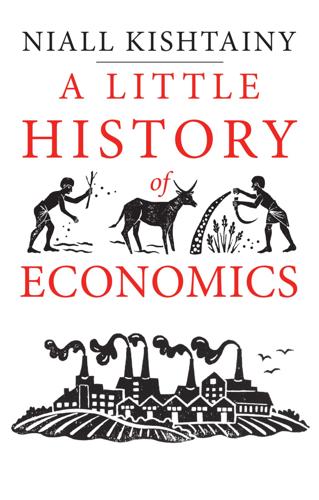
A Little History of Economics
by
Niall Kishtainy
Published 15 Jan 2017
The crisis was a complete shock – even to economists. During the 1990s they’d hailed the Great Moderation, an era of steady economic growth with low inflation. Now it looked as if they’d been much too cheerful. Occasionally, though, economists step away from conventional thinking and are ahead of their time. The American Hyman Minsky (1919–96) was one. Although he was no longer alive when the crisis came, he was rediscovered when it hit; many people believed that his ideas explained what happened better than conventional economics could. Second-hand copies of his books started selling for hundreds of pounds. The crisis got yet another name: ‘the Minsky moment’.
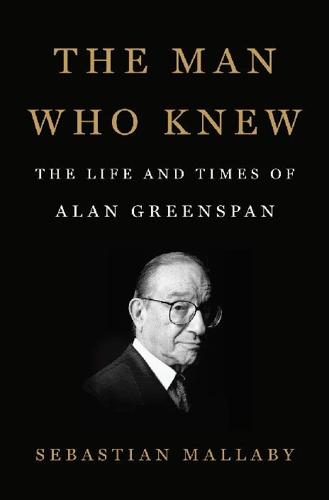
The Man Who Knew: The Life and Times of Alan Greenspan
by
Sebastian Mallaby
Published 10 Oct 2016
“If we knew enough, it could be useful, but because we don’t, it is almost misguided.” On the left, critics focused on the unpredictable vagaries of markets, which made the effect of Fed moves correspondingly uncertain. “There is a great hubris in the belief that by changing the cost of financing, the Fed can control the pace of economic activity,” observed Hyman Minsky, an economist who would later be celebrated for his prescient analysis of bubbles. Yet despite the plausible pushback from Blinder, and despite this barrage of attacks, Greenspan was ultimately vindicated. After the record rate hike of November 1994, long-term interest rates did not spike up, as Blinder had feared; instead they stabilized, just as Greenspan had expected.
…
I worry about that, and I worry about that basically because we could be our own worst enemies.” In the years after the 2008 meltdown, the world showed a fresh interest in observations of this kind: success had bred confidence; confidence had blurred into complacency; complacency had caused human beings to behave awfully. By common agreement, the unsung prophet of such cycles had been Hyman Minsky, an American economist who warned that calm periods in markets naturally stimulate an appetite for extra risk, so that finance is never truly stable. But Greenspan understood the Minsky message before Minsky was in vogue—indeed, he understood it at a time when most of the economics profession erroneously believed that macroeconomic stability bred financial stability.29 In this sense, tragically, Greenspan also was the man who knew.
…
Financial assets would be easier to value in a stable setting, the idea went: spared the need to worry about swings in inflation or interest rates, fund managers could focus on assessing the business prospects of firms, and their decisions would steer asset prices toward their efficient, nonbubbly level. But this proposition was excessively optimistic, too. It neglected the point for which the economist Hyman Minsky later became famous: if you remove inflation and interest-rate risk, investors are liable to compensate with extra risk of other kinds, leaving markets no more stable. Since the time when he had dubbed himself the Zipswitch chairman, Greenspan had understood this point. “When things get too good, human beings behave awfully,” he had stated then.
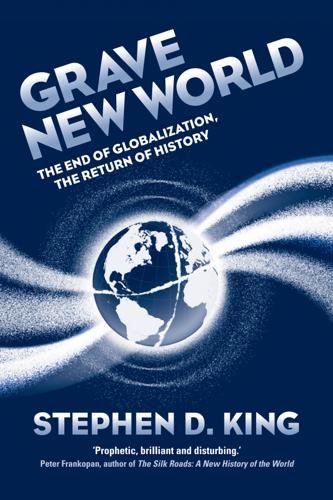
Grave New World: The End of Globalization, the Return of History
by
Stephen D. King
Published 22 May 2017
Most, probably, of our decisions to do something positive, the full consequences of which will be drawn out over many days to come, can only be taken as the result of animal spirits – a spontaneous urge to action rather than inaction, and not as the outcome of a weighted average of quantitative benefits multiplied by quantitative probabilities.11 Later, Hyman Minsky formulated a theory of financial crises which turned out to be eerily prescient. In Minsky’s world, a sustained economic expansion leads eventually to euphoria, a point at which excessive risk-taking is financed by ever-higher levels of debt. As a result, the financial structure goes from ‘robust’ to ‘fragile’.

When the Money Runs Out: The End of Western Affluence
by
Stephen D. King
Published 17 Jun 2013
See Bernanke and James, The Gold Standard, Deflation, and Financial Crisis. 15. P. Krugman, End This Depression Now! (Norton, New York, 2012). 16. See J. Yellen, ‘A Minsky Meltdown: Lessons for Central Bankers’, Board of Governors of the Federal Reserve, Washington, DC, Apr. 2009. Named after Hyman Minsky, a Minsky moment is a situation where, in an over-indebted economy, people are forced to sell good assets to meet the obligations to their creditors, leading to a financial meltdown and a huge increase in the demand for cash. 17. J. M. Keynes, How to Pay for the War: A Radical Plan for the Chancellor of the Exchequer (Macmillan, London, 1940). 18.

The Age of Stagnation: Why Perpetual Growth Is Unattainable and the Global Economy Is in Peril
by
Satyajit Das
Published 9 Feb 2016
Nations, businesses, and individuals need to borrow ever-increasing amounts to repay existing borrowings and maintain economic growth. In the half-century leading up to 2008, the amount of debt needed to create US$1 of GDP in the US increased from US$1–2 to US$4–5. This rapid rise is unsustainable, given an aging population, slower growth, and low inflation. American economist Hyman Minsky identified three phases of finance. In the early stages of a business cycle, money is only available to creditworthy borrowers whose income can meet the principal and interest on the debt, a phase known as hedge finance. As the cycle develops, competing lenders extend money to marginal borrowers, whose income can cover interest payments but not the principal, requiring the debt to be continually refinanced, a phase known as speculative finance.
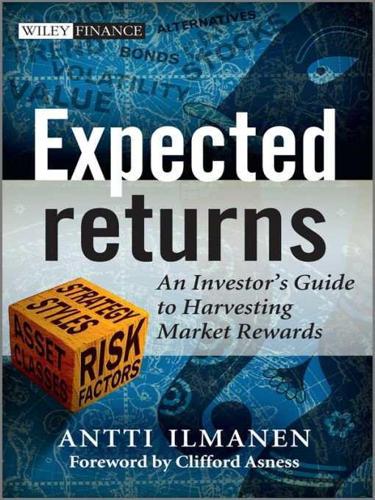
Expected Returns: An Investor's Guide to Harvesting Market Rewards
by
Antti Ilmanen
Published 4 Apr 2011
Three economists besides Shiller warrant mention:• John Maynard Keynes for such pearls as “Most of our decisions . . . can only be taken as the result of animal spirits, a spontaneous urge to action rather than inaction, and not as the outcome of a weighted average of quantitative benefits multiplied by quantitative probabilities” and “It is the nature of organized investment markets, under the influence of purchasers largely ignorant of what they are buying and speculators who are more interested in forecasting the next shift of market sentiment than with a reasonable estimate of future yield of capital assets, that, when disillusion falls upon an over-optimistic and over-bought market, it should fall with sudden and catastrophic force.” Keynes is also credited with a quote that foreshadows a central argument in the limits-to-arbitrage literature: “The market can remain irrational longer than you can remain solvent.” • Hyman Minsky for his insight that financial stability can be destabilizing (because prolonged stable periods make investors extrapolate the stability too far and induce them to overprice risky assets) as well as for his analysis of bubble stages. Each boom starts with displacement (an exogenous shock, akin to Shiller’s precipitating factor) that triggers profit opportunities in some sector.
…
Martin, George A. (2010), “The long-horizon benefits of traditional and new real assets in the institutional portfolio,” Journal of Alternative Investments 13(1), 6–29. McConnell, John; and Wei Xu (2008), “Equity returns at the turn of the month,” Financial Analysts Journal 64(2), 49–64. McCulley, Paul (2009), “The shadow banking system and Hyman Minsky’s economic journey,” in Insights into the Global Financial Crisis (L.B. Siegel, Ed.), Research Foundation of the CFA Institute. McKinsey Global Institute (2009), Global Capital Markets: Entering a New Era, annual report. Mehra, Rajnish, Ed. (2007), Handbook of the Equity Risk Premium, Elsevier Science.
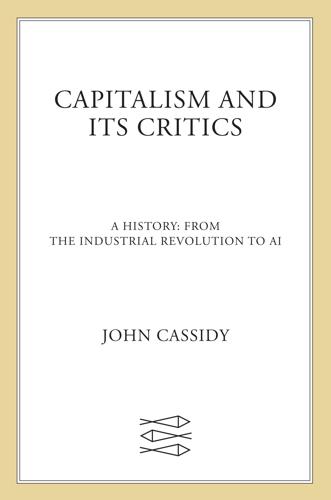
Capitalism and Its Critics: A History: From the Industrial Revolution to AI
by
John Cassidy
Published 12 May 2025
His domestic policy adviser Martin Anderson later recalled: “He could just not resist Friedman’s infectious enthusiasm and Reagan’s eyes sparkled with delight every time he engaged in a dialogue with him.”46 * * * As conservative economics and the deregulation movement were sweeping through the American political arena, a number of more skeptical economists were registering serious concerns. One of them was Hyman Minsky, of Washington University in St. Louis, who was an expert on money and banking. As a left-liberal whose immigrant parents were active in the labor union movement, Minsky disliked Friedman’s conservative policy recommendations for political reasons, but he also believed they were grounded in outdated economics.
…
As Bear tottered on the brink in March 2008, the US Treasury and the Federal Reserve orchestrated a rescue, in which the Fed provided an emergency loan and JPMorgan Chase bought the firm’s operations for a song. Six months later, when Lehman found itself in a similar pickle, the Treasury and the Federal Reserve refused to bail it out. On Monday, September 15, 2008, Lehman filed for bankruptcy. The subprime blowup provided confirmation for Hyman Minsky’s Financial Instability Hypothesis, which he had expounded in the 1970s. As the great real estate boom proceeded, the level of risk-taking by homeowners, mortgage providers, and Wall Street issuers of mortgage securities gradually ramped up. By the later stages, mortgage providers were issuing home loans to buyers who, based on their incomes, couldn’t hope to meet the true financing costs, and often didn’t even understand the nature of the commitments they were taking on.
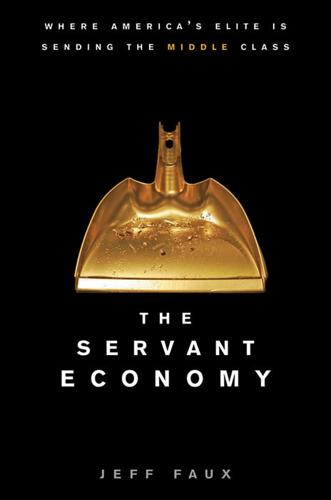
Servant Economy: Where America's Elite Is Sending the Middle Class
by
Jeff Faux
Published 16 May 2012
The rest is history: the crash of Bear Stearns, the bankruptcy of Lehman Brothers, and the panicked response of the Republican White House and a Democratic Congress to pour massive amounts of money into the banks, investment companies, and insurance firms that were deemed “too big to fail.” Although there undoubtedly were challenged intellects among the public and business leaders who were most responsible for the economic crisis, David Brooks’s stupidity explanation does not fit. As John Maynard Keynes, Charles Kindleberger, and many, many other economists, such as Hyman Minsky, had shown, financial excesses were built into the modern economy. Economists might have different ways of explaining the boom-and-bust cycle, but it is inevitable: what goes up must come down. This was no secret on Wall Street. The term Minsky moment was coined by an investment banker for the turning point that kicks off a panic in which investors begin dumping even high-quality assets in order to cover their debts.
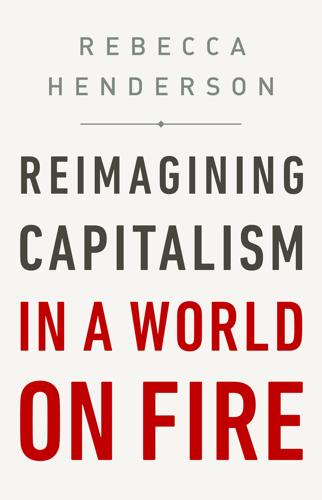
Reimagining Capitalism in a World on Fire
by
Rebecca Henderson
Published 27 Apr 2020
In April 2019 Mark Carney, the governor of the Bank of England, and François Villeroy de Galhua, the governor of the Banque de France, issued a joint statement pointing out that insured losses from extreme weather events have risen five-fold in the last thirty years. They suggested that the financial markets faced the risk of a climate “Minsky moment”—a reference to the work of the economist Hyman Minsky, whose analysis was used to show how banks overreached themselves before the 2008 financial crisis, and warned that those companies and industries that failed to adjust to climate change might cease to exist.47 In October 2019, Jerome Powell, the Federal Reserve chair, wrote to Senator Brian Schatz, noting that climate change was being “considered as an increasingly relevant issue for the central bank.”

MegaThreats: Ten Dangerous Trends That Imperil Our Future, and How to Survive Them
by
Nouriel Roubini
Published 17 Oct 2022
The real economy that produces goods and services is poised to boom for a while, fed by debt arising from low interest rates, ample credit, and enormous economic stimulus by governments. The party will go on until reckless speculation becomes unsustainable, ending with the inevitable collapse in bullish sentiment, a phenomenon called a Minsky moment, named for economist Hyman Minsky. It’s what happens when market watchers suddenly begin to wake up and worry about irrational exuberance. Once their sentiment changes, a crash is inevitable as an asset and credit bubble and boom goes into a bust. Booms and bubbles always precede busts and crashes, but the scale this time far exceeds all precursors.
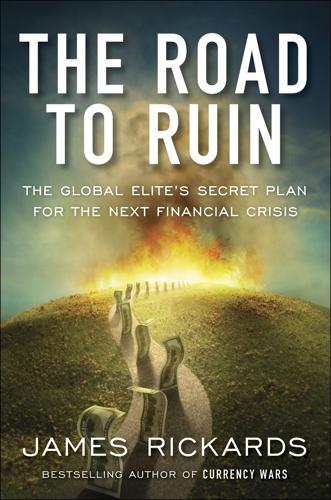
The Road to Ruin: The Global Elites' Secret Plan for the Next Financial Crisis
by
James Rickards
Published 15 Nov 2016
What unites Historical school members are not their conclusions, which vary widely (to the point of contradiction), but rather their inductive method, which relies on close consideration of long-term processes and impressions drawn from that consideration. Earlier adherents to the Historical school include Walter Bagehot, Max Weber, and Karl Marx. Schumpeter is the last pure representative of this school, although Hyman Minsky, Alan Greenspan, and Nobelist Robert Solow were all strongly influenced by him. The Historical school’s inductive method and use of history have today been brushed aside by neo-Keynesian equations and an Austrian insistence on money agency. Yet Schumpeter’s insights into capital formation through entrepreneurship, and its disruptive impact on prevalent business models—creative destruction—seem in sync with the age of Amazon and Netflix.
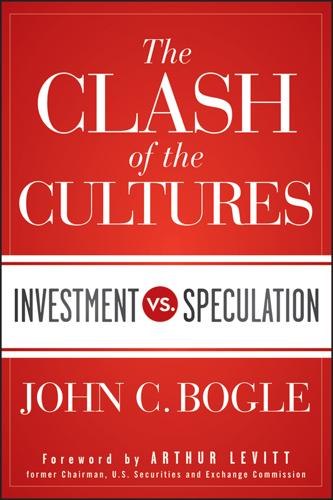
The Clash of the Cultures
by
John C. Bogle
Published 30 Jun 2012
Yet only a long historical perspective can help us sort out what is lasting and salient from what is ephemeral and faddish. In finance, as in all human endeavors, history has valuable lessons to teach.” Restoring Balance in Our Investment Sector Although our financial sector in many ways functions in a different fashion from our productive economy, the two are hardly independent. As the economist Hyman Minsky has pointed out, “Since finance and industrial development are in a symbiotic relationship, financial evolution plays a crucial role in the dynamic patterns of our economy.” So, the dominance of today’s speculative orientation requires not only thought but also corrective action. In the effort to restore a sounder balance between investment and speculation in our financial sector, there are many actions that we should consider.
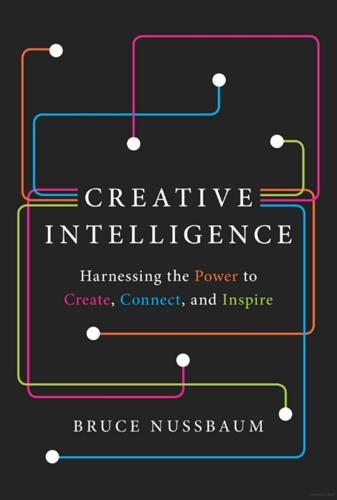
Creative Intelligence: Harnessing the Power to Create, Connect, and Inspire
by
Bruce Nussbaum
Published 5 Mar 2013
Entrepreneurs find new opportunities within the uncertainties of new technologies and changing social relationships and values. Like artists, they thrive within a culture of chance, not a culture of control. It’s not as if economists had never seen proof of the effects of uncertainty: There is a significant literature on market panics going back over a century. In the 1960s and 1970s, as EMT was being developed, Hyman Minsky was writing about booms leading to euphoria, panic, and busts. Charles Kindleberger’s Manias, Panics and Crashes: A History of Financial Crises, was hugely popular when it came out in 1978. British journalist and essayist Walter Bagehot had written about financial crises in Lombard Street, London’s financial district, back in the latter half of the nineteenth century.
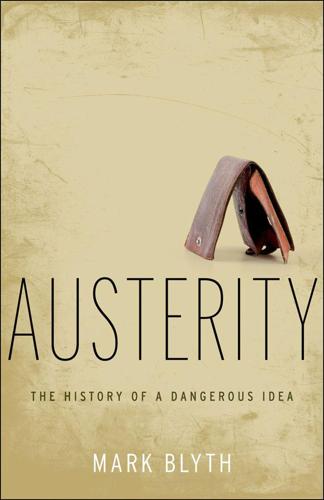
Austerity: The History of a Dangerous Idea
by
Mark Blyth
Published 24 Apr 2013
If the influence of ordoliberalism has been felt primarily in Europe, then the influence of Austrian ideas lies in the United States. Austrian ideas have long had an American pied-à-terre, as we saw in Schumpeter’s diagnoses of the 1930s.40 They came back into vogue in the current crisis because they seemed to have been onto something that few Keynesians (except Hyman Minsky) had paid much attention to, and in doing so they gave us another set of reasons to be austere. Austerity’s American Pied-à-Terre: The Austrian School In the late nineteenth century, Austrian economics emerged in the Austro-Hungarian Empire from the debate over the role the state might play in fostering economic development following Germany’s state-led growth spurt.
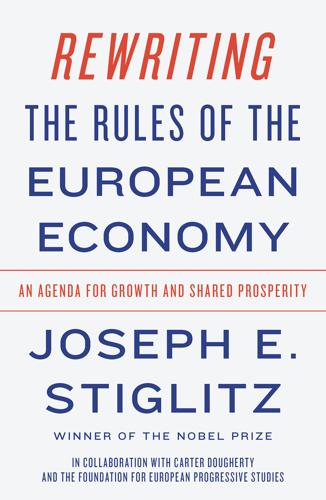
Rewriting the Rules of the European Economy: An Agenda for Growth and Shared Prosperity
by
Joseph E. Stiglitz
Published 28 Jan 2020
# These are called sleeping patents and are designed to forestall entry of competitors. Chapter 5 Toward a Financial System That Serves Society For most of the last half of the twentieth century, European countries presided over a remarkably stable financial system. The opening years of the twenty-first century, however, bore out the warning of economist Hyman Minsky that the moments of complete stability, when the environment seems perfectly and permanently calm, are the most dangerous, as people take on excess risk on the presumption that the stability will continue. In 2008, the world glimpsed the prospect of how the disintegration of the financial system could have pulled down the entire economy with it.
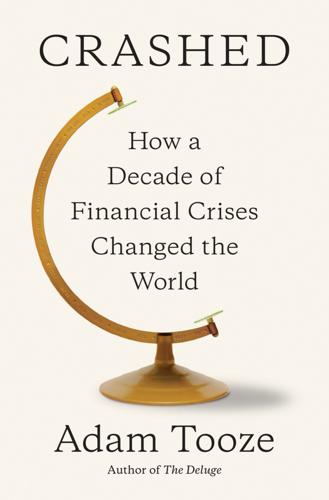
Crashed: How a Decade of Financial Crises Changed the World
by
Adam Tooze
Published 31 Jul 2018
The trauma of defeat in Vietnam, America’s urban crisis and angry Japan bashing—thirty years on Trump was still harping on those fears, but now transposed onto new enemies: China, Islam and undocumented Latino immigrants. His main shtick was that he was a businessman, a deal maker. And because his business was real estate, Trump lived the American business cycle close up. As Hyman Minsky, the legendary analyst of financial crises, observed already in 1990, Donald Trump was the very epitome of a Ponzi scheme capitalist, living hand to mouth by borrowing against the expected appreciation of his assets.19 As a result, crises punctuated Trump’s career. He was hit hard by the early 1990s recession, almost losing his business.
…
Economic and Social Populism in the 2016 Presidential Election, a Preliminary Exploration,” prepared for delivery at the INET Conference, Edinburgh, UK, October 20–23, 2017, https://www.ineteconomics.org/uploads/papers/Ferguson-and-Page-Scotland-Paper-revised-for-Conference.pdf. 18. C. Laderman and B. Simms, Donald Trump: The Making of a Worldview (London: Endeavour Pess, 2017). 19. K. W. Capehart, “Hyman Minsky’s Interpretation of Donald Trump,” Journal of Post Keynesian Economics 38.3 (2015): 477–492 20. F. Norris, “Trump Sees Act of God in Recession,” New York Times, December 4, 2008. 21. Soopermexican, “Trump on TARP and Stimulus Sounds More Like a Crony Capitalist Than a Conservative,” The Right Scoop (blog), August 15, 2015, http://therightscoop.com/trump-on-tarp-and-stimulus-sounds-more-like-a-crony-capitalist-than-a-conservative/. 22.
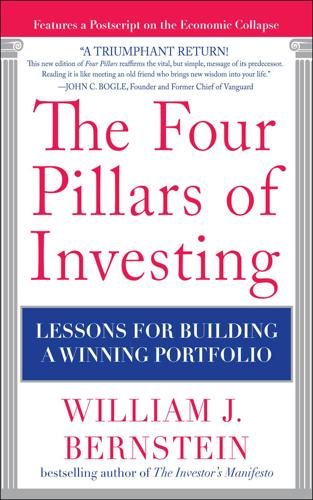
The Four Pillars of Investing: Lessons for Building a Winning Portfolio
by
William J. Bernstein
Published 26 Apr 2002
So it was not unusual that the shares of companies with dubious chances of success should have some value, or that this value should fluctuate. It’s not unusual now (can you spell “biotech?”), and it was certainly not unusual 300 years ago. But from time to time, for reasons that are poorly understood, investors stop pricing businesses rationally. Rising prices take on a life of their own and a bubble ensues. Monetary theorist Hyman Minsky comes as close to a reasonable explanation of bubbles as any. He postulates that there are at least two necessary preconditions. The first is a “displacement,” which, in modern times, usually means a revolutionary technology or a major shift in financial methods. The second is the availability of easy credit—borrowed funds that can be employed for speculation.

The Economics of Enough: How to Run the Economy as if the Future Matters
by
Diane Coyle
Published 21 Feb 2011
Majorities of people in many countries do not believe, at present, that markets are doing a good job of organizing the economy. The immediate crisis is probably the least interesting way in which markets are failing at the moment, however. Financial crises do indeed recur in market economies, at least as far back as the tulip mania of the seventeenth century.17 The economist Hyman Minsky has argued that there is an internal cycle of capitalism that guarantees there will be banking crises from time to time.18 There have been a few in recent decades—in 1993–94, 1997–98, in 2001, as well as 2007–8. Each one is different, and the most recent crisis has been distinctive in involving the world’s very biggest banks.
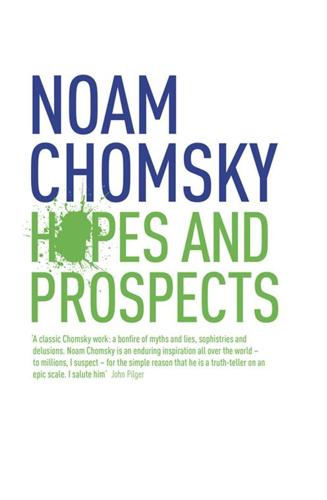
Hopes and Prospects
by
Noam Chomsky
Published 1 Jan 2009
See, for example, David Felix, “The Past as Future? The Contribution of Financial Globalization to the Current Crisis of Neo-Liberalism as a Development Strategy,” Political Economy Research Institute, http://www.peri.umass.edu/fileadmin/pdf/working_papers/working_papers_51-100/WP69.pdf, 2003, bringing up the important work of Hyman Minsky on market inefficiencies, now gaining deserved if belated attention. 7. Michael Kranish, Boston Globe, December 21, 2009. Virtually the only report. See below, pp. 226f. 8. Eric Dash, New York Times, June 10, 2009. 9. Theo Francis and Peter Coy, “No Big Fix for Global Finance,” Business Week, September 9, 2009.

The End of Wall Street
by
Roger Lowenstein
Published 15 Jan 2010
Just as Fannie, Freddie, and Merrill Lynch had undone the labors of a generation—had lost, that is, all the profits and more that they had earned during the previous decade—Greenspan undermined its ideological footing.2 And even if he partly retracted his apologia (in the palliative that it wasn’t the models per se that failed, but the humans that applied them), he was understood to say that the new finance had failed. The boom had not just ended; it had been unmasked. Why did it end so badly? Greenspan’s faith in the new finance was itself a culprit. The late economist Hyman Minsky observed that “success breeds a disregard of the possibility of failure.3 The Fed both embraced and promoted such a disregard. Greenspan’s persistent efforts to rescue the system lulled the country into believing that serious failure was behind it. His successor, Bernanke, was too quick to believe that Greenspan had succeeded—that central bankers had truly muted the economic cycle.
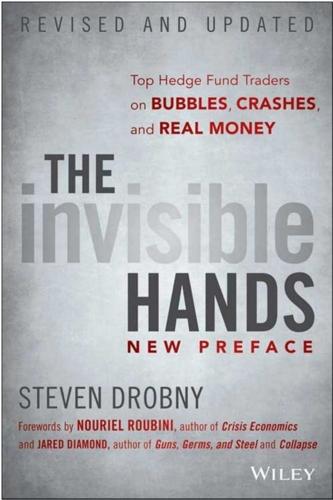
The Invisible Hands: Top Hedge Fund Traders on Bubbles, Crashes, and Real Money
by
Steven Drobny
Published 18 Mar 2010
The hysteria with Milton Friedman’s notion that inflation is always and everywhere a monetary phenomenon places too little significance on the overleveraged nature of our society. It is of course orthodox thinking and it’s hard to say it’s wrong, but I believe it’s wrong. But this is the prevailing mood in investing today. Figure 13.8 Gold, 1979-1980 SOURCE: Bloomberg. Minsky Moment A Minsky moment is a term coined after American economist Hyman Minsky (1919-1996), whose work was primarily focused on understanding the phenomena around financial crises. Minsky held that in good times, investors begin to take on excessive leverage when cash flows begin to cover debt payments, leading to a debt spiral and ultimately a crash. In essence, strong economic environments lead to a certain euphoria, fueling increased debt until levels of borrowing can no longer be supported.
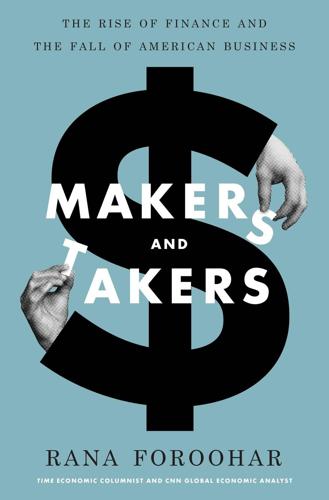
Makers and Takers: The Rise of Finance and the Fall of American Business
by
Rana Foroohar
Published 16 May 2016
The great liberal economist John Maynard Keynes, for one, worried that market capitalism might be able to function quite well without actually employing many people, particularly if money went to speculation rather than productive investment. (He called on the government to boost long-term investment through special incentives.) Other thinkers, like Hyman Minsky, Harry Magdoff, and Paul Sweezy, took that idea further, arguing that finance itself creates bubbles and draws money away from the real economy as a matter of course. As Minsky put it, “capitalism is a flawed system in that, if its development is not constrained, it will lead to periodic deep depressions and the perpetuation of poverty.”9 He also believed that the government would be forced to act as a lender of last resort during such periods, a position that would become untenable as public debt levels rose, leading to more public pressure to allow more speculation, which would unleash renewed instability, and so on.
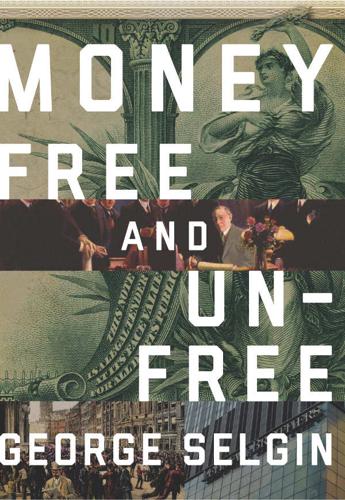
Money Free and Unfree
by
George A. Selgin
Published 14 Jun 2017
A central bank can act as a “lender of last resort” to other banks, assuring depositors that they need never fear a general banking collapse; fiat money in turn guarantees that the lender of last resort itself will never go broke.1 A crucial assumption behind the lender-of-last-resort argument is that fractional-reserve banking is inherently “fragile” and crisis prone—that central banking and fiat money are an unavoidable response to market failure. According to Hyman Minsky (1982: 17), “conditions conducive to financial crises emerge from the normal functioning of a capitalist economy.” In a free market, says Minsky, such conditions will occasionally produce “wide and spreading bankruptcies” that could, however, be prevented by “an alert lender of last resort” (Minsky 1982: 13).2 In this chapter I take issue with the lender-of-last-resort argument by showing that its underlying assumption is false: fractional-reserve banking systems are not inherently weak or unstable.
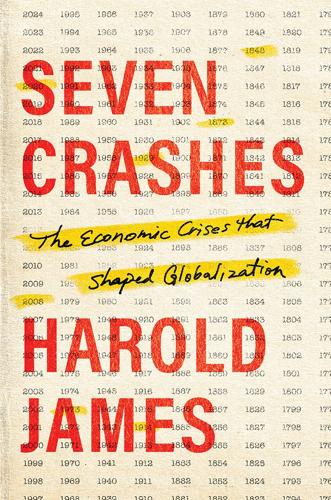
Seven Crashes: The Economic Crises That Shaped Globalization
by
Harold James
Published 15 Jan 2023
But there would no longer be a pressing motive why one country need force its wares on another or repulse the offerings of its neighbour, not because this was necessary to enable it to pay for what it wished to purchase, but with the express object of upsetting the equilibrium of payments so as to develop a balance of trade in its own favour.89 The second Keynesian vision is of a world with radical financial instability. That was the mechanism that destroyed the international system in the Great Depression, and it was one that would reemerge after the 1970s. The logic of that style of Keynesianism was later articulated most clearly by Hyman Minsky.90 In the 1930s, Keynes was addressing primarily a British debate: some British economists treated the phenomenon of large-scale unemployment as an indication of a permanent oversupply of goods and the complete satisfaction of human wants. In pushing back against this vision, an alternative narrative emerged, in which the problem was created by speculation and business mistakes.
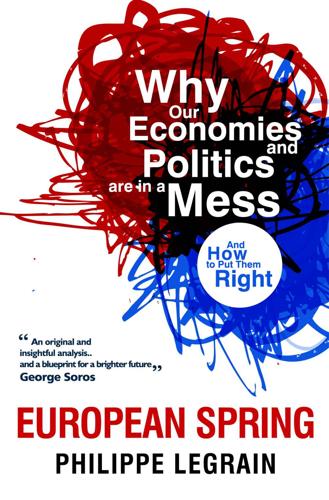
European Spring: Why Our Economies and Politics Are in a Mess - and How to Put Them Right
by
Philippe Legrain
Published 22 Apr 2014
The crisis that began in Asia in 1997 and threatened to drag down the Western financial system a year later was an even louder wake-up call – as I explained in my first book, Open World: the Truth about Globalisation, written in 2001.48 But seduced by the ahistorical, self-serving nonsense that the financial system was “efficient”49 – which entailed that regulation should be minimised and economic models could ignore it entirely – policymakers complacently chose to do nothing. In fact, as thinkers as varied as Kindleberger, Friedrich Hayek, John Maynard Keynes, Hyman Minsky and George Soros have pointed out, the financial system is intrinsically unstable, because it involves bets about an unknowable future that can prove self-fulfilling for a (long) while. That the future is fundamentally uncertain is not a matter for academic debate; it is the essence of the human condition.
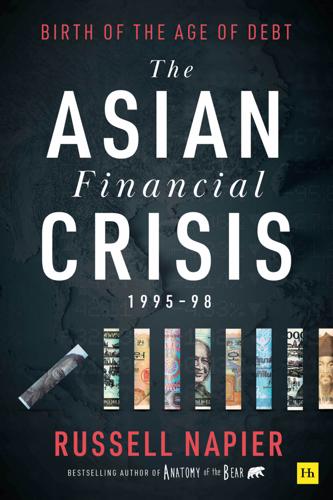
The Asian Financial Crisis 1995–98: Birth of the Age of Debt
by
Russell Napier
Published 19 Jul 2021
This cycle seems to have been repeating since portfolio investors first plunged into emerging market portfolio assets with the liberation of Latin America from colonial rule in the 1820s. Revulsion, pursuit cycling and passionate intensity 3 August 1998, Regional On numerous previous occasions, The Solid Ground has quoted from Professor Kindelberger’s work, which was based on the model created by Hyman Minsky. That model proved useful in indicating that the conditions for a crisis were present. During the crisis it proved useful in indicating that we had not yet reached the conditions which augured the end of the revulsion stage. However, the model now indicates that we are witnessing the end of the revulsion stage and thus the end of the downward swoop in Asian asset prices.
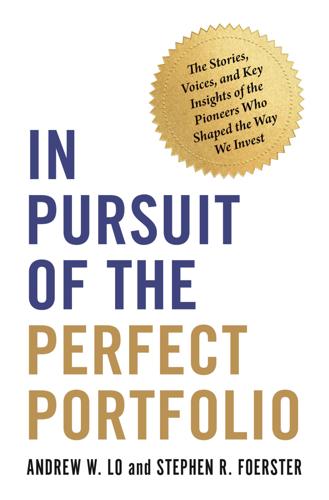
In Pursuit of the Perfect Portfolio: The Stories, Voices, and Key Insights of the Pioneers Who Shaped the Way We Invest
by
Andrew W. Lo
and
Stephen R. Foerster
Published 16 Aug 2021
The late economic historian and professor of international economics at MIT, Charles Kindleberger, wrote the definitive narrative on these questions, the 1978 classic Manias, Panics, and Crashes: A History of Financial Crises, followed by numerous updated editions.42 In his last edition, Kindleberger chronicled thirty-eight major financial crises between 1618 and 1998. To describe the cause of these crises, he built upon a model developed by Hyman Minsky, an economics professor at Washington University in St. Louis. According to Minsky, a financial crisis starts with some kind of exogenous shock or displacement to the macroeconomic system, such as a war, a major crop failure, or a new invention with pervasive effects. Opportunities for profits develop in some areas and close down in others.

The Quiet Coup: Neoliberalism and the Looting of America
by
Mehrsa Baradaran
Published 7 May 2024
Cryptocoins and NFTs are not recognized by the U.S. legal system as assets; rather, their value is conferred exclusively by the blockchain community, which created its own pseudo-legal enforcement mechanisms. An especially fervent community of NFT boosters hyped the new asset, pushing up its yield. As economist Hyman Minsky explained it: “Everyone can create money; the problem is to get it accepted.” It worked so long as people believed it worked, which is also true of most forms of money and capital. Their extralegal character notwithstanding, the market for NFTs hit over $23 billion in 2021. That year, the NFT for a digital collage created by the internet artist Beeple sold at Christie’s for $69.3 million.
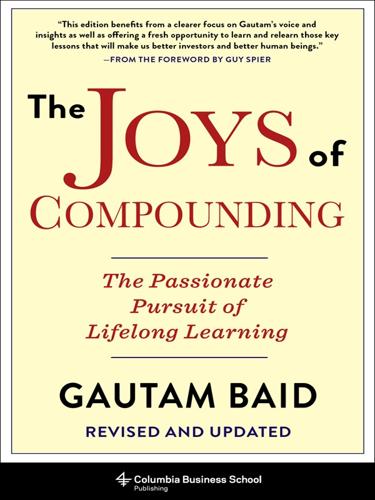
The Joys of Compounding: The Passionate Pursuit of Lifelong Learning, Revised and Updated
by
Gautam Baid
Published 1 Jun 2020
LTCM assumed that historical patterns in the relationship of certain assets would persist forever and leveraged its positions by more than 25 to 1. When those patterns changed for just a brief period, LTCM blew up. In 2017, the S&P 500 did not have a 5 percent drawdown even once, and volatility was nearly nonexistent. But, as economist Hyman Minsky said, in the financial markets, “stability often breeds instability.” Tranquil environments tend to lull us into a state of utter complacency and set us up for some nasty surprises. On February 5, 2018, volatility, measured by the CBOE VIX (also known as the “Fear Index” on Wall Street), suddenly exploded a record 118 percent in a single day to the highest levels since the Lehman Brothers crisis.
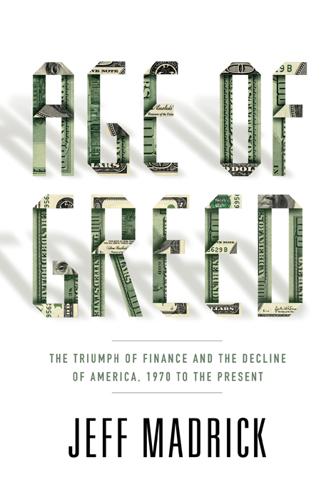
Age of Greed: The Triumph of Finance and the Decline of America, 1970 to the Present
by
Jeff Madrick
Published 11 Jun 2012
Much the same level of speculation, often reaching absurd proportions, took place in the 1920s and set in place some of the conditions for the Great Depression. Over the years, these concerns were minimized and then forgotten. The writings of economists like John Kenneth Galbraith, Charles Kindleberger, and Hyman Minsky were neglected in favor of explanations more congenial to those who believed that unfettered free markets worked best. Fortunately, one major lesson of the 1930s was not entirely forgotten—the Keynesian lesson that government must intervene in times of crisis like the one that overwhelmed the nation in 2007 and 2008.

The Making of Global Capitalism
by
Leo Panitch
and
Sam Gindin
Published 8 Oct 2012
He consistently justified the Fed’s indispensability as the main regulator and overseer of America’s payments system in terms of its being able to act quickly in the face of inevitable financial crises: the key thing was to have “flexible institutions that can adapt to the unforeseeable needs of the next crisis.”3 Treasury Secretary Robert Rubin sounded like he had been schooled by Hyman Minsky’s Stabilizing an Unstable Economy rather than Milton Friedman’s Capitalism and Freedom. Rubin’s “whole adult life experience” at Goldman Sachs taught him that capitalist finance could be understood as moving from one state of crisis to another: “[W]hen you have good times, there is an inherent tendency in markets, grounded in human nature and the pull of fear and greed, to go to excess.”4 The central theme of the main study the Treasury sponsored in the 1990s on the strengths and weaknesses of the US financial system was that the key role of the state needed to be one of “failure containment” rather than “failure prevention.”5 Together with the Federal Reserve, it also increasingly assumed the global lender-of-last-resort role when competitive capitalist actors revealed their lack of collective class discipline by running for the exits in the major financial crises of the 1990s.
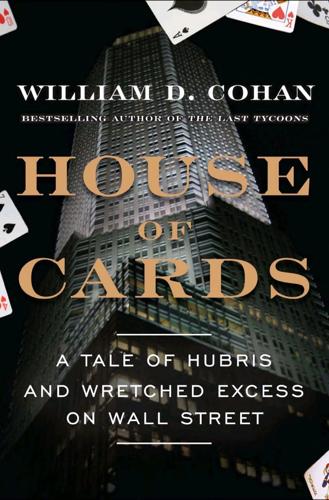
House of Cards: A Tale of Hubris and Wretched Excess on Wall Street
by
William D. Cohan
Published 15 Nov 2009
Without the uptick rule, stocks are susceptible to “bear raids,” where short sellers can overwhelm a stock in huge surges of selling that intimidate buyers from stepping in. This creates a panic that can spiral ever downward. For banks and securities firms, where the confidence of counterparties is essential, the death spiral can indeed be irreversible. To Schwartz, the near-collapse of the global financial system was caused by many factors, from Hyman Minsky's financial instability hypothesis—which suggests that whenever the economy is stable for a long period, the financial markets create their own instability—to the dramatic and unprecedented surge of global wealth. “If you go back to the period from 1970 to 1974,” he told his friends, “there was a doubling of commodity prices.
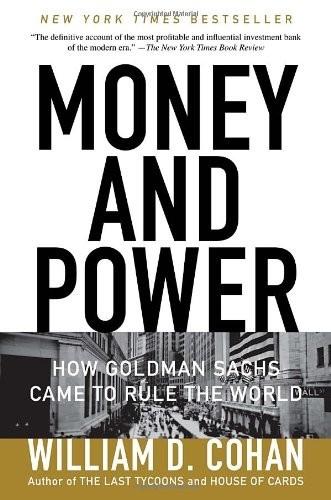
Money and Power: How Goldman Sachs Came to Rule the World
by
William D. Cohan
Published 11 Apr 2011
Politicians need cash, and bankers crave power, if only to prove to themselves they have a higher purpose than becoming obscenely wealthy. In 1991, while he was still an economics professor at Harvard, Summers wrote an influential chapter, “Planning for the Next Financial Crisis,” that appeared in a book published by the National Bureau of Economic Research. Other chapters in the book were written by economists Hyman Minsky, Paul Volcker, William Poole, and Paul Samuelson, Summers’s uncle. “It used to be said that a repeat of the depression of the 1930s was inconceivable now that governments better understood how to manage their economies,” Summers wrote. “Yet, both Latin America and Europe have suffered economic downturns during the 1980s on a scale comparable to the 1930s.